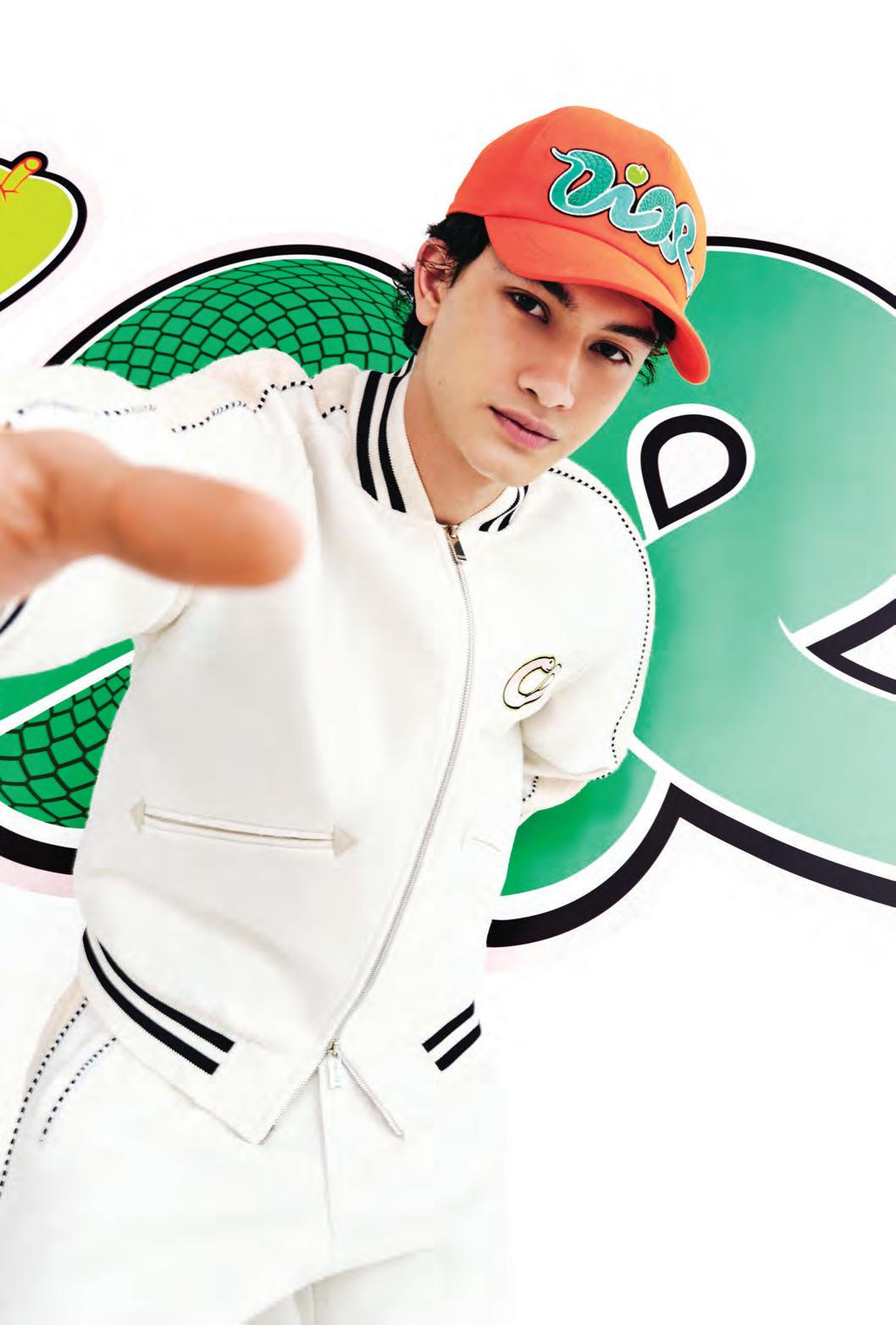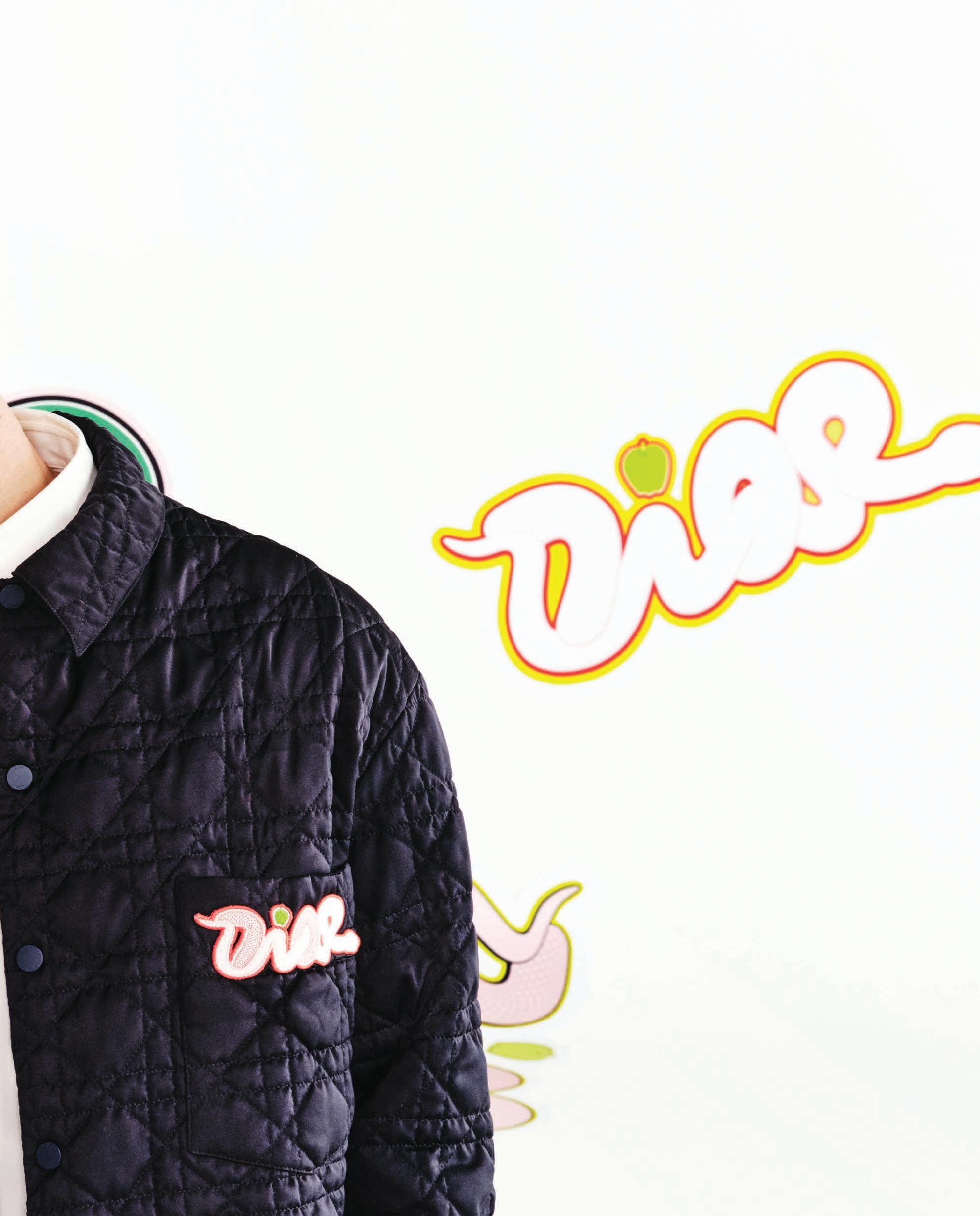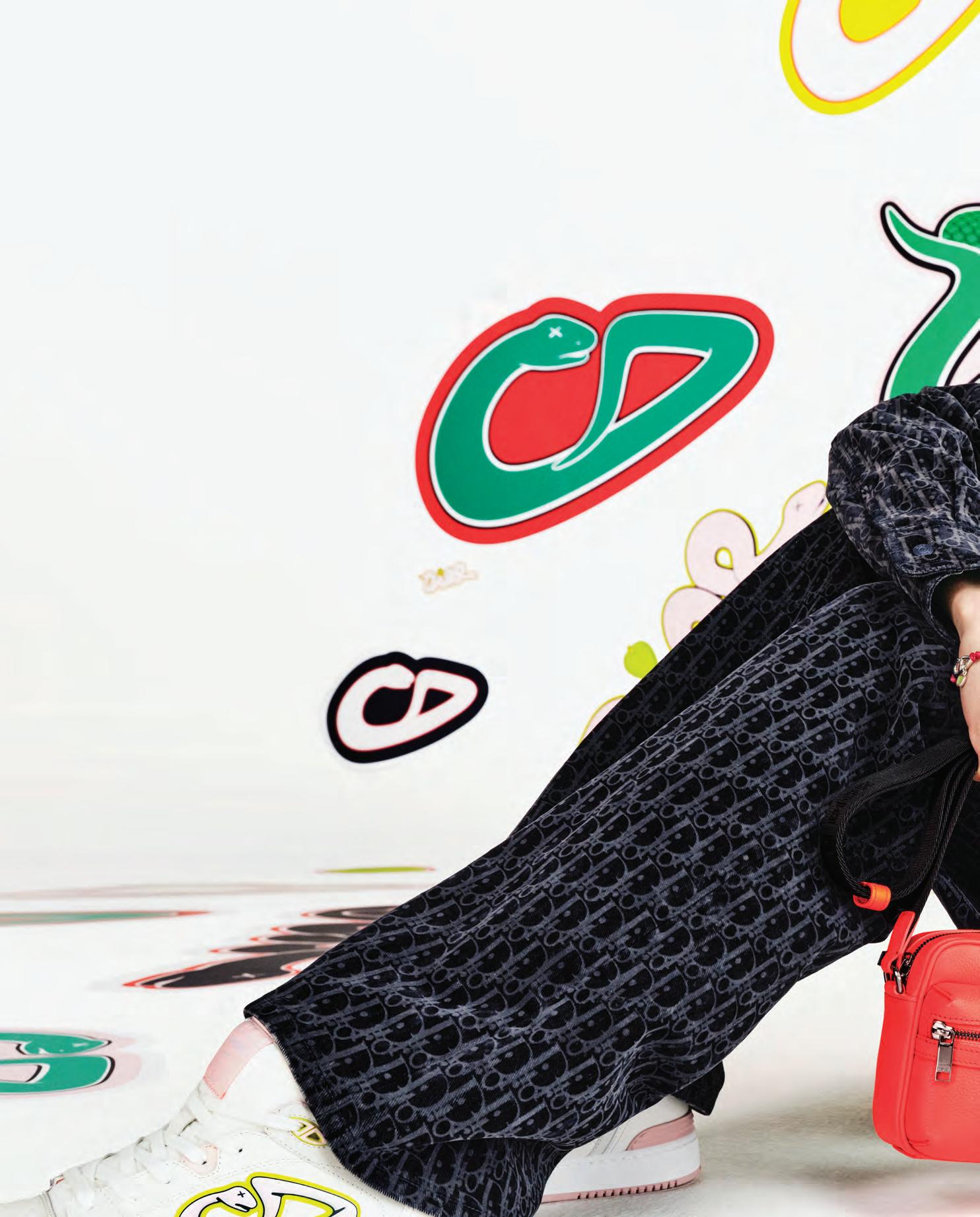The Art & Film Issue








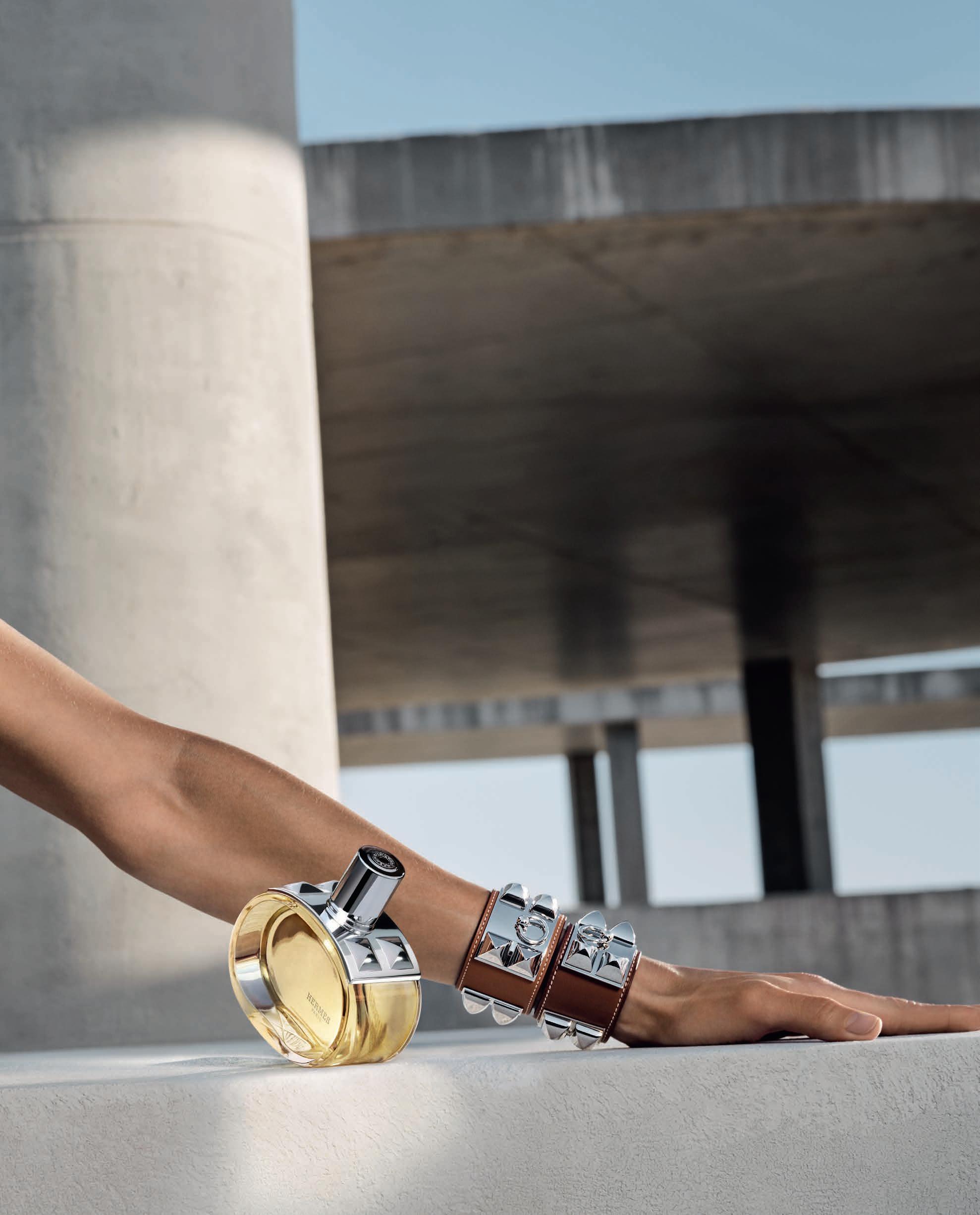
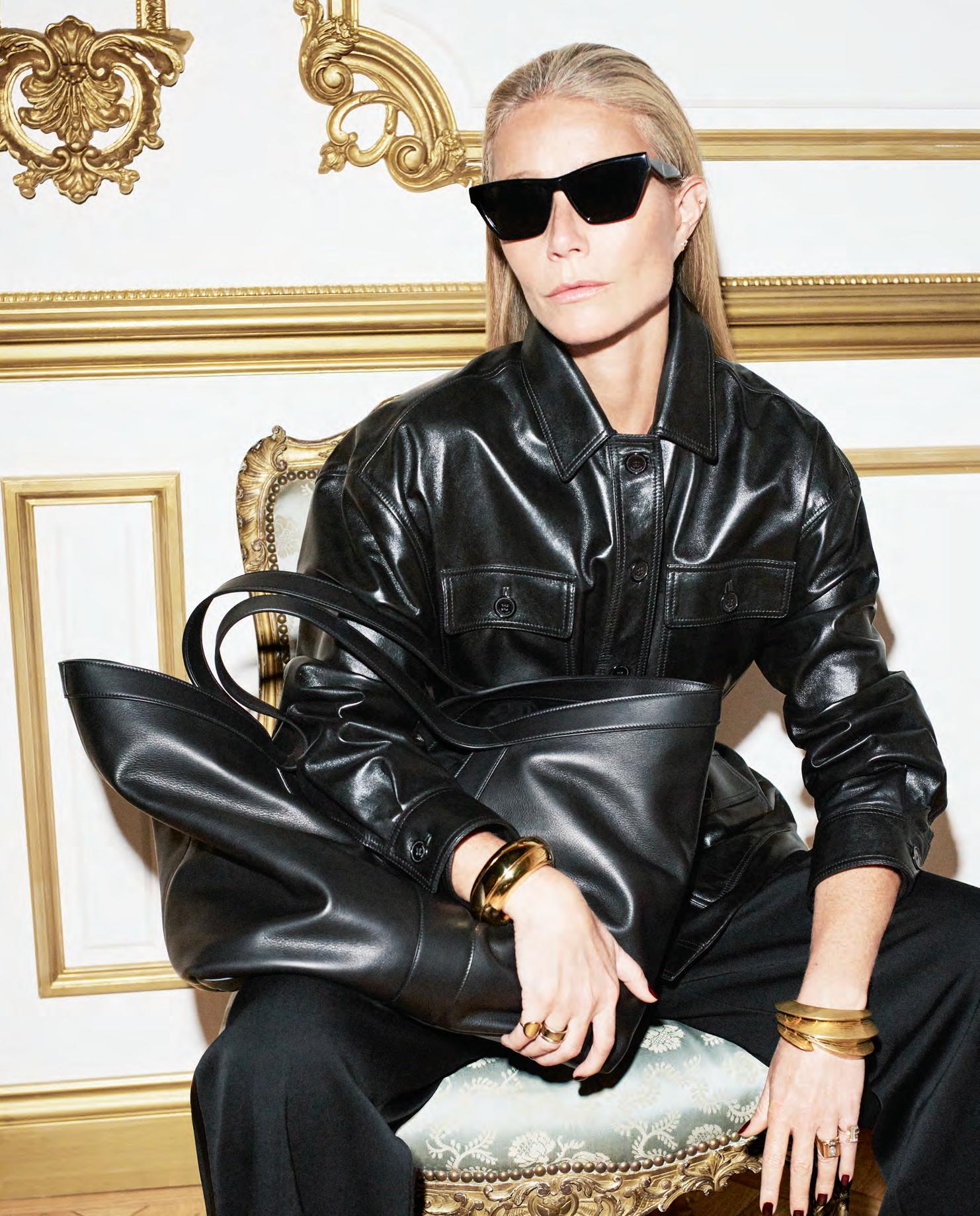

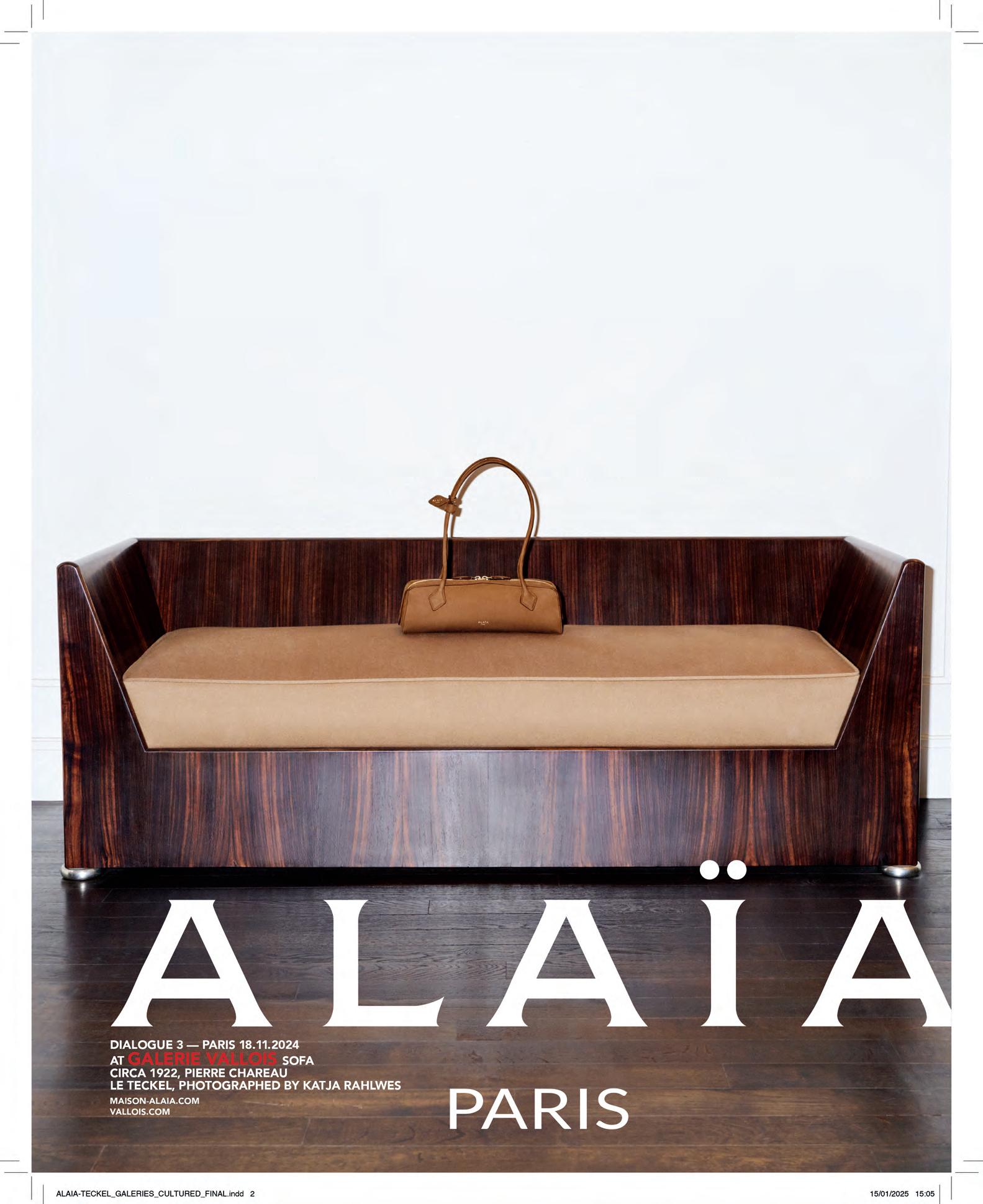


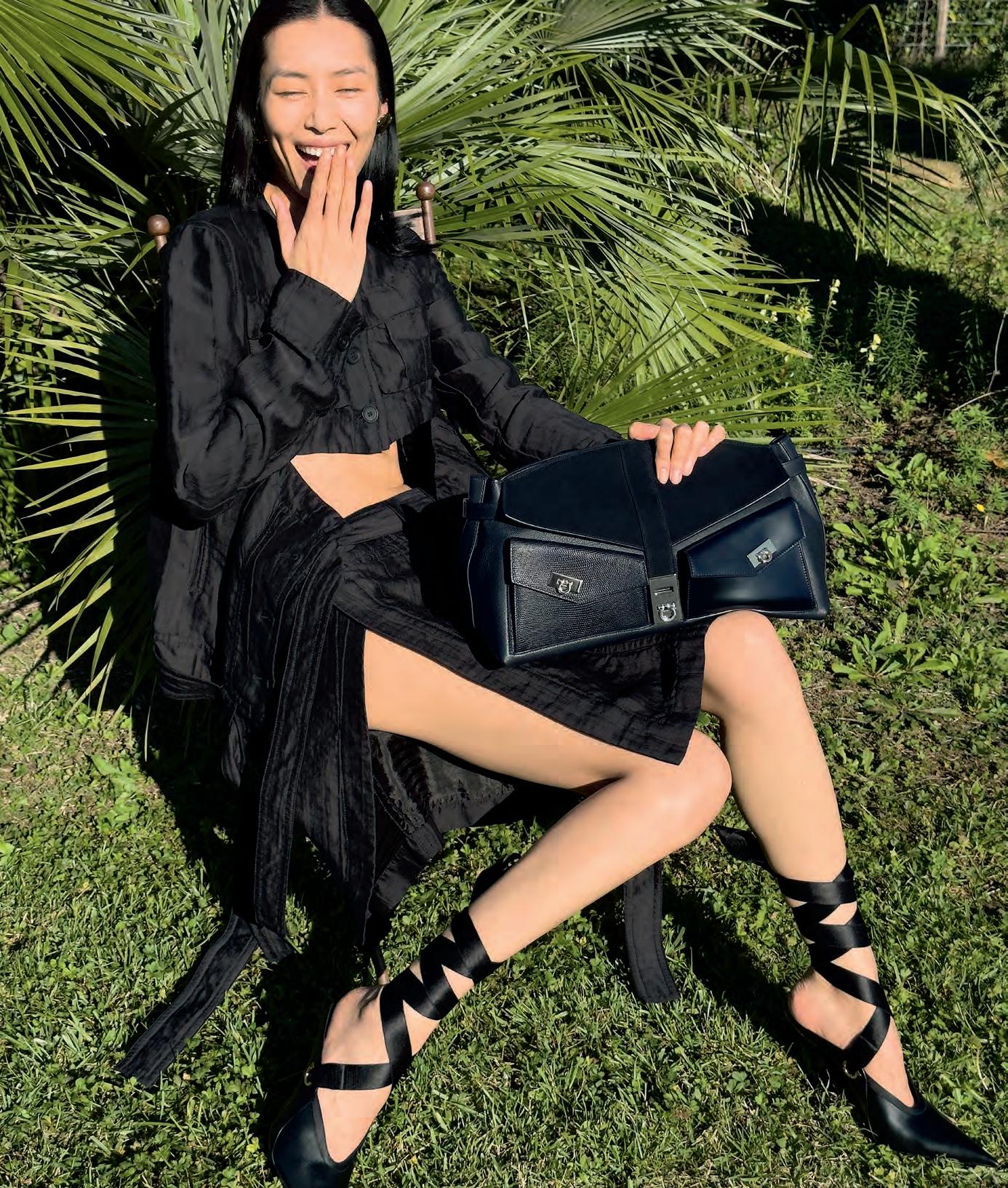












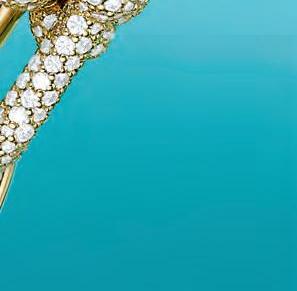












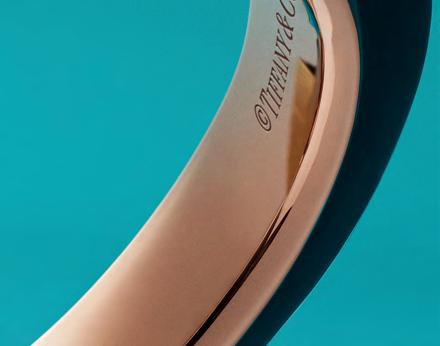



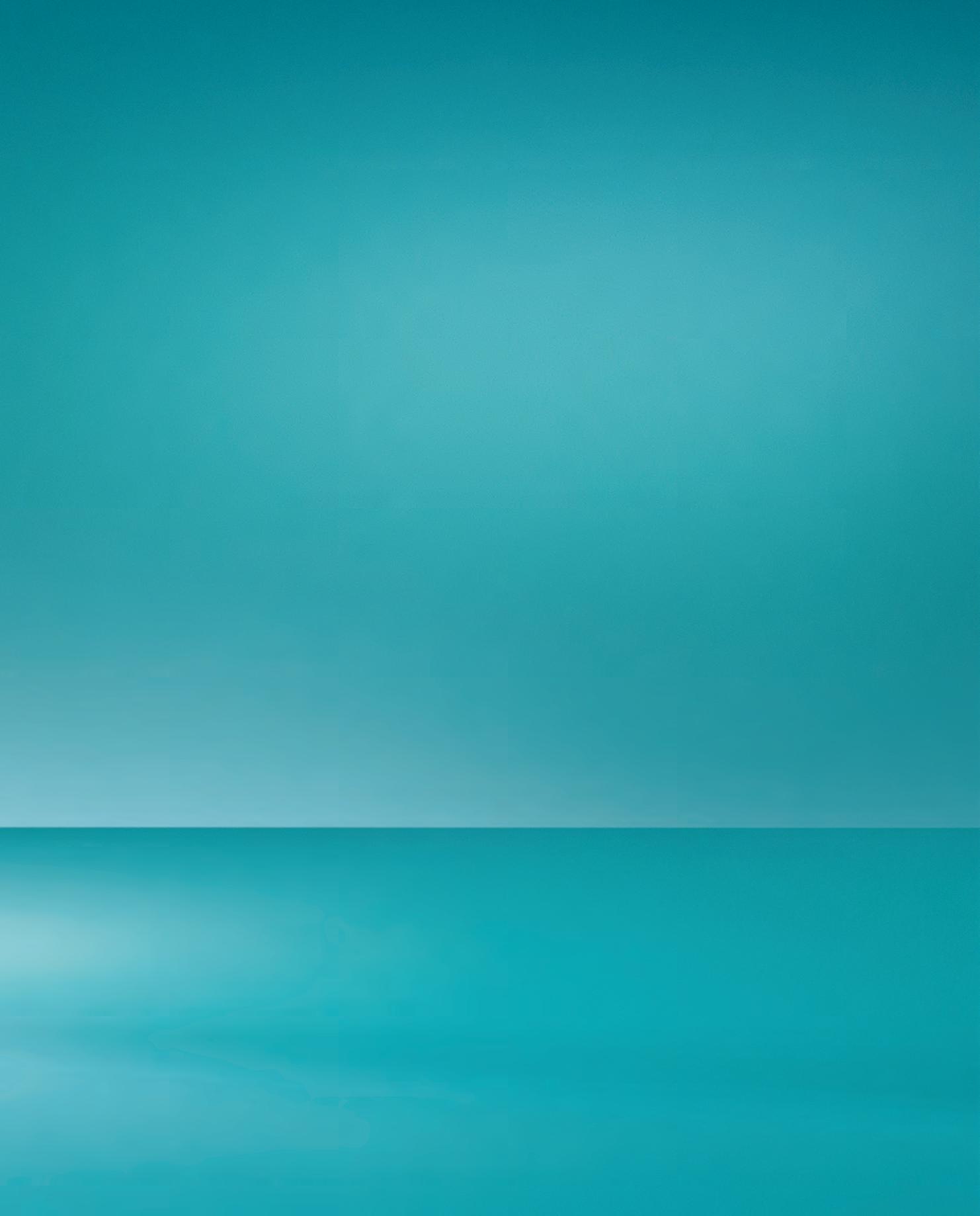



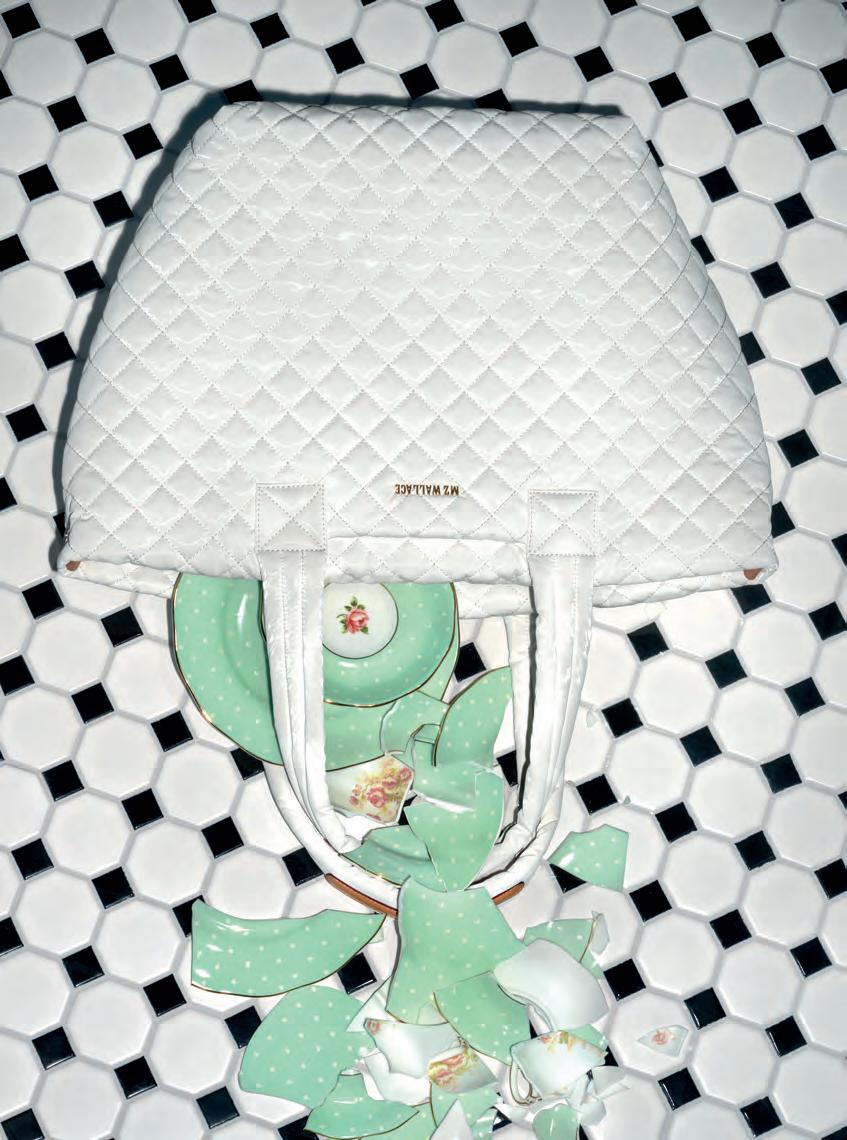



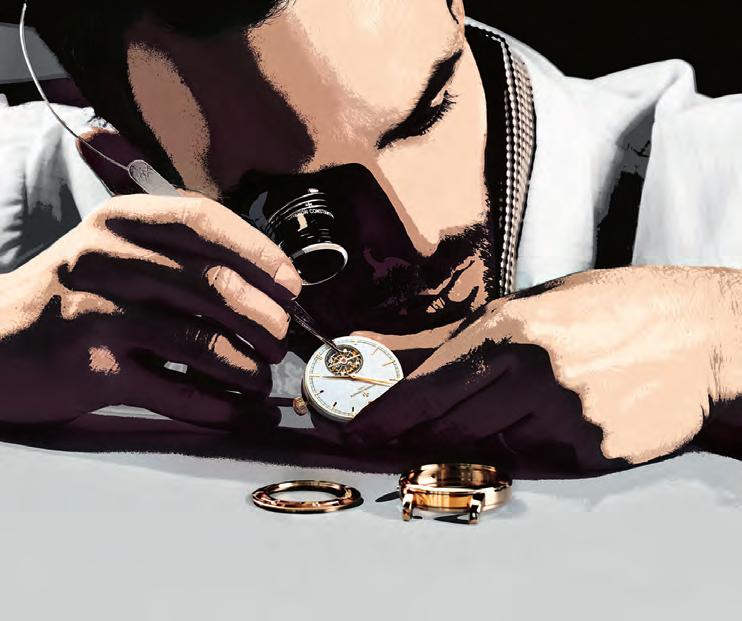
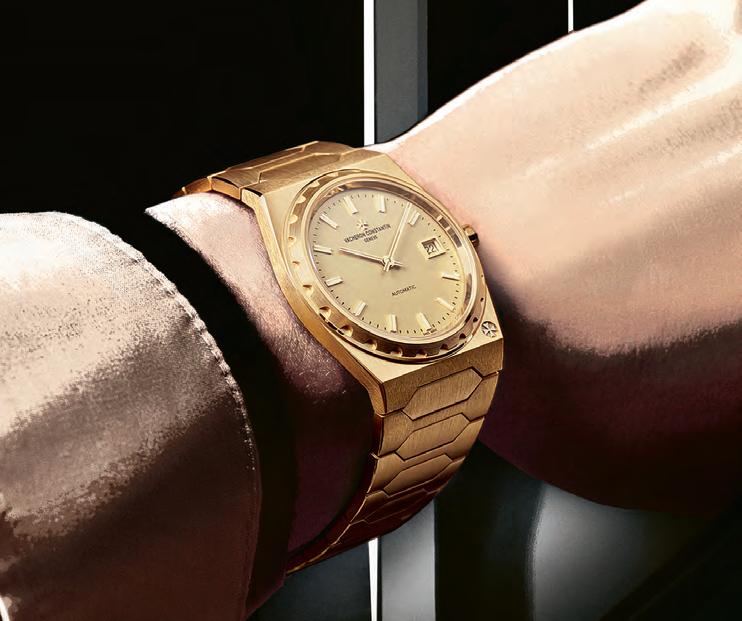
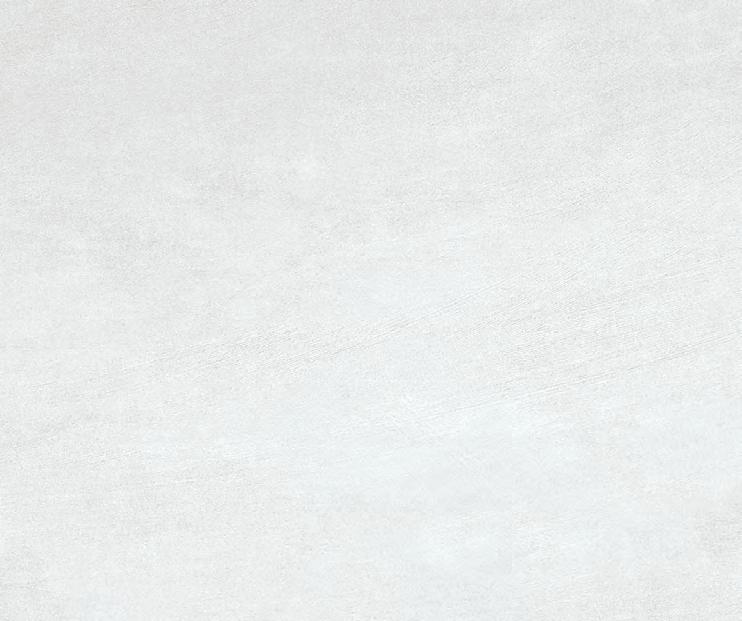



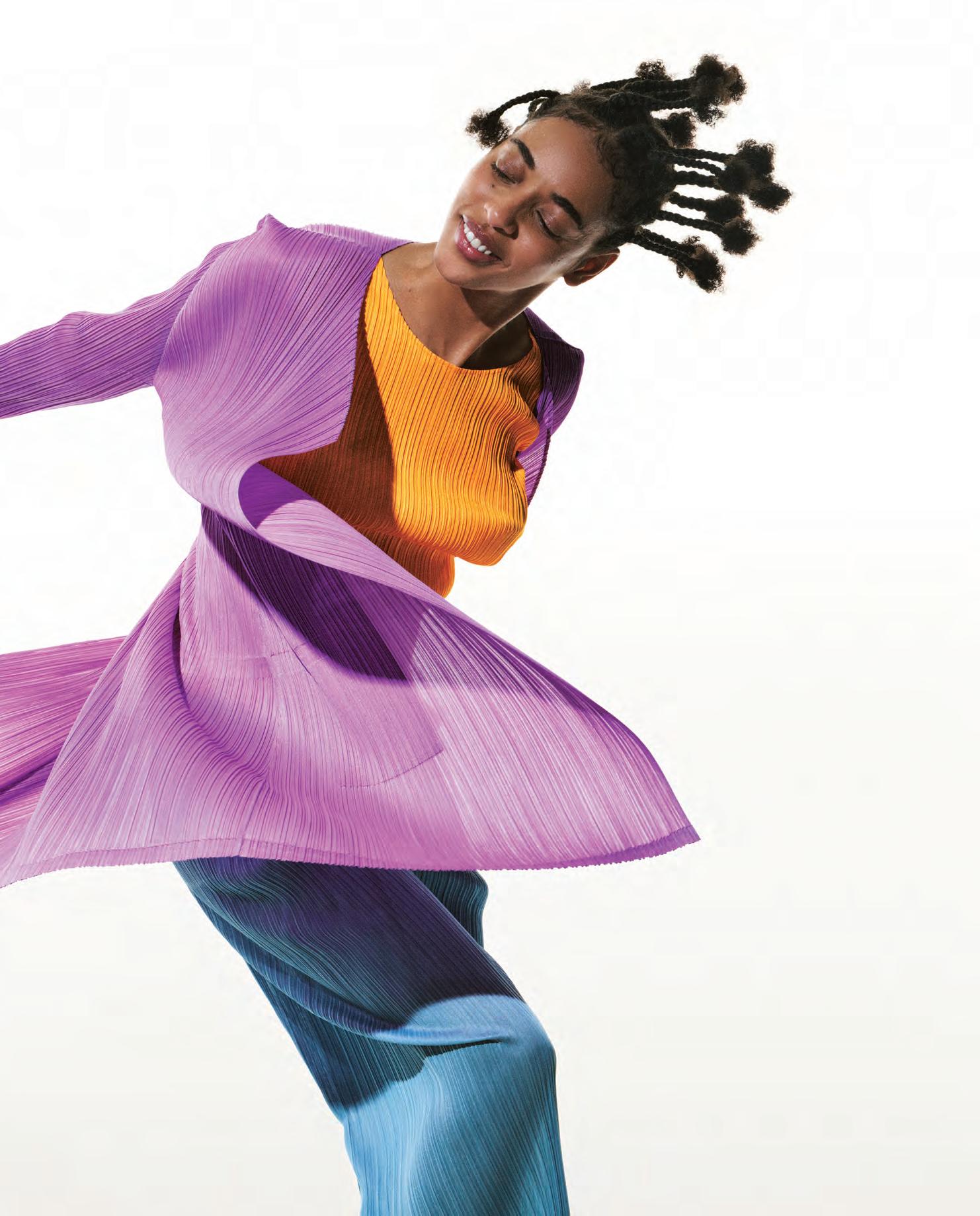
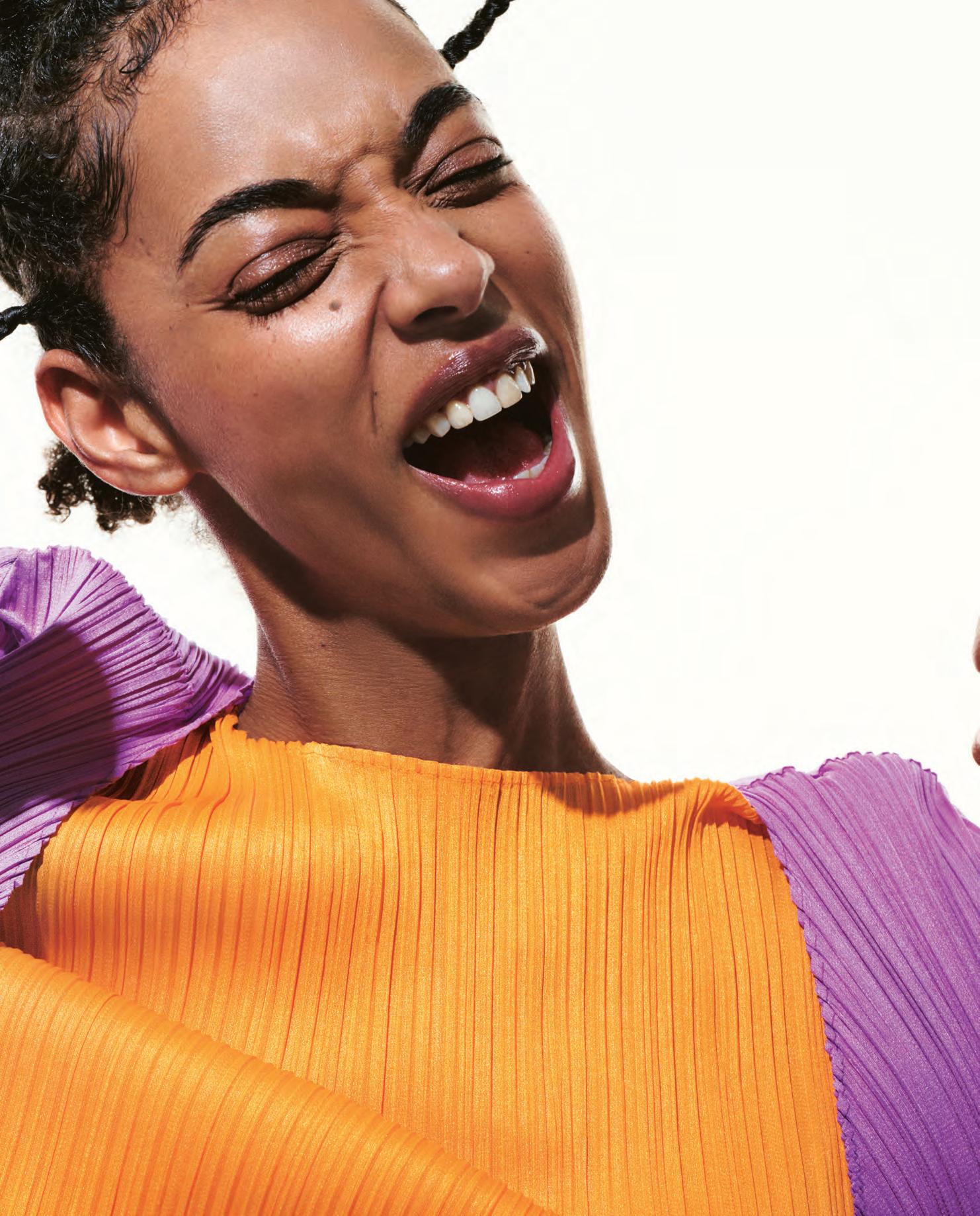

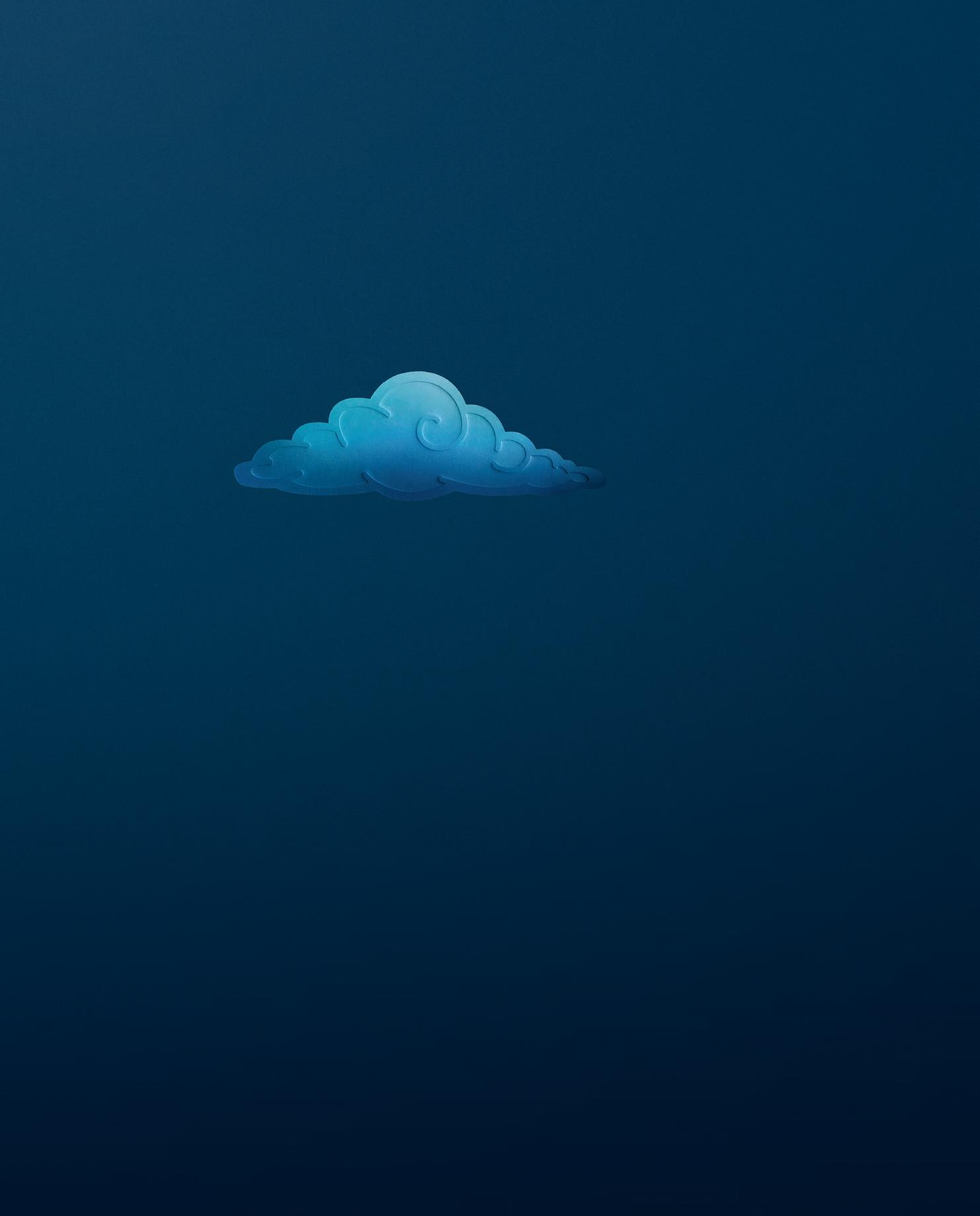
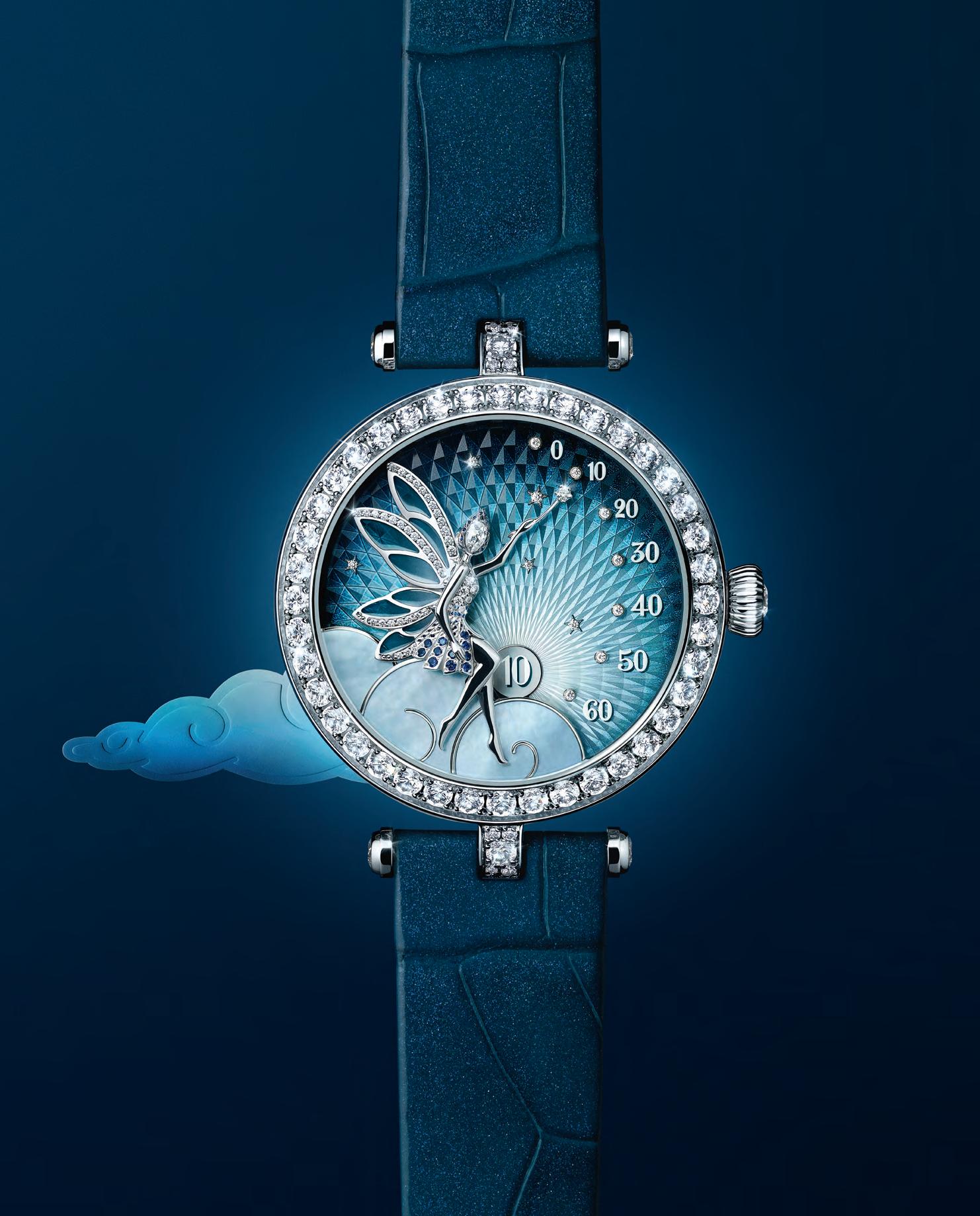


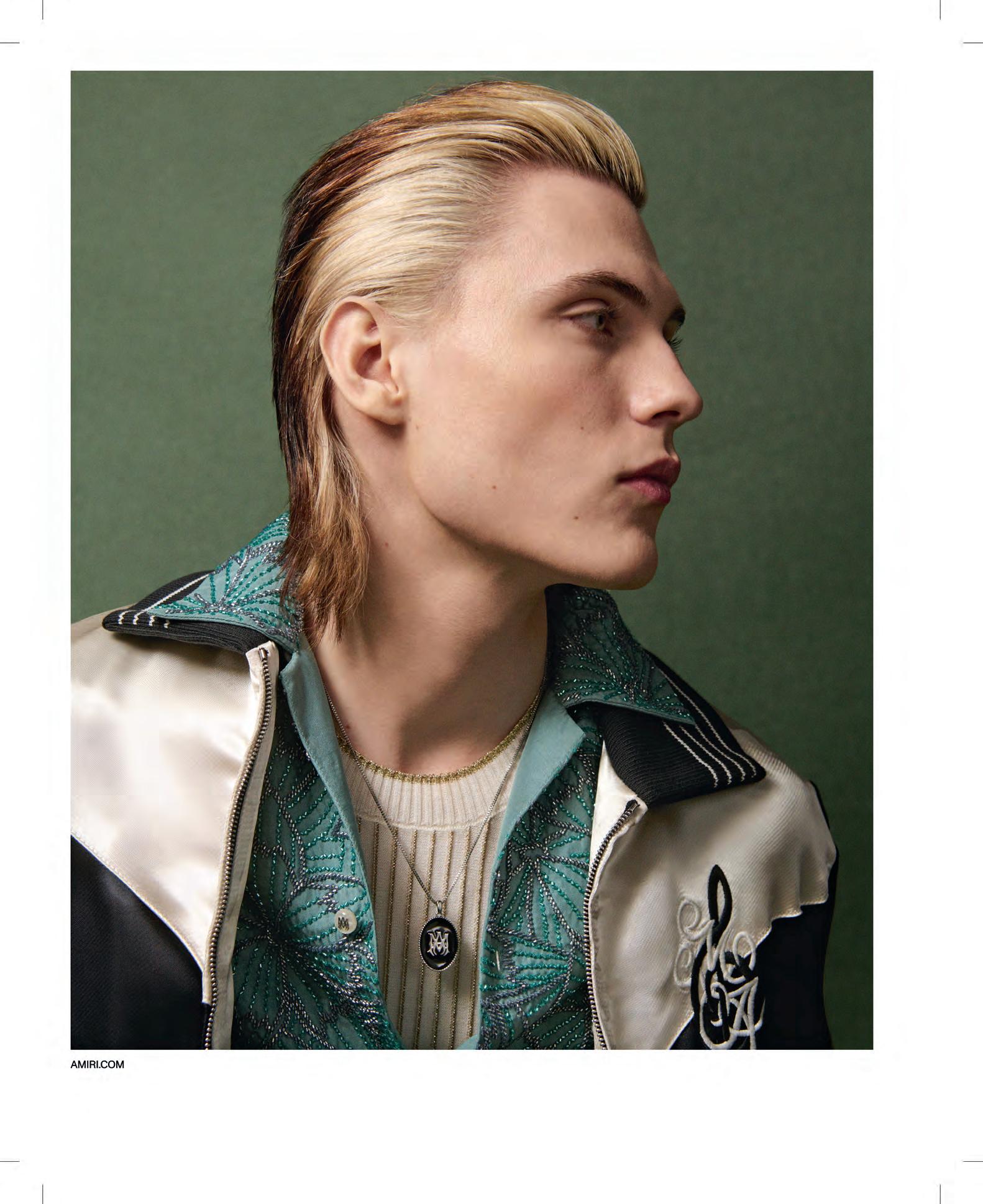
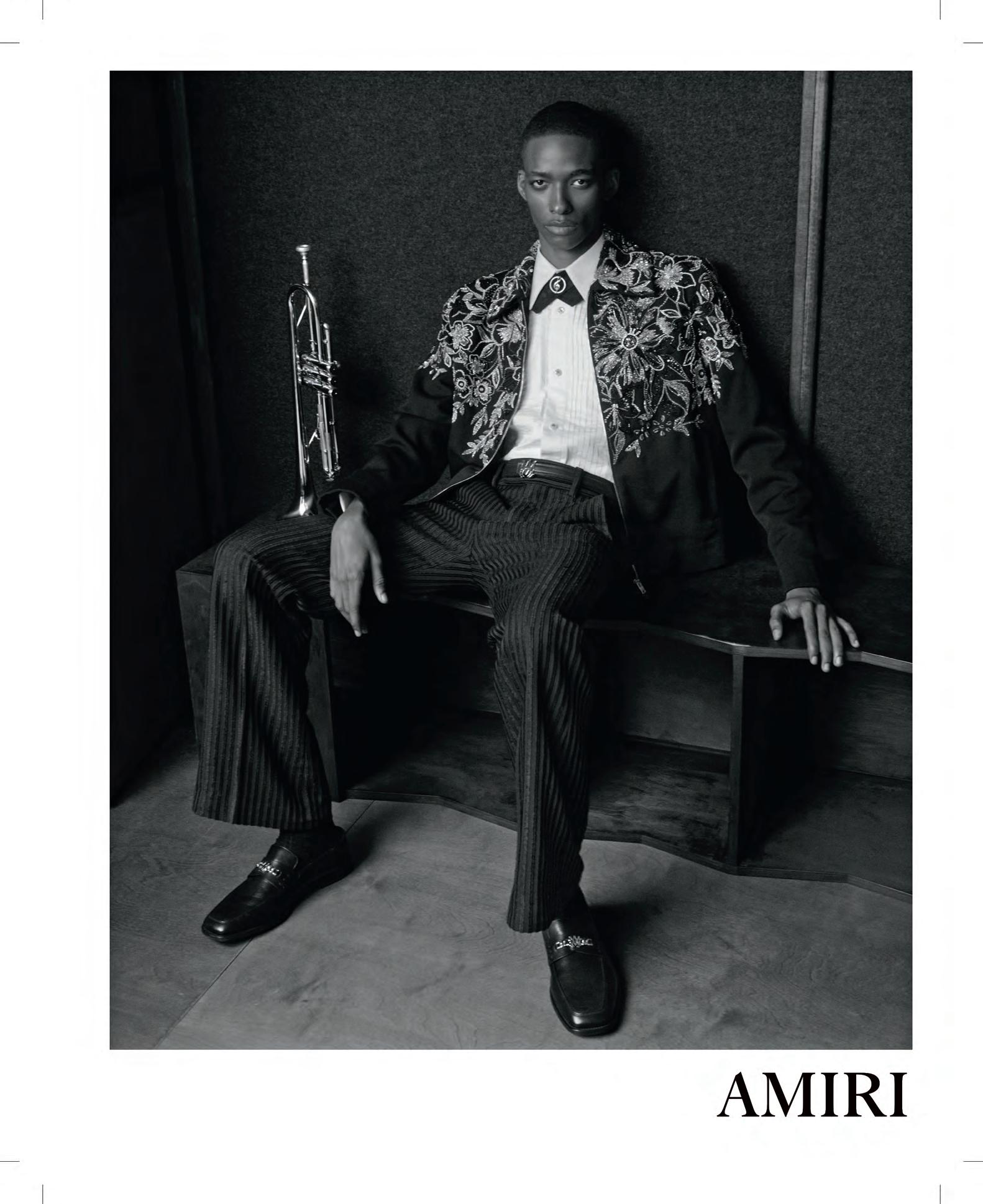






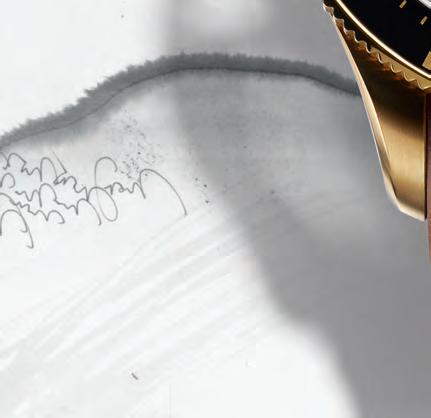



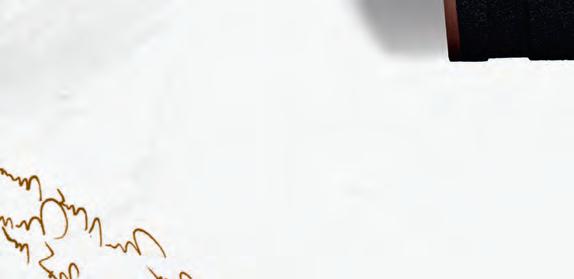


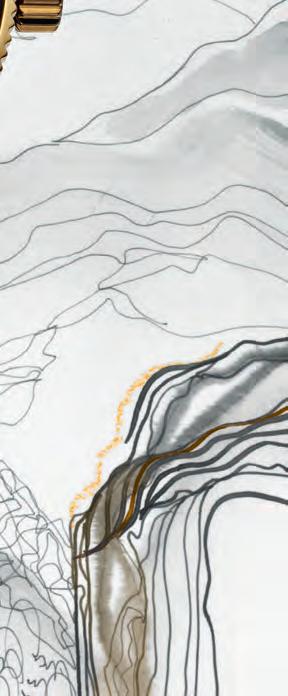


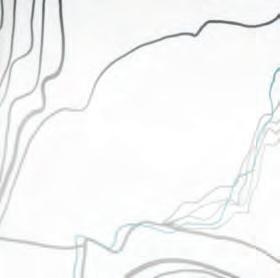




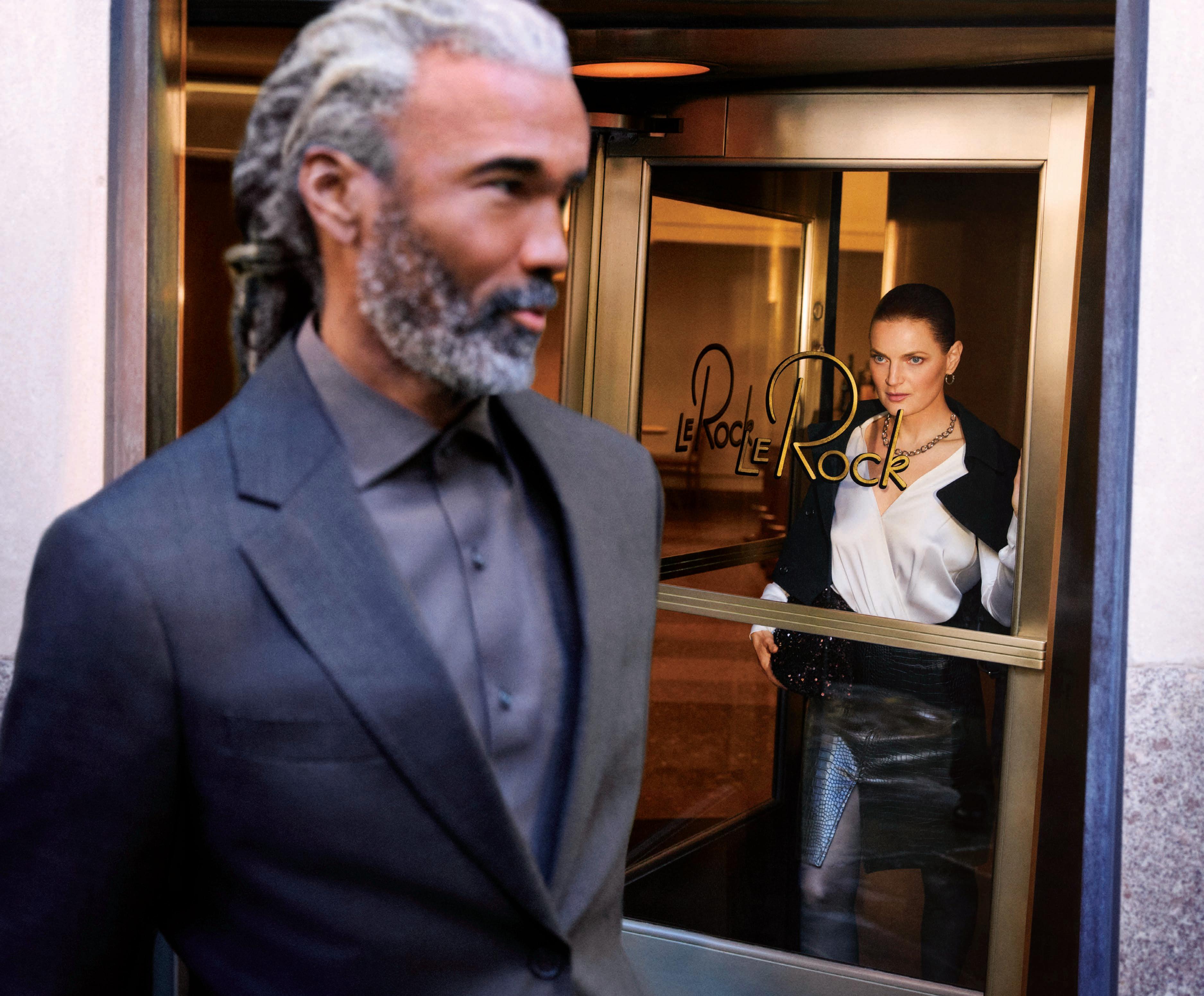

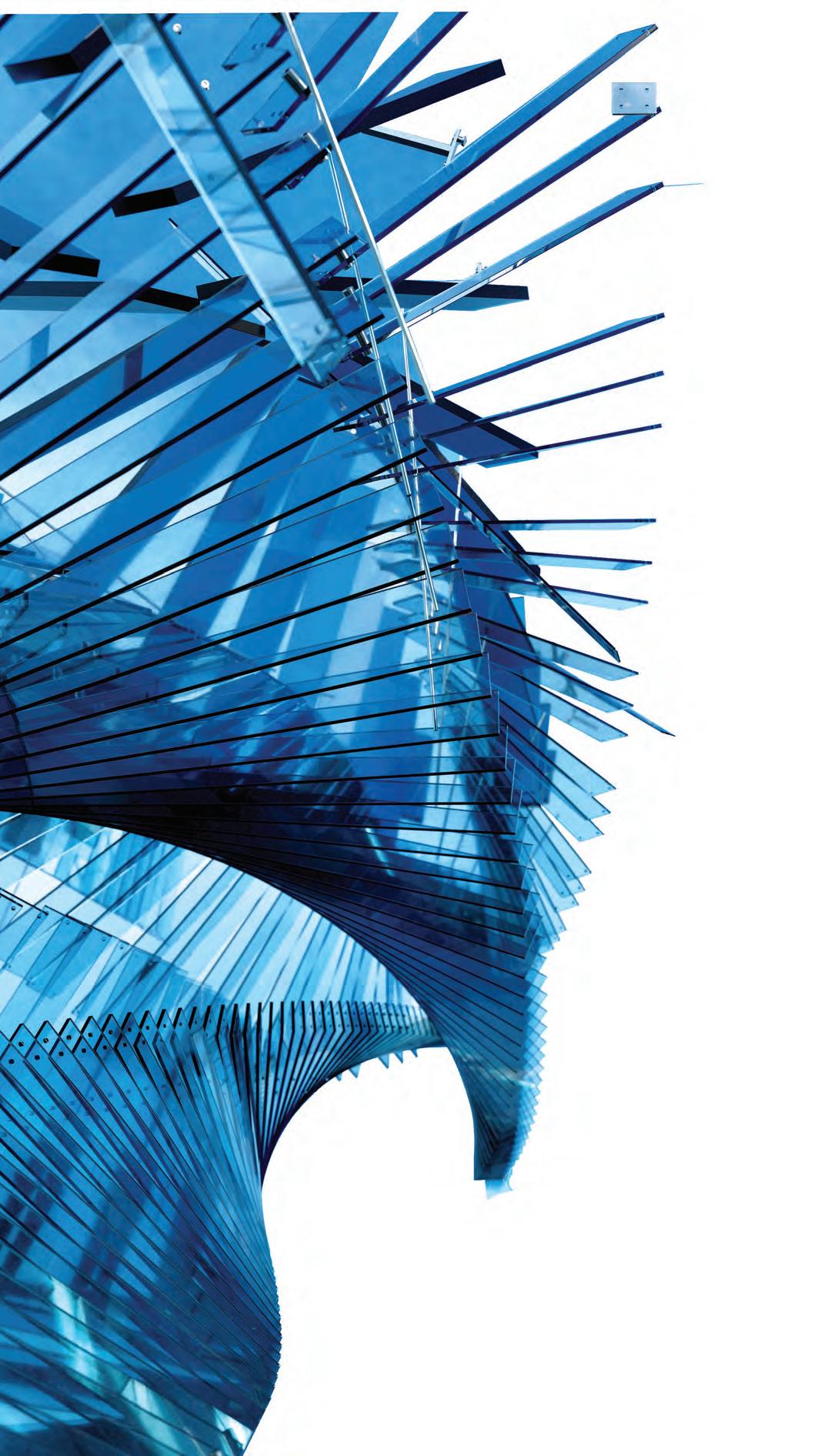




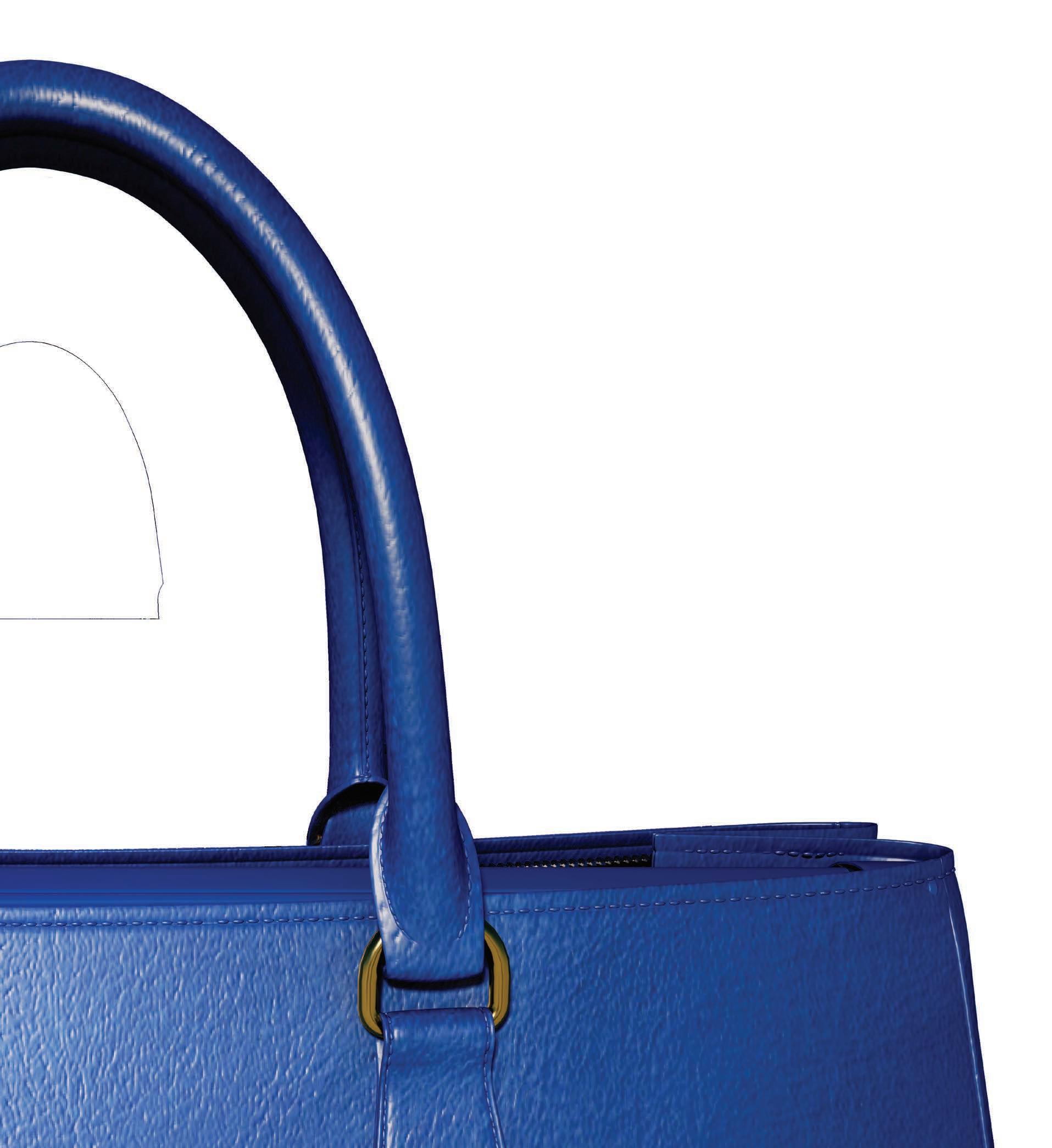


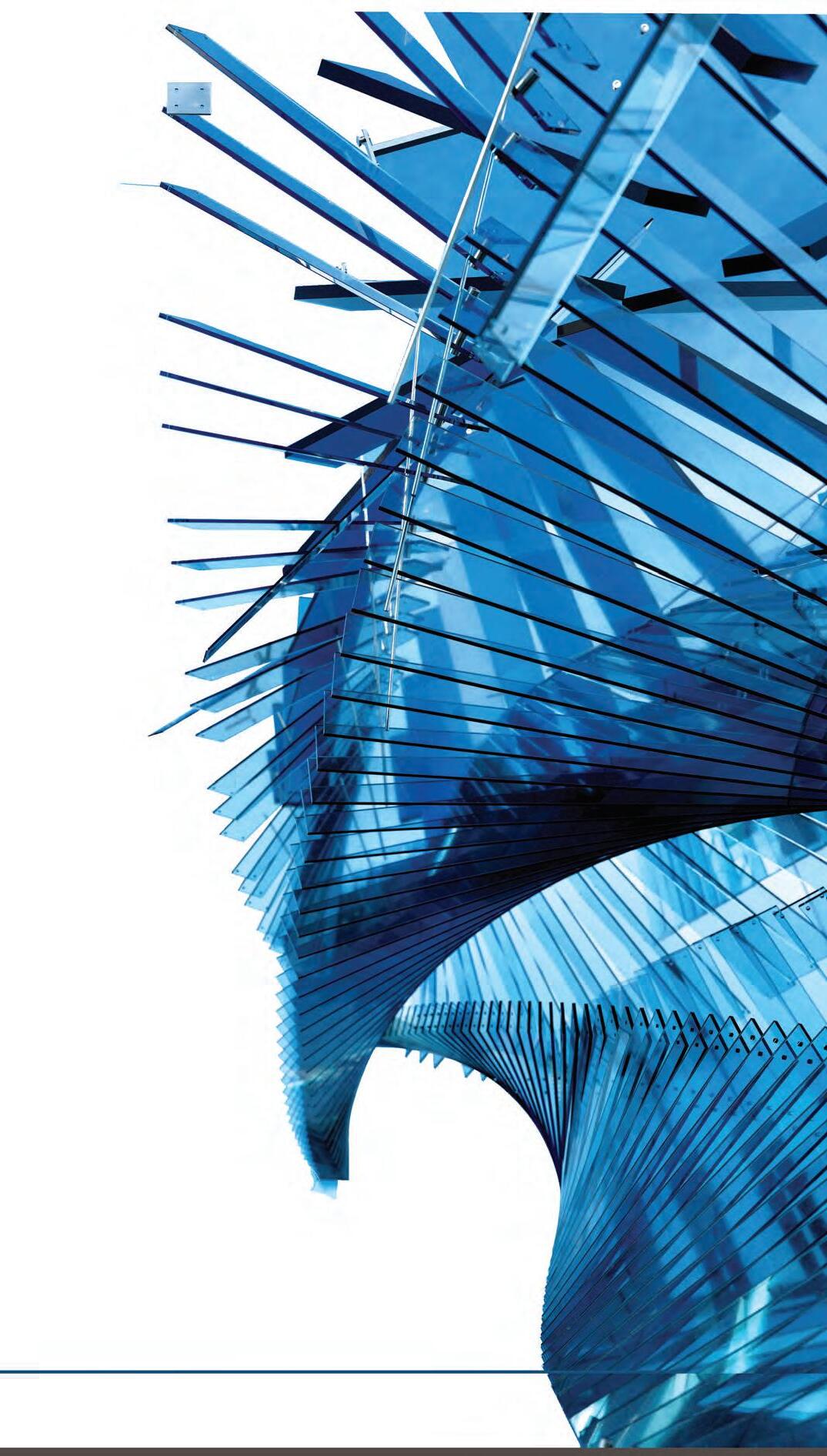

February / March 2025
62
ALICE COLTRANE’S ETERNAL NOW
At the Hammer Museum, a new exhibition takes on the legacy of the legendary jazz musician and devotional leader.
A BRAZILIAN ARTIST TAKES NEW YORK
This spring, the Guggenheim will open a show dedicated to the kaleidoscopic oeuvre of Beatriz Milhazes. 64
66
74
FASHION ON A LEASH
The adage goes that pets look like their owners—but when it comes to the fashion world, where appearance is the highest form of expression, the connection runs even deeper.
IGNORANCE IS BLISS—UNTIL IT’S NOT
In her latest film, Magic Farm, artist Amalia Ulman takes Chloë Sevigny and Alex Wolff down to Argentina.
LOVE ME, LOVE ME NOT
Writer-director Cazzie David’s latest project, a romantic comedy run amok, examines the dark side of modern relationships. 76
78
ROBERT NAVA LEARNS HOW TO HOLD BACK
The artist, who found fans and detractors during the recent market boom, cautiously returns to the art-world stage.
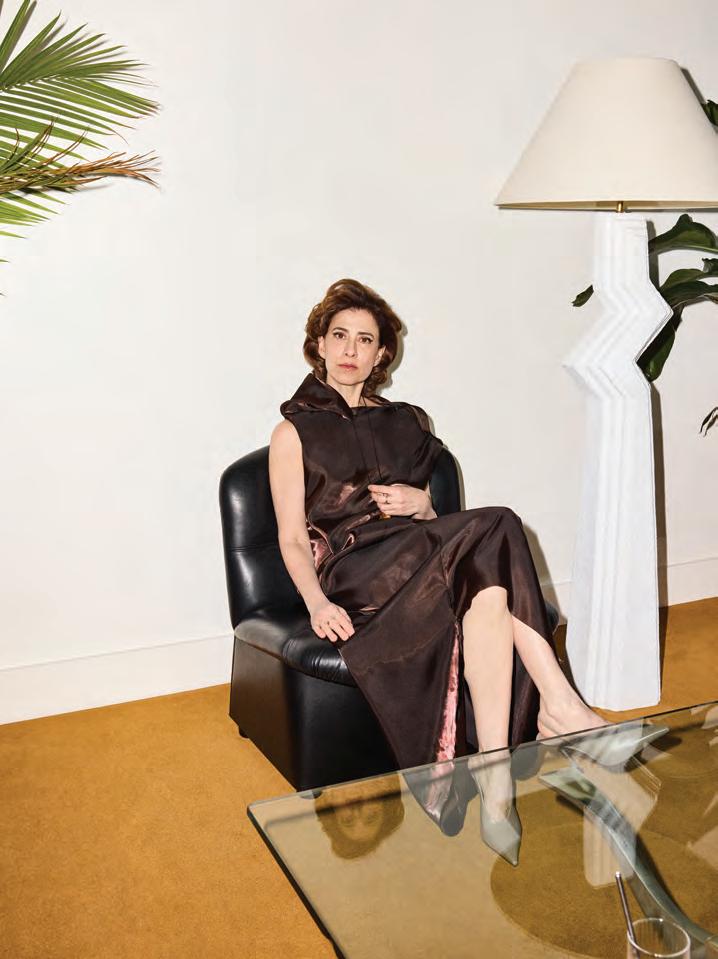
80
82
BELIEVE, AND DOUBT AGAIN
Serpentine’s spring exhibition, Arpita Singh’s first solo outside of India, celebrates the singular artist’s six-decade journey.
THE IMPORTANCE OF BEING PIPPA
Our critic remembers the singular body of work and life left behind by the late Pippa Garner.
84 ALL TOGETHER NOW
88
MALCOLM PEACOCK IS THIS YEAR’S YOUNG ARTIST PRIZE WINNER
The New York–based artist was selected by a panel of jurists composed of Legacy Russell, Ruba Katrib, and Kelly Taxter.
For this year’s edition of Frieze Projects, eight Angeleno artists hold a mirror to the city that inspires their work.
90 FERNANDA TORRES PHOTOGRAPHED IN NEW YORK BY JEREMY LIEBMAN WEARING A DRESS BY ISSEY MIYAKE, NECKLACE BY TIFFANY & CO., AND SHOES BY JIMMY CHOO.
PERMISSION TO PLAY
In 1998, Del LaGrace Volcano brought four friends to London’s Hampstead Heath—a wellknown cruising ground—for a photo shoot. Thirty-seven years later, the images are being given a new life with Queer Dyke Cruising.

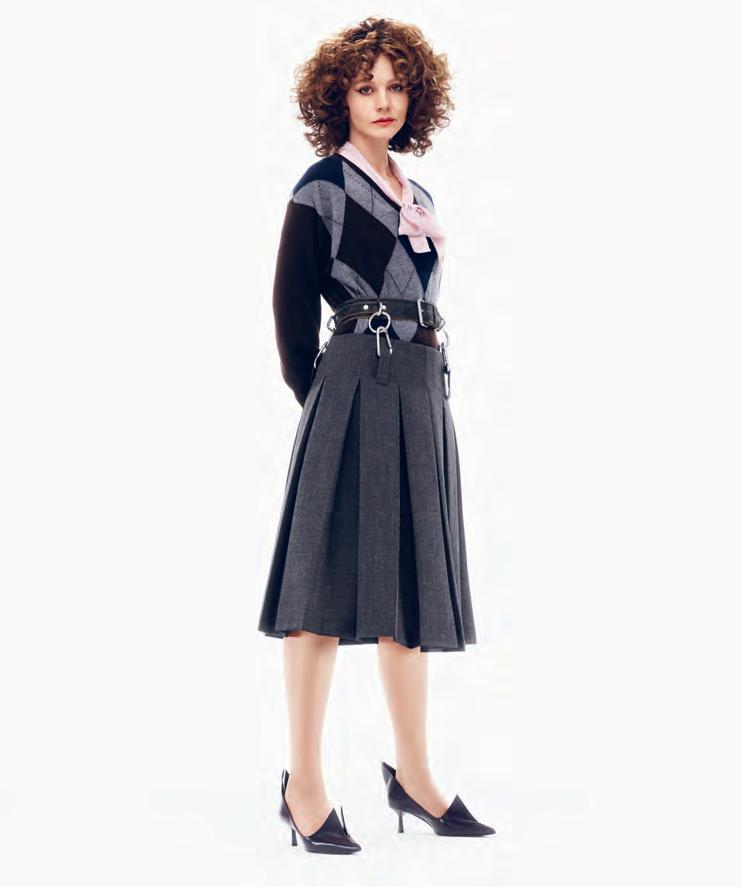


February / March 2025
TEAM SPIRIT
As comedian Aidy Bryant prepares for her second run as host of the 40th annual Film Independent Spirit Awards, she calls up fellow two-time host Nick Kroll for some last-minute advice.
NATASHA ROTHWELL BARES IT ALL
A decade into her career, the White Lotus actor and How to Die Alone creator is renewing her commitment to challenging herself—and the film and television industry—at the same time.
ON ARTISTS’ TIME
For the newest edition of its Artist Series, Movado enlists Derrick Adams.
CULTURED’s co-chief art critic talks to the collector and gallerist about buying a Van Gogh and starting a museum on Mars.
POSH DRENCH OF THE BURBERRY TRENCH
One writer dissects the outer garment’s undying glamour.
ALI ABBASI’S NERVES OF STEEL
The Danish-Iranian director is no stranger to challenging subjects. But The Apprentice tested his resolve.
FERNAN DA TORRES’S BEMUSED VICTORY LAP
The actor is already a legend in her native Brazil. Now, Hollywood is catching up.
MARISA ABELA ON THE ART OF LOSING CONTROL
The 28-year-old actor holds her own against Cate Blanchett and Michael Fassbender in Steven Soderbergh’s new spy flick.
HOLLYWOOD’S NEW GUARD
In a culture quick to dole out attention, true fame—that alchemic mixture of mystique and staying power—feels more elusive than ever.



February / March 2025
148
152
158
162
LUCA GUADAGNINO’S GRAND DESIGNS
The filmmaker picks the brain of an artist he’s long admired—German photographer Thomas Ruff.
THROUGH THE LOOKING GLASS
Following the breakout success of his latest film, Anora, Sean Baker has solidified his status as the consummate outsider-insider.
CALL HER DADDY
In her zeitgeisty follow-up to 2022’s Bodies Bodies Bodies, director Halina Reijn skewers the sexual topography of middle age.
FLEA MARKET TREASURES FIND A HOME IN THIS HOLLYWOOD HILLS OASIS
Benjamin Trigano’s Los Angeles home, a 1933 construction teetering over Lake Hollywood, is defined by its eclecticism.

170
THREE FASHION CRITICS ON THE FUTURE OF THE FIELD
CULTURED hosts three leading voices —Tim Blanks, Vanessa Friedman, and Rachel Tashjian to compare notes on the changing landscape of fashion journalism.
176
182
SURVIVING AB STRACTION, ONE SCULPTURE AT A TIME
This spring, Torkwase Dyson will bring her transhistorical, sensory-forward touch to two New York institutions: the Metropolitan Museum of Art and Brooklyn Bridge Park.
IT’S OUR HOUSE
Artist Alvaro Barrington and Ferragamo
Creative Director Maximilian Davis compare notes on translating cultural authenticity into something tangible.
188
192
198
ADAM PEN DLETON AND KWAME ONWUACHI DREAM ON
The visual artist and chef, who share a penchant for pushing boundaries in their respective mediums, discuss food as art and art as food.
ASKING FOR THE MOON
Cult zine-maker Lele Saveri’s decade-long ode to the lunar cycle gets the monograph treatment.
NAME BRAND
Dior’s latest capsule collection blends the indomitable spirit of its founder with KAWS’s high-octane flair—all under the watchful eye of creative director Kim Jones.

This issue was put together under extraordinary circumstances. Los Angeles has been one of CULTURED ’s home bases for over five years. In January, as wildfires tore through the city, so many of the artists and creatives featured in these pages and throughout the magazine’s history lost homes, studios, and their life’s work.
Against that heartbreaking backdrop, we assembled our annual Art & Film issue—a love letter to two of Los Angeles’s most potent cultural forces. We spoke to artists forging ahead for this year’s edition of Frieze Los Angeles, to actors who continue to love and fight for a place in the annals of cinematic history, and to curators at the city’s museums and galleries.
“In light of the fires that have caused such inconceivable devastation in Los Angeles, giving and sharing things that can hold memory feels more important than ever,” says artist Claire Chambless, who will be showing an LA-focused work as part of Frieze Projects, in the issue. As you’ll see in these pages, the city’s creative community is resolute—art will still be made in LA no matter what.
“IN LIGHT OF THE FIRES THAT HAVE CAUSED SUCH INCONCEIVABLE DEVASTATION IN LOS ANGELES, GIVING AND SHARING THINGS THAT CAN HOLD MEMORY FEELS MORE IMPORTANT THAN EVER.”
—CLAIRE CHAMBLESS
The same can be said of Hollywood. The industry remains committed to celebrating the year in film with a slew of awards shows in American cinema’s spiritual home. This issue’s cover stars—director Luca Guadagnino, and actors Fernanda Torres, Marisa Abela, and Cristin Milioti—are leaving indelible marks on the industry from both near and far.
In Lisbon, Torres told writer Raven Smith about her star-making turn in I’m Still Here. In Milan, Guadagnino sat down for a conversation with one of his favorite photographers, Thomas Ruff.
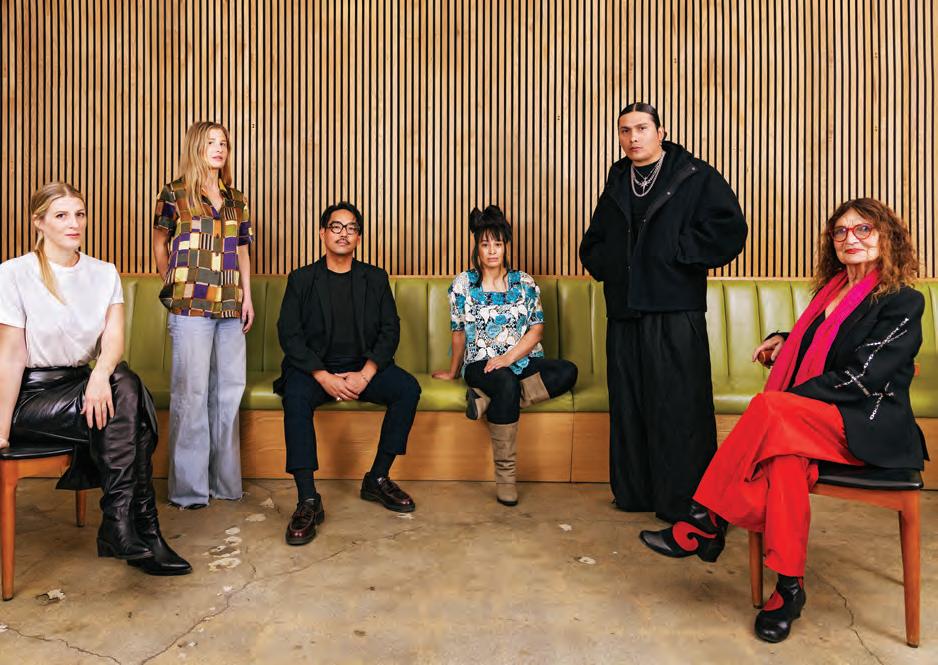
“I think it’s a rarefied experience, being met by a serious work of art in any medium,” he told the artist. “But we always have hope.” In London, Abela, a rising star, gave us an inside look at her new film with Steven Soderbergh, while Milioti met CULTURED in New York to discuss a career spent leaping from theater to television and back again.
We hope you’ll spend some time with this issue, no matter where in the world you find it.




Sarah G. Harrelson Founder and Editor-in-Chief
@sarahgharrelson | @cultured_mag


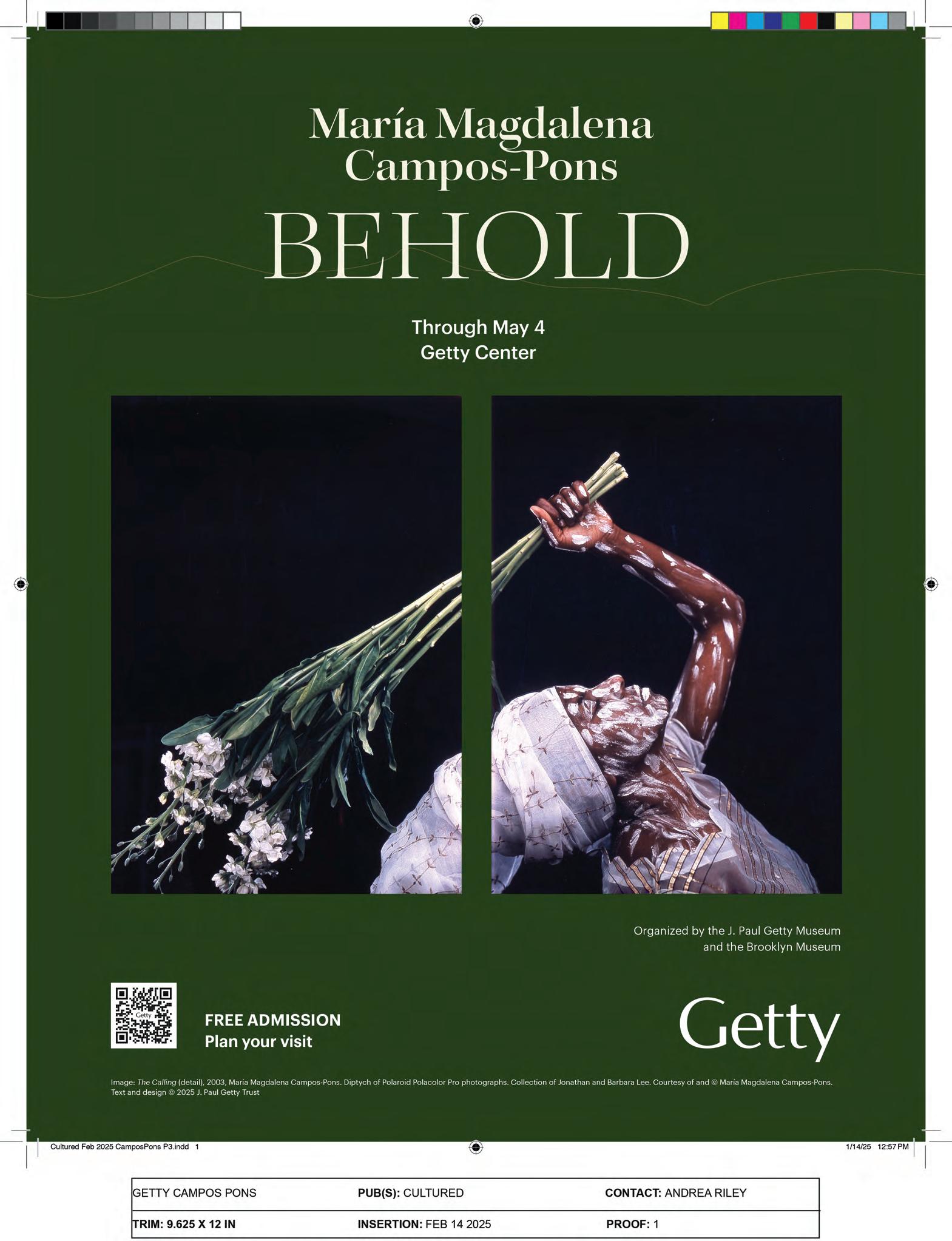
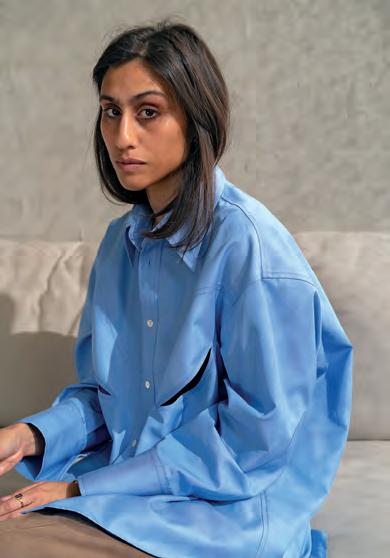
Writer
Who do you enlist to speak to a director currently in the throes of promoting a box office hit? A writer who has recently turned to filmmaking herself. Durga Chew-Bose—author of the 2017 book of essays Too Much and Not the Mood and contributor to The Guardian, GQ, and other publications—is currently preparing for the summer 2025 release of her directorial debut and festival circuit darling, an adaptation of Françoise Sagan’s Bonjour Tristesse. Ahead of the rush, Chew-Bose sat down with Halina Reijn, the filmmaker behind Bodies Bodies Bodies and last winter’s Babygirl. “Catching up with Halina during her whirlwind Babygirl tour was an education in staying candid and heartfelt amid the chaos,” says Chew-Bose. “Halina is so committed to her art, instinctive and free. Her curiosity comes from a place of compassion.”
Writer
“Thank goodness I watched all of Industry over one snowy week this winter,” says writer Haley Mlotek, who spoke to actor Marisa Abela for this issue. “This is surely a sign that no excessive binge-watching ever goes unrewarded.” Abela first broke through on the high-octane finance drama before leading last year’s Amy Winehouse biopic Back to Black and joining Steven Soderbergh’s latest thriller, Black Bag, out next month. “I leapt at the chance to interview Marisa—who played my favorite [Industry] character, Yasmin— when the opportunity came,” continues Mlotek, whose own industry breakthrough, No Fault: A Memoir of Romance and Divorce, drops this month.

Writer
Liana Satenstein has been examining the wardrobes and iconic garments of the sartorial set for more than a decade. The former Vogue senior editor (now contributor) is the creative behind #NEVERWORNS, a hybrid Substack, podcast, and YouTube channel that helps visitors “learn something about responsibly shopping as well as getting the most out of your closet.” For this issue,
Satenstein took on a garment that fills the closets and coat racks of half of New York: the Burberry trench coat. “It-items fade, but the Burberry trench stays,” she says. “It’s the ultimate classic, and it can give any messy look some blasé posh polish. Long live the Burb piece. In fact, get drenched in it!”
Stylist
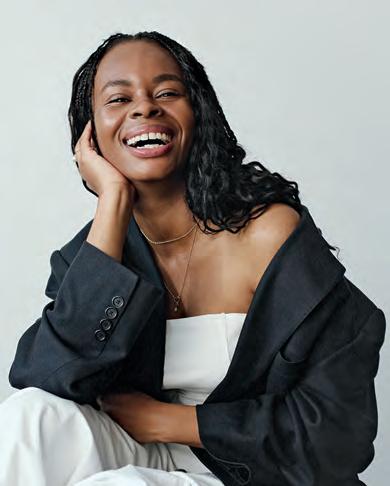
As a stylist, creative director, beauty editor, and more, Dione Davis has seen the fashion industry from every angle. Her editorial projects—with Vogue Netherlands, Numéro, and more—prize sleek tailoring and immersive settings. For this issue, Davis turned her attention to I’m Still Here star Fernanda Torres, catching the Brazilian actor in the Financial District’s new cultural hub WSA. “The shoot captured Fernanda unwinding post-event with looks as polished as her scene partners,” says Davis. “Prada evoked Old Hollywood glam, and the airy Ferragamo jumpsuit paired with Tiffany jewelry balanced elegance and movement.”
“The shoot captured Fernanda unwinding post-event with looks as polished as her scene partners.”—Dione Davis

With its powerful combination of Triple RGB-laser, Leica Summicron zoom lens, and Leica Image Optimization (LIO™), the Leica Cine Play 1 delivers stunning 4K images with exceptional brightness and vivid colors.


COLE WILSON
Photographer
Photographer Cole Wilson captured the industrial glory of artist Torkwase Dyson’s Beacon, New York, studio for this issue. “We threw on an old Art Ensemble of Chicago record to kick things off, followed by some Coltrane and Brian Eno,” the photographer recalls of the shoot. Wilson—who has shot for Adidas, The New Yorker, Reebok, and others—traveled from his base in Kingston to meet Dyson on a snowy winter day. “I think the music helped us both. From the get-go, Torkwase
THOMAS RUFF Artist
“I want to deconstruct, in a way, these kinds of official images, these official lies,” Thomas Ruff told director Luca Guadagnino when the two sat down in conversation for this issue. The statement could easily serve as a thesis for the artist’s long-standing practice. First emerging in the 1980s as part of the Düsseldorf School, Ruff has torn apart both photographic conventions and political propaganda in his sharp, blown-up imagery. Series like “d.o.p.e.” and “nudes” likewise put our hidden proclivities—sex and drug-induced trips—on display. His work is held in the collections of institutions including the Art Institute of Chicago, the Metropolitan Museum of Art, and the Solomon R. Guggenheim Museum, as well as that of his longtime fan Guadagnino.
“Natasha spoke about vulnerability, creative expansion, and her deliberate approach to representation in the industry. I watched her embody the very qualities she champions in her work.”
—Rachel Cargle
was engaged and excited to collaborate with me to make images that felt unique and authentic. She was excited to do something out of the ordinary and came ready with ideas to discuss together.”
“From
the get-go, Torkwase was engaged and excited to collaborate with me to make images that felt unique and authentic.”


RACHEL CARGLE
Writer
“Talking with Natasha Rothwell was a master class in authenticity,” says writer Rachel Cargle, who sat down with the actor to discuss her recent ascent in Hollywood. “She spoke about vulnerability, creative expansion, and her deliberate approach to representation in the industry. I watched her embody the very qualities she champions in her work.” Cargle, for her part, has been pursuing equity through her own Loveland Foundation, which offers free therapy to Black women and girls, and through her recent programming series For Those Who Gather. In 2023, she released her first book, A Renaissance of Our Own, a memoir and manifesto on reimagining oppressive societal structures.



ANDREW DE FRANCESCO Photographer
“I wanted these portraits to underscore how seamlessly Hong Gyu Shin incorporates art into his everyday life,” says photographer Andrew De Francesco of the gallerist and collector he shot for this issue. De Francesco has worked with clients as disparate as the Standard, the United Nations, and Carolina Herrera, bringing the warmth of film photography to this
ELENA SAAVEDRA BUCKLEY Writer

“I love trying to understand a phenomenon as it’s taking shape, and that’s what it felt like watching Anora,” says Elena Saavedra Buckley, who spoke with director Sean Baker for this issue. Elsewhere, Buckley serves as a senior editor at Harper’s Magazine and has written for The Paris Review, The New Yorker, and other publications. “Baker’s brash but deceptively simple movie became a sensation and then an object of scrutiny, but no one, it seemed, could agree on exactly what to criticize about it,” continues Buckley. “Then Baker himself became the confusing phenomenon—a long-hustling, innovative director cresting into seemingly inevitable stardom, with audiences enthralled and confused at his refusal to easily moralize. I loved talking to him for CULTURED as he stumbled into this new reality.”
range of projects. That adaptable sensibility made the photographer a fitting choice to shoot Shin’s collection, which features works by artists from across centuries, including Van Gogh, Balthus, and others.
“By engaging with his collection as effortlessly as he does,” says De Francesco, “Shin adds a human element to what most of us see as rarefied and sublime.”
STAPLETON Photographer
The art-filled home of collector Benjamin Trigano is nestled in the hillside above Los Angeles’s Lake Hollywood. For this issue, photographer Rich Stapleton visited the rambling, seven-floor abode to shoot a few sun-soaked images of the interiors and Trigano’s collection. “Benjamin’s home is fascinating,” he says, “a treasure trove of sorts. Collections of eclectic art and objects [are] scattered around the house: matchboxes, marbles, cookie jars, chess sets.” Stapleton is the co-founder of Cereal magazine, and his latest photography book, Penumbra, was released last year.


RAVEN SMITH Writer
“Interviewing Fernanda was a dream,” says writer Raven Smith of his subject for this issue, Brazilian actor Fernanda Torres. “She’s so easy and effortless, frank and direct, which speaks to her seasoned career.” Smith shares a similar set of qualities across his various magazine columns and books—his most recent output, Raven Smith’s Men, followed two years after his 2020 bestseller Raven Smith’s Trivial Pursuits. Of his feature for the issue, the Vogue columnist says, “It’s both exhilarating and reassuring that Fernanda is finally getting so much attention outside of her homeland!”

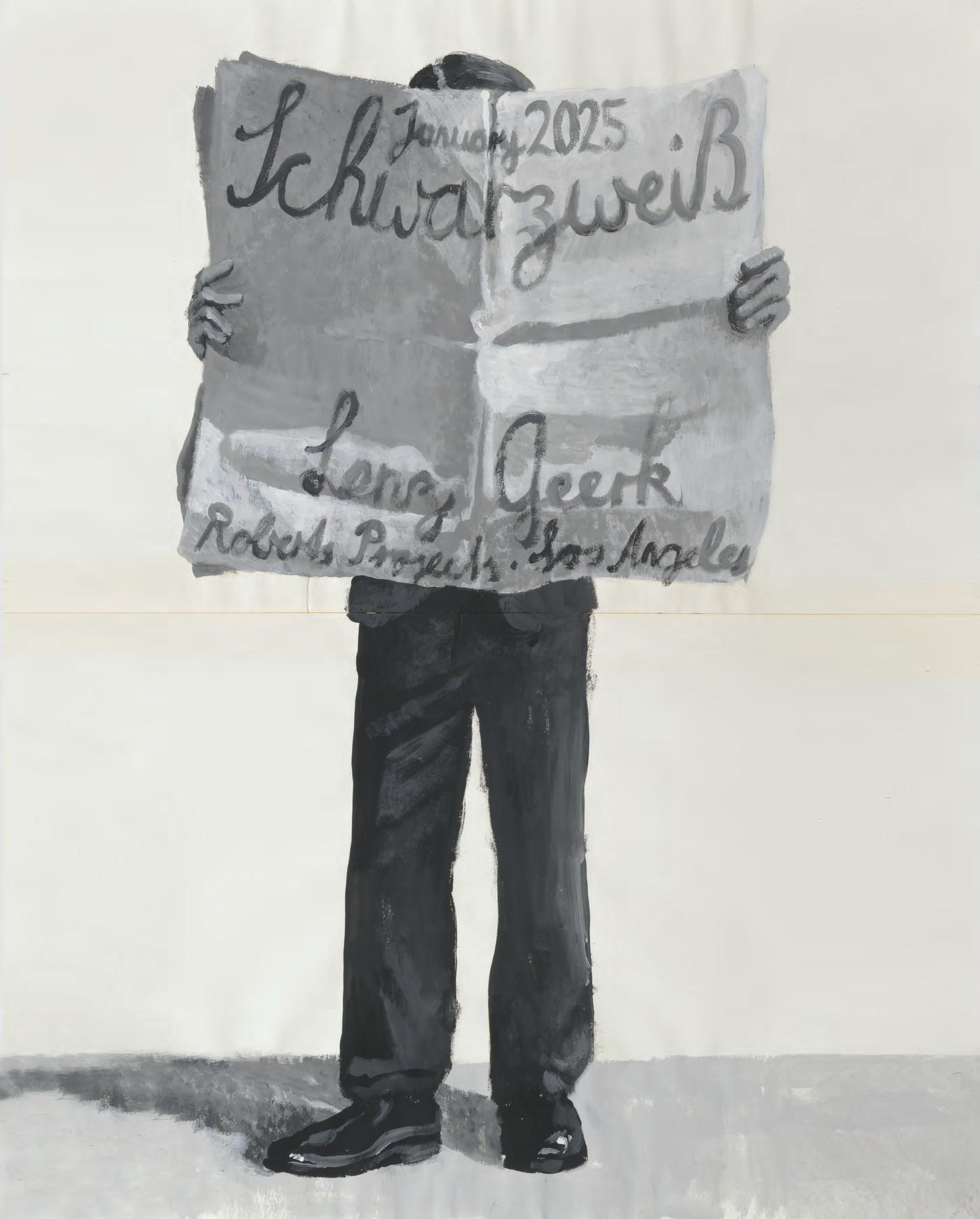

SARAH G. HARRELSON Founder, Editor-in-Chief
MARA VEITCH Executive Editor
JOHN VINCLER Co-Chief Art Critic and Consulting Editor
ELLA MARTIN-GACHOT Senior Editor
SOPHIA COHEN Arts Editor-at-Large
DELIA CAI Culture Writer
JACOBA URIST New York Arts Editor
KAREN WONG Contributing Architecture Editor
COLIN KING Design Editor-at-Large
ALEXANDRA CRONAN
KATE FOLEY Fashion Directors-at-Large
GEORGINA COHEN European Contributor
KRISTIN CORPUZ Social Media Editor
NICOLAIA RIPS
CAT DAWSON
DEVAN DÍAZ
ADAM ELI
ARTHUR LUBOW
HARMONY HOLIDAY
LAURA MAY TODD
EMMA LEIGH MACDONALD
LIANA SATENSTEIN Writers-at-Large
EMILY DOUGHERTY
DOMINIQUE CLAYTON
RACHEL CORBETT
KAT HERRIMAN
JOHN ORTVED
SARA ROFFINO
YASHUA SIMMONS Contributing Editors
JULIA HALPERIN Editor-at-Large
JOHANNA FATEMAN Co-Chief Art Critic and Commissioning Editor
ALI PEW Fashion Editor-at-Large
JASON BOLDEN Style Editor-at-Large
SOPHIE LEE Associate Digital Editor
CRISTINA MACAYA Editorial Assistant
MINA STONE Food Editor
EMMELINE CLEIN Books Editor
SPECIAL PROJECTS Contributing Casting Directors
EVELINE CHAO Senior Copy Editor
ROXY SORKIN Lifestyle Columnist
SIMON RENGGLI CHAD POWELL Art Directors
HANNAH TACHER Junior Art Director
JAMESON BALDWIN Production Coordinator
CAROL SMITH Strategic Advisor
MAYA BODDIE
GIULINA BRIDA
MADISON COLLINS
NICOLE HUR
KATIE KERN
DANIELLE ORTIZ
STEPHANIE WONG Interns
CARL KIESEL Vice President, Chief Revenue Officer
LORI WARRINER Vice President of Sales, Art + Fashion
DESMOND SMALLEY Director of Brand Partnerships
HAILEY POWERS
Marketing and Sales Associate
CARLO FIORUCCI Italian Representative, Design
ETHAN ELKINS
DADA GOLDBERG Public Relations
AMANDA GILLENTINE
Marketing and Partnerships Consultant
PRIYA NAT Sales Consultant, Home + Travel
PETE JACATY & ASSOCIATES Prepress/Print Production
BERT MOO-YOUNG Senior Photo Retoucher
JOSÉ A. ALVARADO JR.
SEAN DAVIDSON
SOPHIE ELGORT
ADAM FRIEDLANDER
JULIE GOLDSTONE
WILLIAM JESS LAIRD
GILLIAN LAUB
YOSHIHIRO MAKINO
LEE MARY MANNING
BJÖRN WALLANDER
BRAD TORCHIA
Contributing Photographers

February/March 2025
VSF DALLAS
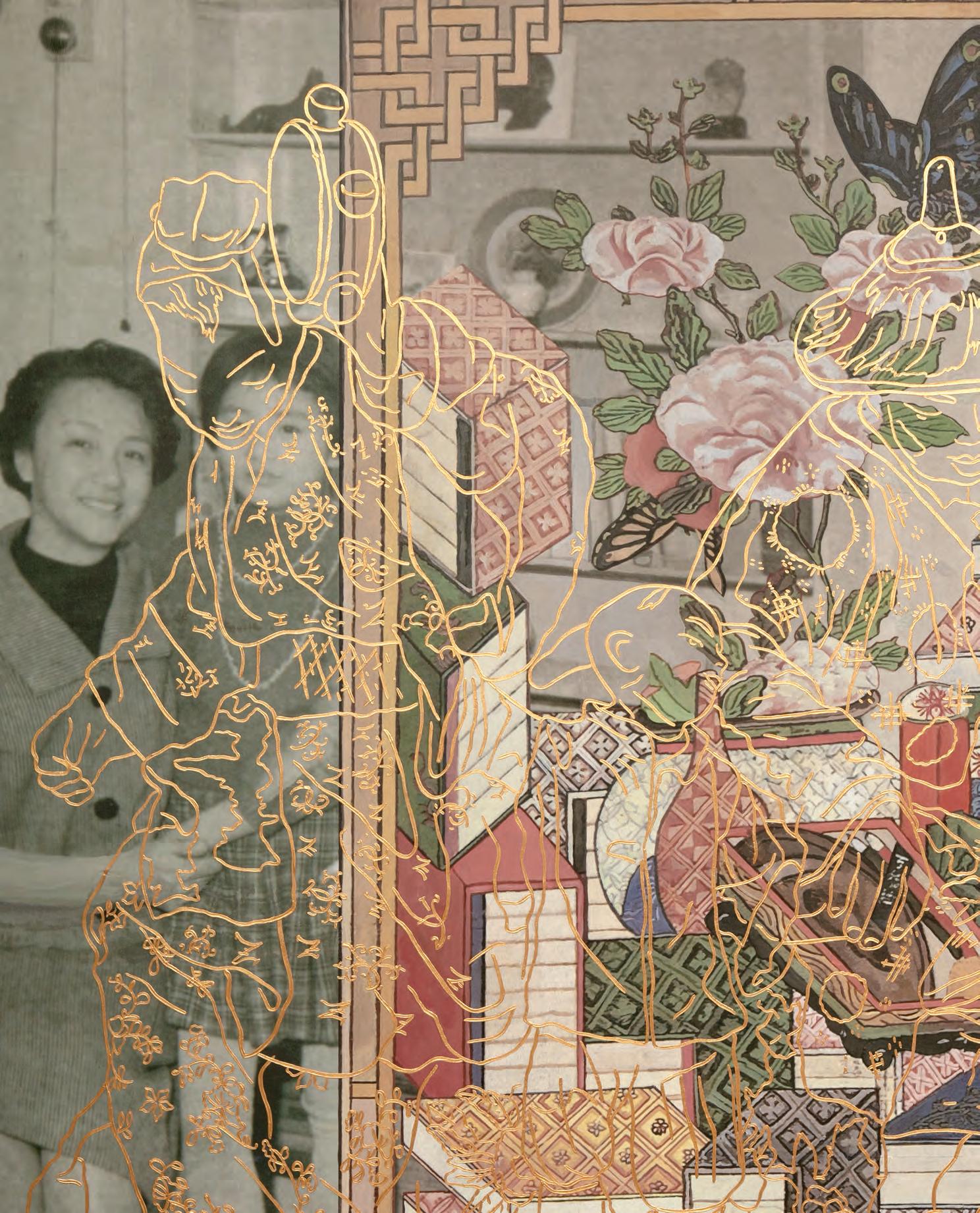
“ALICE’S
Jonny Greenwood of Radiohead has cited her as an influence. She shared the stage with musicians as disparate as Carlos Santana and Pharoah Sanders. Along with her contemporary Dorothy Ashby, she introduced one of music’s most ancient instruments, the harp, into the jazz canon. Yet, during most of her lifetime, Alice Coltrane’s contributions were not considered part of the jazz canon themselves, eclipsed by the monument that was her husband, John Coltrane. That’s changing, according to curator Erin Christovale. “I feel like, in recent years, her output is being recognized by a larger audience and her impact as an individual … is taking form,” she says. “Alice’s music and cultural legacy transcend time and space.”
At the Hammer Museum in Los Angeles, the curator has orchestrated “Alice Coltrane, Monument Eternal,” the first institutional exhibition dedicated to the late jazz musician and devotional leader’s legacy. Alongside rarely or never-before-seen pieces from her archive—including letters, unreleased recordings, and video footage—are works by 19 American artists that flesh out her world and impact.
“Monument Eternal,” on view through May 4, takes its title from Coltrane’s 1977 book of the same name, which elucidated her spiritual beliefs and musical practice, particularly as one of jazz’s few harpists. The show mirrors the text’s themes with three sections: Sonic Innovation, Spiritual Transcendence, and Architectural Intimacy. Works, both new and archival, from the likes of Rashid Johnson, Jasper Marsalis, Cauleen Smith, Martine Syms, and more fill each space.

“Alice was such a multivalent being, so there’s so much to learn,” continues Christovale. “Those who are more familiar with her jazz career will also have the opportunity to learn about her time as a spiritual guru and the Sai Anantam Ashram that she ran for decades in Agoura Hills. Those who are more familiar with her spiritual journey will be able to sit with her full discography and learn more about her musical musings.”
The museum’s typically hushed galleries will also come alive with music throughout the run
of the show. Performances every Sunday are a nod to Alice’s weekly services at the Sai Anantam Ashram, with Jeff Parker, Mary Lattimore, and more slated to make a showing. Christovale put together the program with help from Music Curator Ross Chait—and a little inspiration from Coltrane’s own community. “I started at the source,” Christovale reflects on the show’s genesis, “her incredible family, jazz community, and students of her ashram. You learn so much about a person through the photos, letters, books, and other traces they’ve left behind.”

THIS SPRING, THE GUGGENHEIM WILL OPEN A SHOW DEDICATED TO THE KALEIDOSCOPIC OEUVRE OF BEATRIZ MILHAZES.

By Katie Kern
“Art has the power to make human ties stronger and help us think, feel, and look at things differently,” says Beatriz Milhazes. “Art can change people, and people can change the world into a better one.” In New York this spring, the artist’s humanistic worldview will be at the center of her first solo exhibition at the Guggenheim, whose permanent collection features a sextet of works by the Brazilian artist.
Time spent with Milhazes’s intricately collaged paintings unveils hypnotic abstractions, undulating arabesques, and playful riffs on floral motifs. Synonymous with the Rio de Janeiro native’s practice is her innovative “monotransfer” technique, developed during experiments with acrylics in the ’80s. Milhazes creates designs on transparent sheets, which
are then transferred to canvas, producing reversed images. “A good process is when you create a dialogue with the work,” she remarks. “You cannot force something to happen nor follow what the picture is suggesting to you. Time and focus are the two main elements.”
“ART CAN CHANGE PEOPLE, AND PEOPLE CAN CHANGE THE WORLD INTO A BETTER ONE.”
In “Rigor and Beauty,” drawn from the Guggenheim’s holdings and key loans, and opening March 7, Milhazes traces this dialogue from the ’90s all the way to works completed as late as 2023. Throughout this artistic chronology, her influences—spanning Brazilian folklore, the decorative arts, regional spiritual
traditions, and artistic movements like Op Art and abstraction, as well as the work of Henri Matisse and Piet Mondrian—loom large, with Milhazes absorbing and interpreting their disparate styles into her own signature. Today, her oeuvre is as relevant as ever, evidenced by her recent inclusion in the 2024 Venice Biennale, created in collaboration with her fellow Brazilian, the curator Adriano Pedrosa. The Guggenheim exhibition will be an indispensable introduction for audiences who might not know her yet. “It is amazing the way these works will meet each other and how a strong and special confrontation is created,” Milhazes says of seeing the breadth of her career collected at the museum. “The superposition of layers of paint, an environment of colorful compositions, will diverge from a dark, melancholic atmosphere to an intricate, dense, multicolored one. There are almost 30 years between them.”

THE ADAGE GOES THAT PETS LOOK LIKE THEIR OWNERS—BUT WHEN IT COMES TO THE FASHION WORLD, WHERE APPEARANCE IS THE HIGHEST FORM OF EXPRESSION, THE CONNECTION RUNS EVEN DEEPER. HERE, FIVE SARTORIAL HEAVYWEIGHTS INTRODUCE CULTURED TO THEIR ANIMAL COMPANIONS.
Karl Lagerfeld’s Birman cat Choupette and Thom Browne’s dachshund Hector directly inspired some of their owners’ most beloved designs. Is it any surprise, then, that the pets of fashion-industry icons lead especially stylish and luxurious lives? From sirloin beef jerky to car rides to Southampton, the perks of being a fashion pet are legion. In the following pages, meet the beloved dogs (plus one turtle) of designers Emilia Wickstead, Tory Burch, and Laura Kim; PR extraordinaire Lucien Pagès; and T Magazine Editor-in-Chief Hanya Yanagihara.

How did you find each other? My father was having a late-life crisis and answered a Craigslist ad. Before my mother could say anything, he was paying Fred’s previous owner $250 and loading him into the back of the car.
What’s the most expensive thing your pet owns? He has a doghouse that my cousin built for him; he sleeps in there every night.
What’s Fred’s favorite pastime? Pacing around the lawn eating cactus leaves. He loves visitors—especially children.
His favorite place to be? Beneath the cup-and-saucer bush. It’s shady and dry there.
His snack of choice? Hibiscus flowers.
Most mischievous behavior? He continually humps a large rock; my parents have named the rock Wilma.
What fashion icon (dead or alive) does he channel? Quentin Crisp.
What nicknames does Margot respond to? None. She loves her full name.
What’s the most expensive thing your pet owns? Her leather, pleated collar. It matches the tone of her curls, and it has a gold heart with her name engraved on it.
Her favorite pastime? She trots instead of walking.
Her most cherished accessory? The red velvet bow attached to her collar.
Her favorite place? Hyde Park, or at the top of the staircase waiting for the children to arrive home from school.
Her snack of choice? Fresh chicken.
Most mischievous behavior? Sleeping in bed like a human—under the covers with her head on our pillows.
What fashion icon (dead or alive) does she channel? Katharine Hepburn. The hair, the poise, and the attitude.

How did you find each other? It was literally meant to be. We originally got Chicken for my mother when we thought her standard poodle was about to die, but that didn’t happen until much later, so Chicken became ours. A few years ago, we lost Chicken for three days, which was very traumatic. Slim was Chicken’s therapy pup. Slim came to save her and all of us.
What’s the most expensive thing your pets own? Me.
Their favorite pastime? Taking naps on our bed and car rides to Southampton.
What is one fashion trend your pets have pioneered? Hopefully none.
Their most cherished accessory? A Bode dog bed with hand-drawn illustrations. It was a gift from a friend.
Their favorite place? Their cave/bed. They run for it at night.
Their snack of choice? Chicken: chicken. Slim: salmon.

How did you find each other? It was an obsession. We were just waiting for the right time.
What nicknames do your pets respond to? Baby.
What’s the most expensive thing your pets own? An Hermès tent.
Their favorite pastime? Sleeping. Pugs are really lazy.
Their favorite place? Our house in the Cévennes in the south of France. They have a garden there where they can run free.
Most mischievous behavior? Jumping on the table to eat smoked salmon.
What fashion icon (dead or alive) do your pets channel? Marius channels Valentino.
What’s one fashion trend your pets have pioneered? They hate clothes. They are naturally trendy.
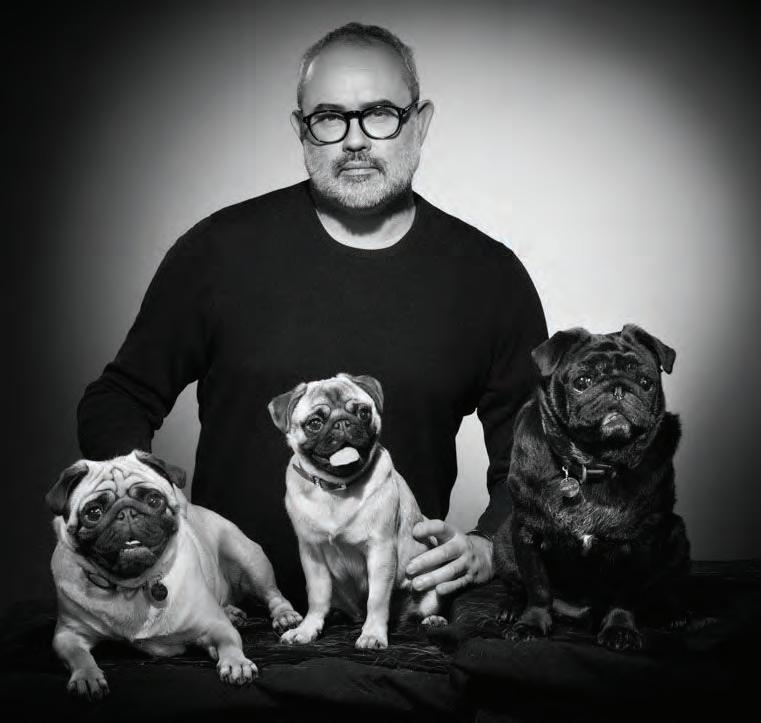

What nicknames does King respond to? Snuggie.
What’s the most expensive thing your pet owns? Me.
His most cherished accessory? His Hermès collar.
His snack of choice? Homemade sirloin beef jerky.
Most mischievous behavior? He puts his toys away every night—but he only does it when no one is watching. When guests come to visit, he carefully selects a few and brings them out to show off.
What fashion icon (dead or alive) does he channel? Richard Gere.


SHONO MARCH 8 – MAY 11, 2025
Sponsored by
Additional support from Jordan Schnitzer and the Harold & Arlene Schnitzer CARE Foundation, National Endowment for the Arts, California Arts Council, the Swiss Arts Council Pro Helvetia, and Amazon.
Media Partners: Artnet, ArtReview, C Magazine, Canvas Magazine, Cultured Magazine, frieze Magazine, Here Media, KGAY Palm Springs, GayDesertGuide and 103.1 MeTV FM, LocaliQ, part of The Desert Sun and Desert Magazine, Palm Springs Life Magazine, Terremoto, and Visit Greater Palm Springs.
desertx.org @_desertx
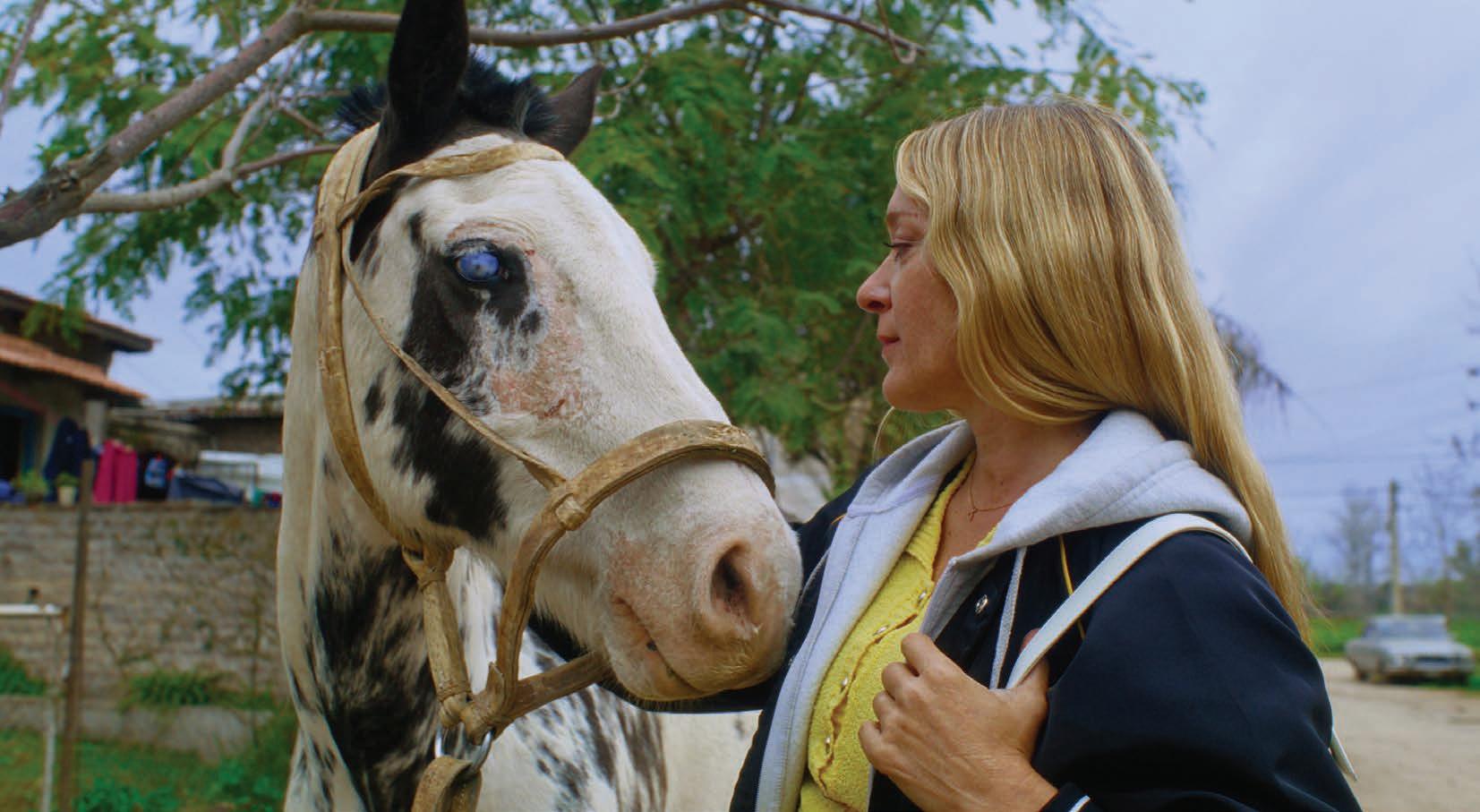
In her latest film, Magic Farm, artist Amalia Ulman takes Chloë Sevigny and Alex Wolff down to Argentina.
In Amalia Ulman’s new film, Magic Farm, a Vice -like crack team of documentary filmmakers—incarnated by the likes of Chloë Sevigny, Alex Wolff, and Ulman herself—land in rural Argentina to shoot a piece about a local musician, only to realize they’re in entirely the wrong country. In the midst of our protagonists’ frenzied reaction to the news, little thought is dedicated to the locale they’ve come to in their search for viral content: a community suffering the consequences of harmful crop spraying. So absorbed is the film crew in their city slicker woes that they fail to notice the turmoil around them—children are born with chemically-induced physical defects; agricultural planes zoom overhead, sending the locals running for cover; and coughing fits are shrugged off like spring allergies.
This trick, of backgrounding the foreground of a narrative, is one Ulman, an Argentine-Spanish video and performance artist, previously employed in her 2021 directorial debut, El Planeta . That film premiered at Sundance Film Festival, and last month, Magic Farm followed in
its footsteps. Ahead of its wide release later this year, the artist spoke to CULTURED about her approach to skewering our collective sense of moral detachment.
Did you think much about the parallel between making a film about a crew traveling to Argentina to shoot a movie, and doing the same thing yourself?
In a way, I enjoy making fun of myself. The crew and everyone involved in the story reflect elements of people I know and love. The critique of that style and hipsterism is also a critique of myself, which I think makes it more accessible and relatable.
Tell us about the cinematography of the film. There are a lot of scenes shot with unusual lenses, saturation, and other editing techniques.
I’m inspired by a lot of the beautiful things happening online and on TikTok, especially concerning editing. We even used CapCut for
some of the editing and transitions. The animal camera footage was inspired by a YouTube account I love, where someone in China attaches a camera to their cat.
Filmmaking is still a young art, even though the rules often feel rigid. The Internet today can feel like a dumpster, but there are beautiful things if you know where to look. I’m especially drawn to moments when people are unaware they’re making art—that’s when something magical happens.
What do you hope audiences take away from the film?
The film shows how superficial this hipster culture is when compared to the larger, looming problems that affect everyone. At some point, we’ll all have to face those deeper issues.
That’s the message of the film: There’s something more significant happening beneath the surface, and it’s something that connects us all.
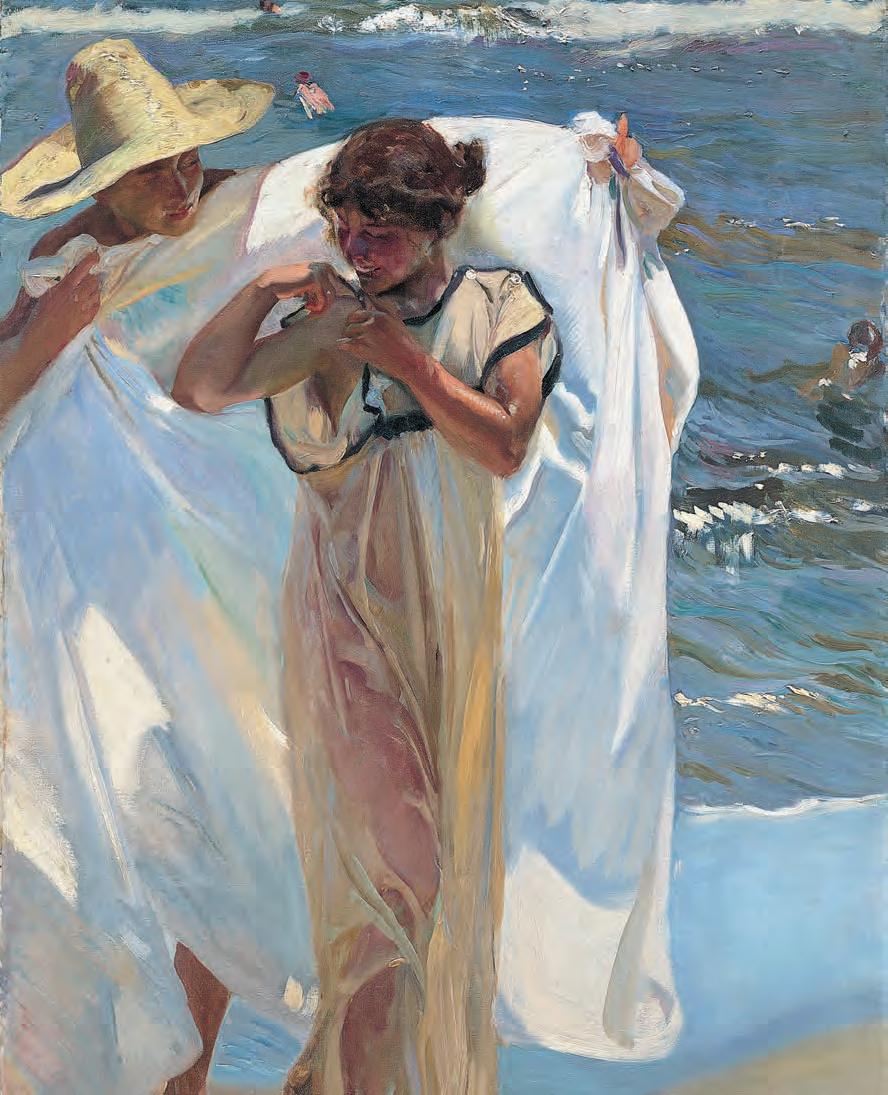

norton.org
Features approximately 40 works, on loan from The Hispanic Society Museum & Library for the first time in over 100 years, exploring Sorolla’s lifelong connection to the sea.
Through April 13, 2025
Sorolla and the Sea was organized by The Hispanic Society Museum & Library with support from The Museum Box. Leading support for this exhibition at the Norton was provided by Judy and Leonard Lauder, the Fiddlehead Fund, and Lynne Wheat and Thomas Peterffy. Major support was provided by the George and Valerie Delacorte Endowment Fund, the Mr. and Mrs. Hamish Maxwell Exhibition Endowment, The Fanjul Family and Florida Crystals Corporation, and the KHR McNeely Family Fund.
Additional support was provided by Frank Yu, the Gioconda and Joseph King Endowment for Exhibitions, and Anonymous.
bocamuseum.org
This treasured exhibition features 57 priceless masterpieces from the 16th and 17th centuries by some of the greatest artists in history including El Greco, Diego Velasquez, Bartolome Esteban Murillo, and more.
Through March 30, 2025
Splendor and Passion: Baroque Spain and Its Empire was organized by The Hispanic Society of America, with support from The Museum Box. This exhibition is supported by an indemnity from the Federal Council on the Arts and the Humanities.
Sebastián López de Arteaga, Saint Michael Striking Down the Rebellious Angels [detail], 1650-1652, oil on copper. Courtesy of the Hispanic Society of America, New York.

SEE SO MUCH MORE THAN YOU CAME FOR
When you’re busy enjoying art at countless museums and galleries in The Palm Beaches, that white sand stroll may shift to tomorrow’s to-do list.
Filmmaker Cazzie David’s latest project, a romantic comedy run amok, examines the dark side of modern relationships.
After captivating audiences at SXSW last year, Cazzie David’s I Love You Forever is set for a limited theater release on Feb. 14—darkly comedic timing befitting a darkly comedic film that plumbs the murky depths of emotionally abusive relationships.
A writer, actor, and essayist, David has honed a distinctive voice that blends wit with poignant, often uncomfortable truths. Her 2020 essay collection, No One Asked for This, further cemented her status as a writer with a keen eye for the absurdities and nuances of modern life, relationships, and the messy contradictions of adulthood. Whether dissecting the pitfalls of romance or the chaos of quotidian interactions, David’s work is equal parts biting and reflective, with a refreshingly unflinching slant.
In an exclusive conversation with CULTURED, David reflects on the personal and creative forces behind I Love You Forever. She opens up about the challenges of creating multidimensional characters, navigating the fine line between humor and heartbreak, and why this film, in all its complexity, is her most intimate and daring project to date.
I experienced something in this vein and there wasn’t a lot to turn to in the aftermath. I wanted to make something that felt like a grounded, realistic portrayal of the feelings that swirl around emotional abuse. I talked to many people, and as I learned more, it became clear that it’s a kind of epidemic. I thought it was so crazy that there weren’t any movies that could help people to either feel seen or prevent themselves from getting into something like this.
At the same time, my writing partner and I wanted to write something that felt like a rom-com for our generation. It came together perfectly, because the textbook emotionally abusive relationship starts out feeling like a fairy tale or a once-in-a-lifetime love story.

Was there catharsis for you in making this film?
I think that will come when and if people can relate to this movie. I’m kind of waiting for that moment. It’s strange to have an experience and then direct that same experience on a set, but in the end, the film was an amalgamation of so many stories. We wanted there to be a glimpse of every manipulation tactic a person could have experienced in an emotionally abusive relationship—even a friendship—so that there’s something that almost anyone could relate to.
So many of the relationships in the film are heavily mediated by technology. That’s always something I’m wary of—it’s challenging to pull off a hyper-contemporary story in that way.
Hyper-contemporary movies, they’re such a bummer. Sometimes I’ll see a character in a show take a photo and be like, “La di da— posted!” No one has ever done that—come on! You take 300 photos, you craft a caption, and hours later you post it and delete it. I find those nuances to be really funny and touching, and they’re rarely portrayed accurately. But in the film, the phone has a major role—it becomes a leash linking Mackenzie to her boyfriend.
You seem interested in the idea of this film educating people. Many directors shy away from that.
I don’t want it just to feel informative—because that’s not a movie, it’s a PSA. But since I feel confident in the story—it has a lot of humor in it and it’s relatable to my generation—I’m happy if it also manages to teach you something. I think it has that educational potential because this is a subject that we have really inaccurate conversations about. If I had seen something like this when I was in high school, it could have helped.
“My writing partner and I wanted to write something that felt like a rom-com for our generation. It came together kind of perfectly, because the textbook emotionally abusive relationship starts out feeling like a fairy tale.”
—CAZZIE DAVID
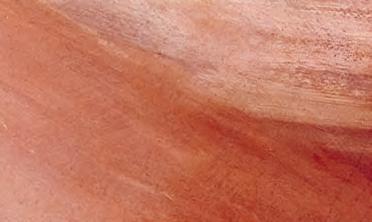

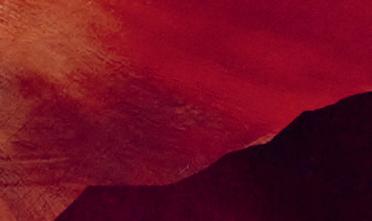






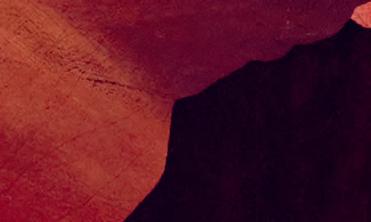
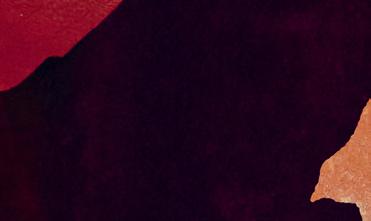






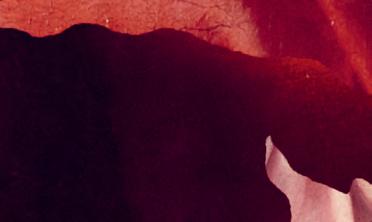



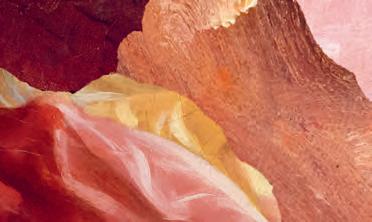







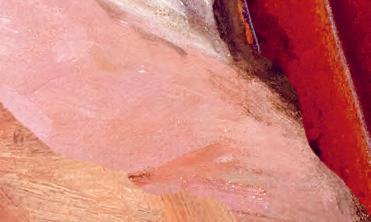




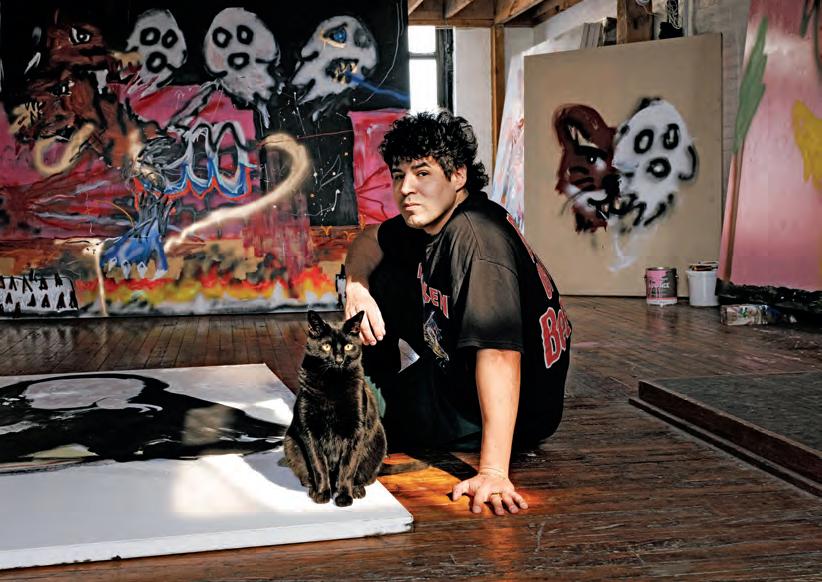
By Rachel Corbett
The first thing I see in Robert Nava’s Brooklyn studio is four sets of bloody fangs. They appear in three different paintings of three different creatures: a shark, a dragon, and a roaring twoheaded tiger. Crudely rendered in acrylic and oil, these beasts can appear flat on a screen, but in person, they feel as if they could come to life at any moment.
The impulsive energy of his paintings is the product of Nava’s process. While he may deliberate on an idea for months and draw it over and over again in notebooks, he sometimes paints it in seconds. “It’ll be in muscle memory,” he explains.
Nava has been working to rein in his prolific tendencies, however, while awaiting his upcoming solo show at Pace in New York, which opens March 14. Surging demand for his work in recent years has pushed the artist’s auction prices as high as $715,000. But it’s often at precisely this stage of success that artists need to protect their careers the most. Nava has learned about the dangers of overexposure and is trying to practice patience. “But I’ll be honest,” he admits, “I feel like a Ferrari that only is allowed to go 40 miles an hour.”
“I FEEL LIKE A FERRARI THAT ONLY IS ALLOWED TO GO 40 MILES AN HOUR.”
Nava’s critics, and there are plenty, tend to see his paintings as a kind of adolescent effrontery, perhaps an intellectual insult and, taking into account his prices, an exorbitant gimmick. But while there’s an undeniably juvenile quality to Nava’s work, he speaks more in the guileless language of a child than that of a cynical teen. The satisfyingly swift execution of a painting, for example, is like “a flawless victory in Mortal Kombat.” Crits at Yale, where he earned his MFA, were like “gladiator matches.” And ultimately, he learned to fight with a “sword” in the art world, he says, like the young Spartan in the action movie 300.
While Nava bides his time until he can exhibit his next body of work, he has co-curated a show at Pace Los Angeles titled “The Monster,” on view through March 22, featuring artists he admires, including Huma Bhabha, Thomas Houseago, and Paul McCarthy. And he’s been playing a lot of Magic: The Gathering, where, he says, “an invitation to the imagination opens up.”


BY GIULIANA BRIDA
Arpita Singh’s canvases are untethered by anatomy. Figures stretch and shrink. Objects float, defying gravity. But the artist doesn’t see her work as belonging to the realm of fiction or fantasy. “For me it’s very real,” Singh declared in conversation with Serpentine Galleries Artistic Director Hans Ulrich Obrist. “In dreams, mostly things aren’t under your control. Here, things are … There is a law, but that law is according to me.”
For over six decades, Singh has remade the world in her vision—men in black suits multiply, sensuality flourishes, and the humble “dot and line” receive seven years of creative study.
This spring, Singh’s career will be the subject of “Remembering,” the artist’s first solo show outside her native India, opening at London’s Serpentine North Gallery on March 20.
Born in what is now the state of West Bengal in 1937, Singh didn’t foresee a life in the arts until her school principal nudged her along. “I didn’t know there was … a field called ‘art,’” she told Obrist. It wasn’t until her first year of college at Delhi Polytechnic that she visited an art museum, the National Gallery of Modern Art. Since emerging in the arts scene in the late 1960s, Singh has built a body of work that melds abstraction with traditional Indian court
painting. The latter has a long history of blending the mythological and the quotidian, an enduring aspect of Singh’s work.
“Remembering” spans large-scale oil paintings, intricate watercolors, and ink drawings. Her freedom of thought permeates the expansive show, in which recurring motifs— planes, fruits, and fragmented figures—evoke what Nietzsche described as the “eternal return,” a cyclical rhythm that feels at once personal and generationally universal. “I believe, then I doubt. I believe, and I doubt again,” Singh has said. “That’s the whole process of my work.”
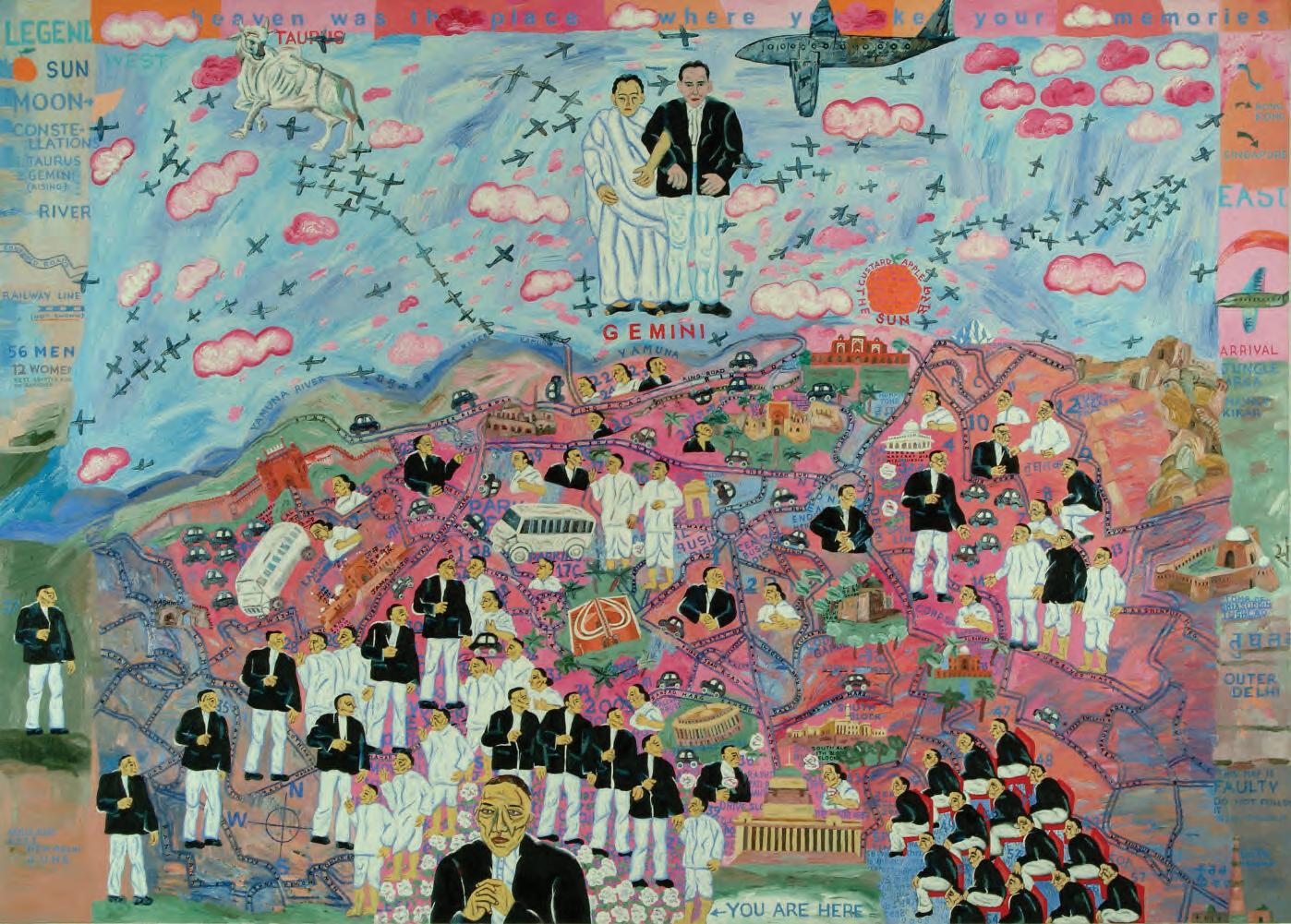
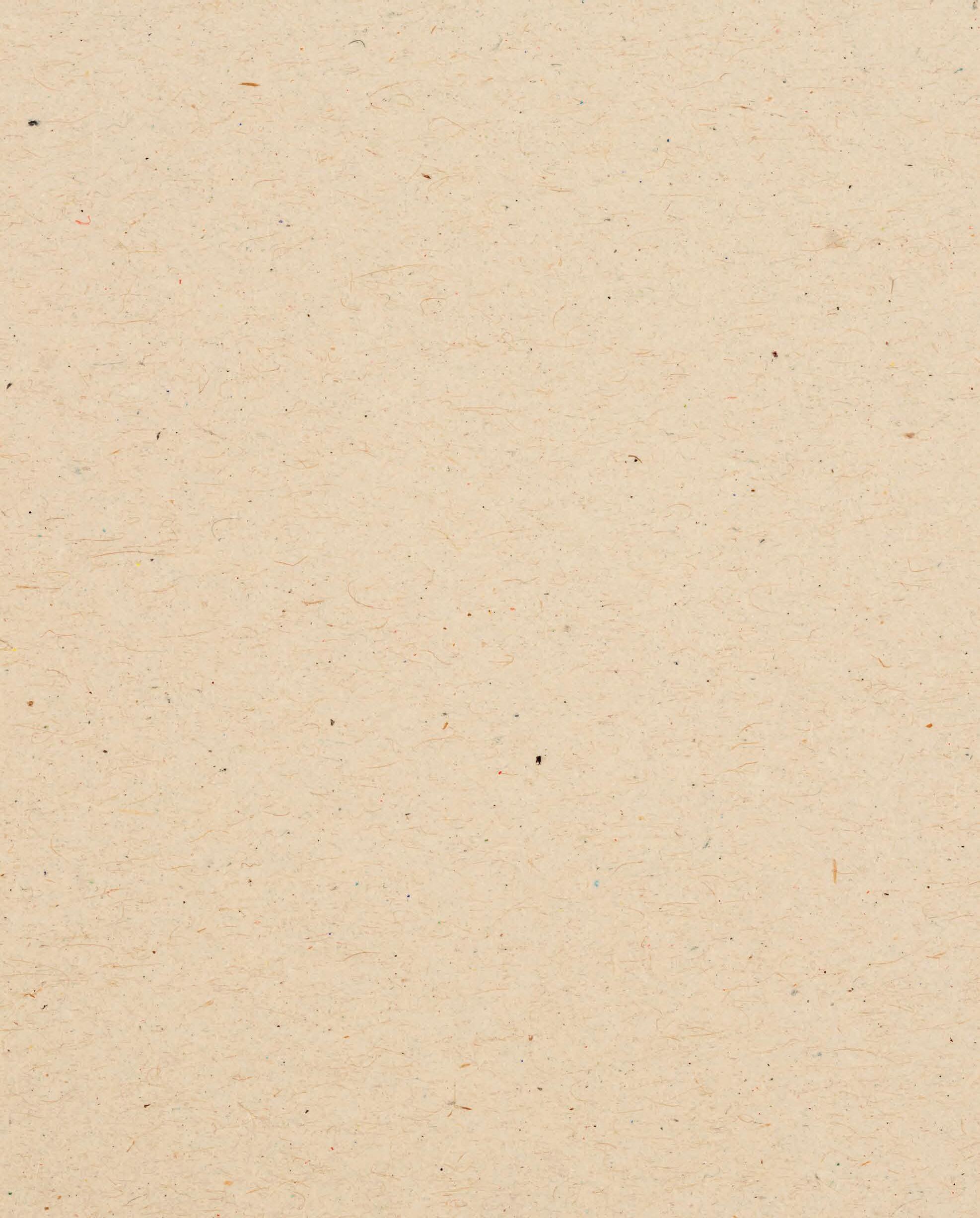
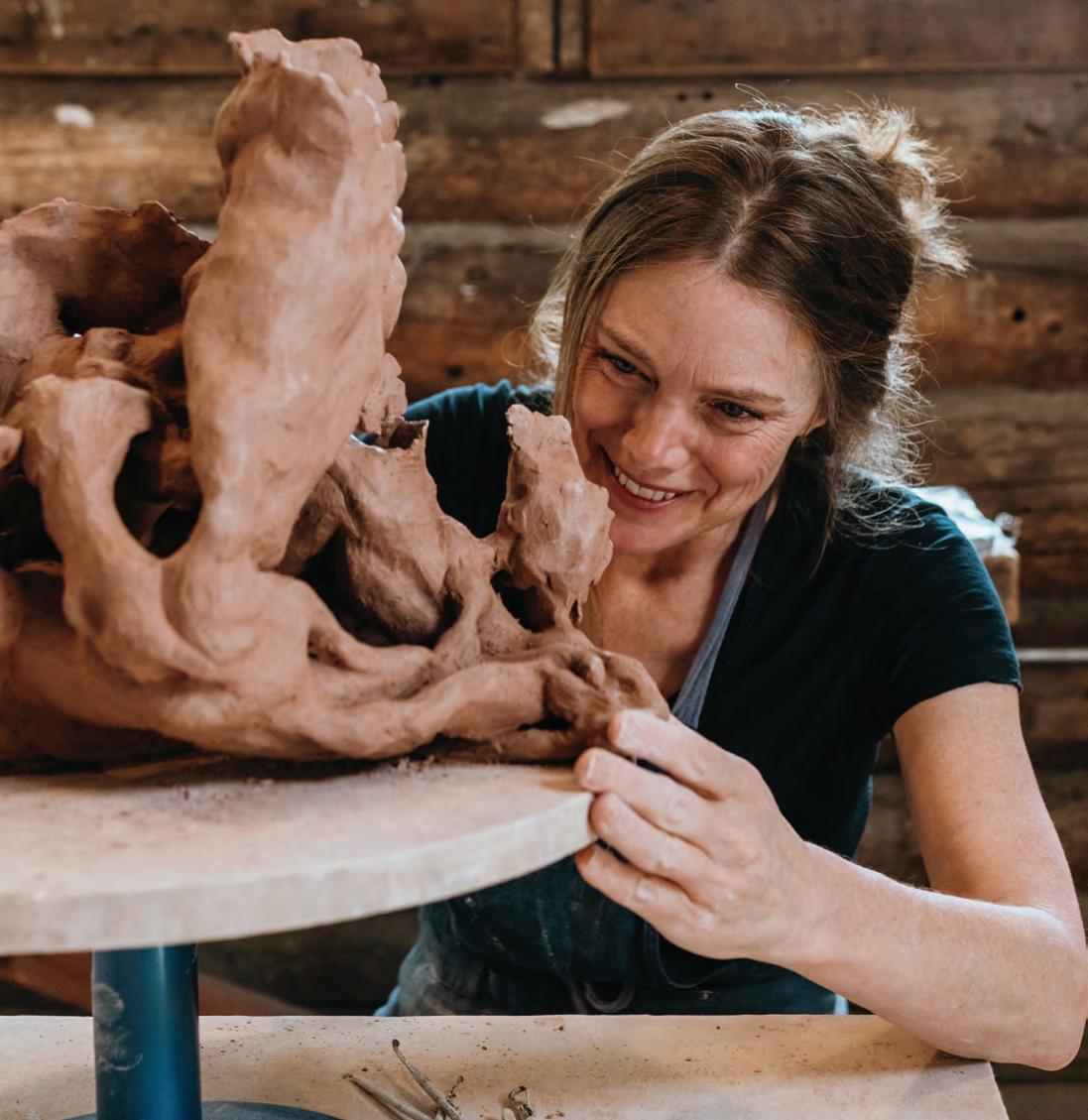


POLAROIDS BY HANNAH TACHER
By John Vincler
Pippa Garner, who died at the age of 82 in Los Angeles on Dec. 30, 2024, was an artist whose work made its beholders more free.
Behind the prankishness of her absurd, tricked-out objects—cars with their bodies flipped, so they would appear to drive backwards; high-heeled roller-skates; a men’s “half-suit” that exposed the midriff—there was a yearning for transformation. The whole of her life was a revolutionary artwork.
Garner, raised as a boy in the Midwest, was restless and depressed in school, where she was often told what not to do rather than encouraged to explore her interests. Her parents saw her love of art and drawing and
encouraged her to study automotive design, so she headed off to Los Angeles’s ArtCenter College of Design. (Garner would be kicked out—for making early versions of her satirical objects that lampooned consumer culture and the fantasy of “easy living.”)
She was an art-world outsider for most of her career, choosing to present her work in popular magazines or on late-night talk shows where hundreds of thousands might see it rather than in industry-vetted venues. She sensed that she would never be taken seriously as an artist without showing regularly in galleries—though she would do just that, eventually. She had a floor to herself in last year’s Whitney Biennial, and at the time of her death, her work was on view in a pair of linked exhibitions—at Stars in Los Angeles and Matthew Brown in New York.
Garner may be remembered most, in this political moment, as a path-breaking transgender artist. In the early ’80s, she paid a sex worker on Hollywood Boulevard to tell her about her transition, and Garner learned how to acquire black-market estrogen before pursuing genderaffirming surgeries. She often compared the body to an appliance, a toy, or a car—why not tinker with it too?
She died a little more than a week before the recent fires started in Los Angeles, the city she called home. Garner liked it because it felt like she did, “a little off,” not growing the way anyone planned. She was never comfortable with the idea of a retrospective because she wanted to do new things. But we deserve one now. Garner still has much to teach us about the freedom of transformation.
Feb. 24–July 6, 2025
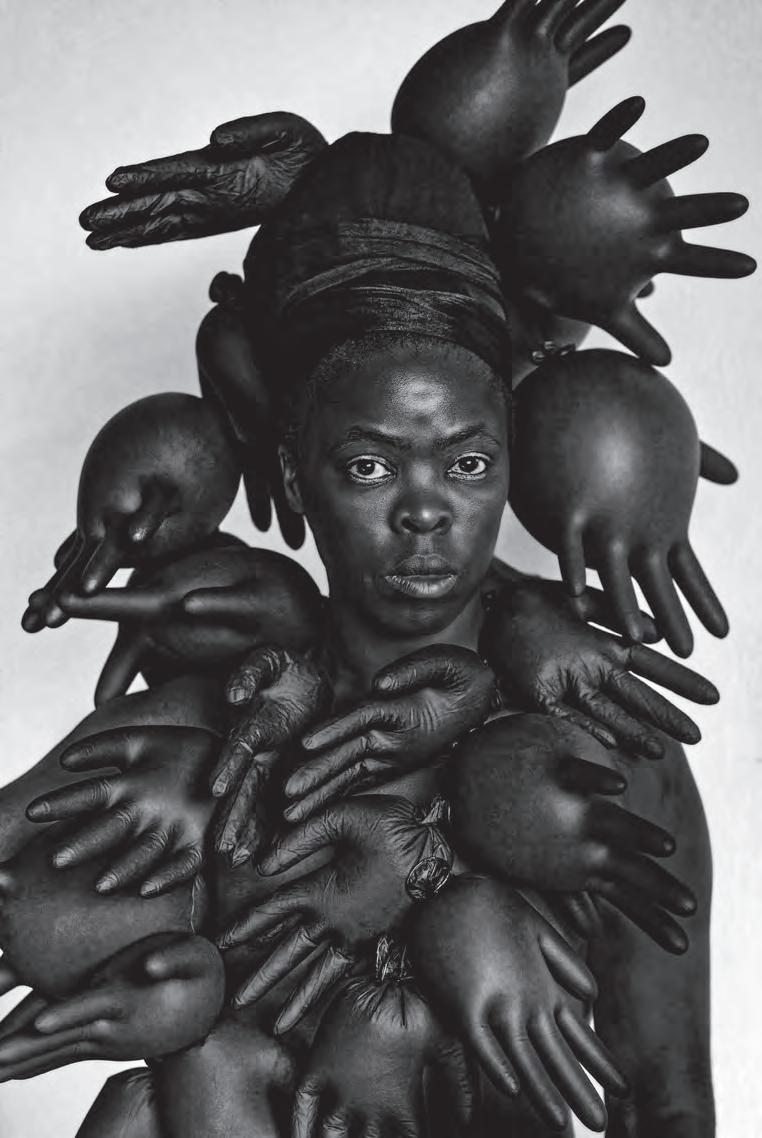

THE NEW YORK–BASED ARTIST WAS SELECTED BY THIS YEAR’S PANEL OF JURISTS, COMPOSED OF LEGACY RUSSELL, RUBA KATRIB, AND KELLY TAXTER, TO WIN THE PRIZE FROM CULTURED AND MZ WALLACE.
Malcolm Peacock, a New York–based artist and athlete whose participatory work captivates audiences with piercing questions about intimacy, power, and loss, is the winner of the 2024 Young Artist Prize. Presented this year by CULTURED in partnership with MZ Wallace, the award offers $30,000 to a promising talent chosen from the magazine’s ninth annual Young Artists list.
“Through his multidisciplinary practice,
Malcolm’s powerful work proposes different ways of being in the world,” say Monica Zwirner and Lucy Wallace Eustice, MZ Wallace’s cofounders and codesigners. “He explores feelings of connections, to others and to ourselves, which makes the work both timely and universal. We are honored to play a part in supporting his artistic journey.”
Peacock was selected from the 30 artists on this year’s list by a distinguished jury
composed of Legacy Russell, executive director and chief curator of the Kitchen; Ruba Katrib, chief curator and director of curatorial affairs at MoMA PS1; and Kelly Taxter, deputy director of Artists Space.
“Malcolm’s work—in performance, sculpture, installation, writing, drawing—resists spectacle or sensationalism,” says Taxter, “and reaffirms the quiet power of individuals and communities to create the realities they need and deserve.”
“I WOULD RATHER HAVE A DIFFERENT CAREER BEFORE I SETTLE.”
MALCOLM PEACOCK

A hulking tree trunk spent the winter in one of MoMA PS1’s galleries this year. Measuring eight feet tall and assembled out of foam, cement, wood, and over 3,000 braids of synthetic hair, the sculpted relic was punctuated by a sonic tapestry of recordings that immerse visitors in moments of “Black convening.” The installation was not a static sanctuary, but a continually evolving act of presence.
When we met ahead of its unveiling, the artist behind the work, Malcolm Peacock, was already calling Five of them were hers and she carved shelters with windows into the backs of their skulls a milestone piece. The Raleigh, North Carolina–born, Baltimore-raised artist began work on the installation last January, a few months into a Studio Museum in Harlem residency that the PS1 showing concluded, pulling from research on redwoods he’d initiated after two summers spent in the Pacific Northwest. It is the only artwork he made in 2024.
Peacock is well aware that most young artists would be warned against dedicating close to a year to a single piece. “Not when you’re 30,”
he tells me with a laugh. But that one-track mindset has paid off thus far. “I have made six things in the last five or six years for various group exhibitions, and endurance has played an essential role in bringing these works to life,” Peacock reasons. The Studio Museum residency is just the latest in a round of institutional attention—including the 58th Carnegie International Fine Prize and a duo show with Shala Miller at Artists Space—that the interdisciplinary artist has garnered since earning his MFA at Rutgers University in 2019.
When asked where he thinks the next five years will take him, Peacock doesn’t blink an eye. “I just want to keep moving like this,” he says. “I would rather have a different career before I settle.” Refusing to settle, or to settle down—that daily dissent grounds Peacock’s practice. Whether he’s braiding, leading breathing exercises, or running while reciting an inner monologue, the artist is interested in making the experience of effort—and the (often invisible) barriers to accessing rest and recreation—manifest.
One thing is certain: Working at the monumental scale the Studio Museum
residency offered has inspired Peacock to meditate on the opportunities that making a major—in all senses of the term—work can afford an artist.
His next project will see him apply that macroscopic lens to a historical event: the first transcontinental American ultramarathon, where 199 men attempted to cross the country by foot in 1928. The artist will focus on the experiences of the five Black men who made the journey and their reverberations a century later. “I’ll never forget how, in Nicole Miller’s To the Stars, Alonzo King says to his dance students, ‘The whole universe … wants to expand,’” Peacock notes, referring to the Los Angeles-based artist’s 2019 film. “Since completing Five of them were hers…, I’ve become excited about making more works that can speak to the notion of stretching what I know or believe I know to be possible. The word ‘possible’ can often be a barrier that is placed upon people. If there is a desire for agency in our lives, I think we must interrogate that word, its meaning, and its use.”
ELLA MARTIN-GACHOT

FOR THIS YEAR’S EDITION OF FRIEZE PROJECTS, EIGHT ANGELENO ARTISTS HOLD A MIRROR TO THE CITY THAT INSPIRES THEIR WORK.
PHOTOGRAPHY BY ILONA SZWARC
In keeping with Frieze Los Angeles’s deep fascination with its sprawling metropolitan host, this year’s edition of Frieze Projects offers an insider’s glimpse at the city’s cultural topography. Curated by Art Production Fund, “Inside Out” presents a series of installations by artists with deep roots in the city, diving into the microcultures and ecosystems that make LA so confounding, so romantic, so fraught. “‘Inside Out’ reflects on place—how we navigate the spaces where we land,” says Art Production Fund Executive Director Casey Fremont.
“Emerging from these works, often with a touch of whimsy, are reflections on movement, migration, and physical and social mobility,” adds Christine Messineo, Frieze’s director of Americas. Indeed, the program’s participating artists—six of whom share the origin stories behind their Frieze Projects contributions here—represent a wide range of Angeleno attachments. Their respective installations offer a touching homage to a city that, even in the wake of ecological disaster, is forever blossoming.
Ozzie Juarez, Pásale! Pásale! Todo Barato!, 2025
“While studying art at Santa Monica College, I made the long trek [from South Central] each day—about five hours in total—on public transportation. As I traveled, I noticed the gradual transformation of the cityscapes around me—with each passing neighborhood, the environment shifted. I found inspiration in the contrast between these two worlds. For this year’s Frieze Projects, I wanted to bridge these contrasting realities.”
Greg Ito,
A Time to Blossom, 2025
“My Frieze Project began with an exploration of a recurring symbol in my work—a burning candle. Amidst the wildfires affecting our city, it evolved naturally into a new sculpture: a golden clock with flowers sprouting from its top, titled A Time to Blossom. This piece symbolizes hope, a reflection on time’s capacity to heal, and a testament to the
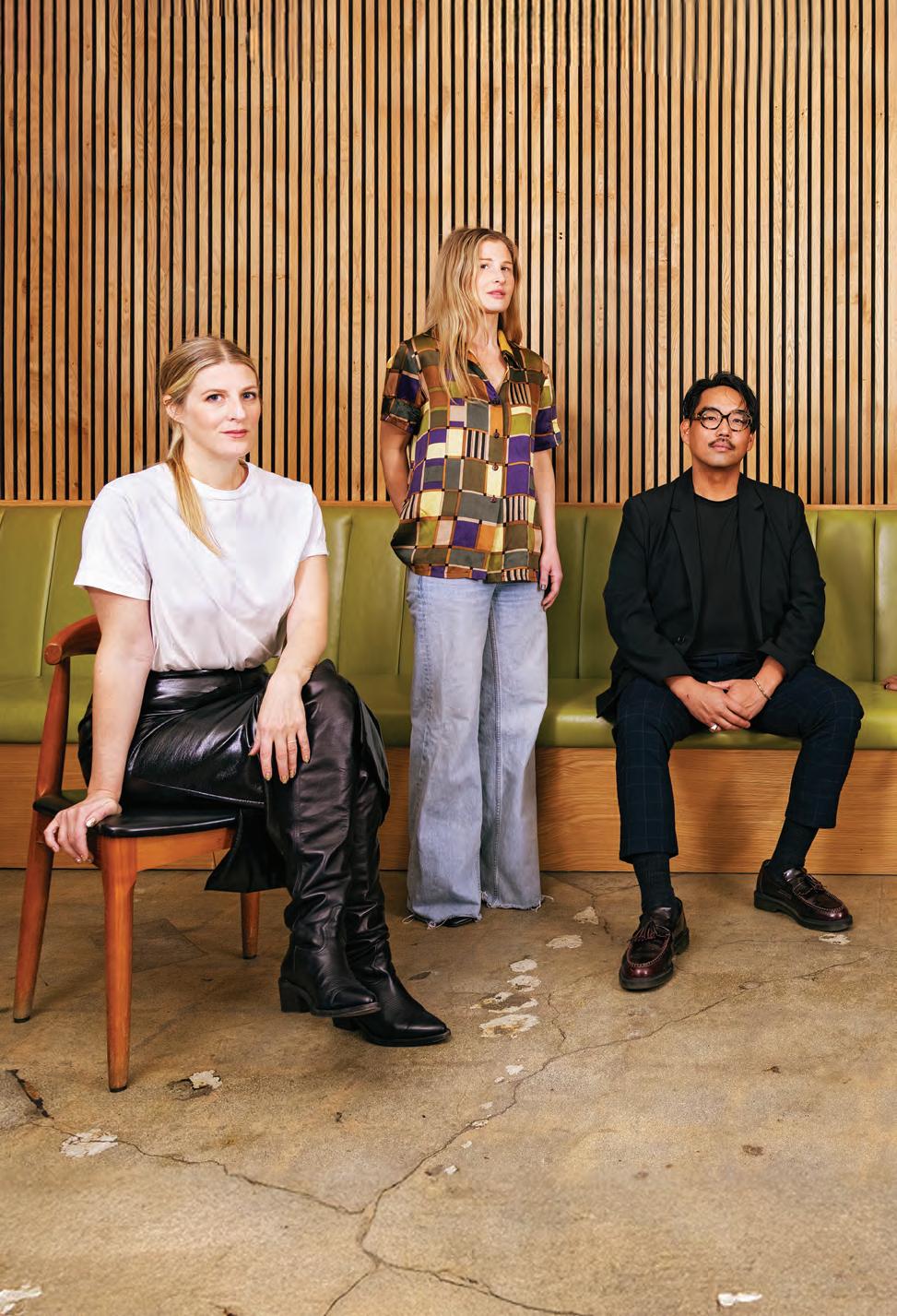
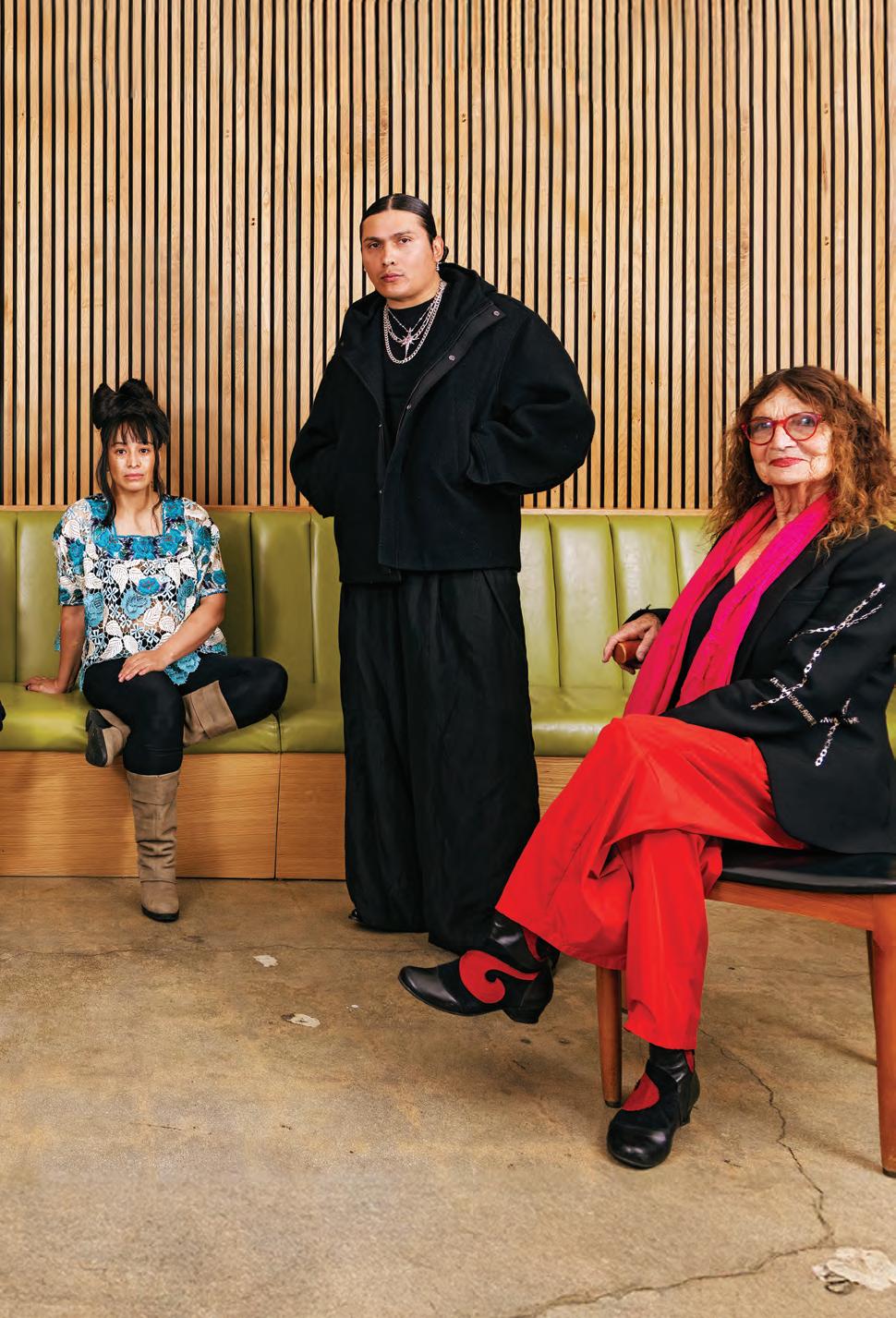
resilience and enduring spirit I believe thrives in Los Angeles.”
Jackie Amézquita, Trazos de energia entre trayectorias fugaces (strokes of energy between impermanent traces), 2025
“In researching the history of Santa Monica, I found intriguing stories … [including] narratives around the Kuruvungna Springs, now the site of University High School in West Los Angeles. The Tongva tribe consider these springs, flowing at 22,000 gallons per day, sacred. They continue to hold ceremonies there. This information led me to reflect on maps [for my Frieze Projects contribution], and how natives and non-natives have navigated and reshaped the land throughout history.”
Claire Chambless, Player, Non-Player, 2025
“Player, Non-Player questions the salvific nature of art acquisition by drawing attention to the symbolic nature of purchasing. The work follows a foraging or gift-giving model rather than monetary exchange—everyone has an equal chance to find and acquire a piece. If they do, they will get a handmade talisman. In light of the fires that have caused such inconceivable devastation in Los Angeles, giving and sharing things that can hold memory feels more important than ever.”
Madeline Hollander, Day Flight, 2025
“Day Flight originated from my experience learning to fly as a teenager. The work offers a guide to your body in relation to the plane, the wind, and LA’s recently ravaged landscape. While the panoramic views of the Pacific Palisades and Malibu are undoubtedly devastating, their harsh transformation is a reminder of the ephemerality and fragility of our environment and the acute reality of living with climate crises.”
Lita Albuquerque, Turbulence, 2025
“This [work] begins with the ruins below the convent I grew up in [in Carthage, Tunisia]. It continues decades later; when I started living in Malibu, I would collect rocks on Highway 1 and bring them to my studio in Venice, where I’d pour powder pigment on them to reflect what I felt was within them. If the Earth itself could speak, what would it say? Turbulence comes as a response to the fire storm that has devastated Los Angeles and the art community. The title embodies what we are feeling and what the Earth itself is expressing.”
IN MAY 1988, SECTION 28, AN EDICT PROHIBITING LOCAL AUTHORITIES FROM “PROMOT[ING] HOMOSEXUALITY,” WAS PASSED BY THE BRITISH GOVERNMENT. THAT SAME YEAR, DEL LAGRACE VOLCANO BROUGHT FOUR FRIENDS TO LONDON’S HAMPSTEAD HEATH—A WELL-KNOWN CRUISING GROUND—FOR A PHOTO SHOOT. VOLCANO, THE AUTHOR OF SOME OF THE QUEER CANON’S MOST ICONIC IMAGES, HAD FALLEN IN WITH THE CHAIN REACTION CROWD—THE COLLECTIVE BEHIND THE WORLD’S FIRST LESBIAN BDSM CLUB. “IT WAS A SAFE SPACE FOR ROLE-PLAYING, LEATHER DYKES, MOTORCYCLE DYKES, MISFITS, AND TRANS WOMEN,” THEY REMEMBER OVER ZOOM. “THERE WAS A SORT OF GANG FEELING.”
AT THE HEATH, VOLCANO INVITED THEIR CO-CONSPIRATORS— JAYNE, ZED, KIM, AND SERENA—TO POSE, PLAYFULLY APPROPRIATING THE PROMISCUITY BETTER ASSOCIATED WITH GAY MALE CULTURE. THE RESULTING SERIES IS AN ODE TO THE PERSISTENCE OF PLEASURE AND POWER OF KINSHIP. THIRTY-SEVEN YEARS LATER, THE IMAGES ARE BEING GIVEN A NEW LIFE WITH QUEER DYKE CRUISING, PUBLISHED BY CULT BOOKSTORE AND PRESS CLIMAX. TO MARK THE OCCASION, VOLCANO SHARES A SNAPSHOT FROM THEIR ROMP IN THE PARK.
—ELLA MARTIN-GACHOT
“[This series] was inspired by gay male sex culture. So you’ve got [these] big butch dykes ‘cruising’ in [Hampstead Heath], gay men’s territory, performing these scenarios in a kind of staged way. This group here—they were mixing it up. They were going to a lot of sex parties together, so it was real. It wasn’t like they didn’t know each other. But I [always] create a space where people can express themselves. I don’t give them a script—it’s more like, ‘Play yourself’…
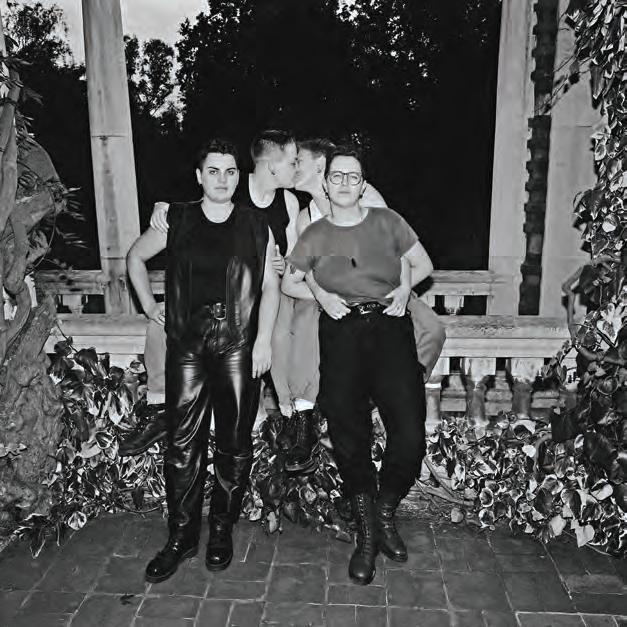
I’ve always been interested in photographing what is unpredictable or random. When it comes together, it’s just magic. I’m interested in multiplicity, unpredictability, and precarity. A little danger, a little risk. But I want people to understand that I’m not making this work just for my family photo album. I’m making it for our album—for us. Photography is not just a job for me; it’s a calling, a destiny.”









































AS COMEDIAN AIDY BRYANT PREPARES FOR HER SECOND RUN AS HOST OF THE 40TH ANNUAL FILM INDEPENDENT SPIRIT AWARDS, SHE CALLS UP FELLOW TWO-TIME HOST NICK KROLL FOR SOME LAST-MINUTE ADVICE.

“AIDY, MY INSTINCT IS THAT I MET YOU WHEN YOU GOT ON SNL. UNTIL YOU’RE ON SNL, YOU’RE INVISIBLE TO ME.” —NICK KROLL
At most awards shows, hosts have earned a reputation for being thinly veiled roast emcees. Cameras pan to A-listers hiding behind their co-stars or opera gloves, and all manner of jabs are fired off liberally. But the Film Independent Spirit Awards demand a different touch. The annual event has cemented itself over the past four decades as a highly anticipated and refreshingly light-hearted celebration of rising and indie filmmakers. That crowdpleasing reputation has drawn a roster of buzzy hosts, including two of Hollywood’s most affable celebrities: Aidy Bryant and Nick Kroll.
Bryant will return on Feb. 22 for her second run on the Spirit Awards stage, while Kroll has helmed the festivities twice himself—alongside his sometime comedy partner John Mulaney—in the late 2010s. Ahead of the show, Bryant and Kroll took a break between rehearsals at New York’s Hudson Theatre (where the pair were among the cast of the live comedy reading series All In: All About Love) for a run-through of her forthcoming hosting appearance, where she’ll celebrate the 40th Anniversary of the Spirit Awards and entertain the creators and fans of 2024 favorites Anora, Sing Sing, The Substance, and more.
Nick Kroll: We have a lot in common—and not just hosting the Spirit Awards. We also share a love of big cups.
Aidy Bryant: I love drinking from my big cup.
Kroll: Mine is an Erewhon mason jar. No big deal. I am in constant fear of being dehydrated, so I drink out of these. Anytime I drink out of a regular glass, I’m embarrassed—like for the cup.
Bryant: Agree. If it’s not big, I don’t rock it. I also want to say I’ve never been to Erewhon.
Kroll: It is so funny how expensive it is. And we can find that funny because we’re America’s two biggest celebrities, and because we get paid the big bucks to host things like the Spirit Awards.
Bryant: How and when did we first meet? I don’t remember. Feels like I’ve just known you for a long time now, maybe 10 years.
Kroll: My instinct is that I met you when you got on SNL. Until you’re on SNL, you’re invisible to me.
Bryant: And since I’ve left, I’ve been invisible to you. I’m so grateful for this time together.
Kroll: Until you hosted the [Spirit Awards] last year. Then you became a central voice on Human Resources, my animated show.
Bryant: It was the honor of my life to be your employee.
Kroll: Thank you, as it was written in the contract for you to say so in any future engagements.
Bryant: You hosted the Spirit Awards with John [Mulaney] both times, right?
Kroll: Yeah, and he was later offered the chance to host the Oscars without me. I think that’s for the best.
Bryant: I wouldn’t want to do those. Would you?
Kroll: That was the fun of doing the Spirit Awards. I felt quite free, like we could kind of do whatever we wanted. Everyone is happy to be there; it’s a little more relaxed. The first year we hosted was 2017. The second time was in 2018, right after #MeToo.
Bryant: They said, “We need to put a voice to this. Who should host? Nick and John.”
Kroll: “Let’s get those two white guys back up there.” Both experiences were equally fun, but it felt more complicated the second year. How do you feel going into the second year?
Bryant: I had so much fun the first time that I guess that’s my only goal this time: to have fun again. The reputation of an award show host is that you gotta come in there and blow those fuckers away with your bazooka of hot takes and satirical burns. But I’m really thrilled to be there. I also really believe in the ethos of Film Independent.
Kroll: In that room, you really do feel a shared value system. Our job is to make lots of jokes but also, in this particular case, you’re not like, “I’m gonna fucking shred these people and their movies.” It’s such a big day for people—these are independent filmmakers who have spent years toiling to get their very niche films in front of people. Diminishing what they’ve done doesn’t sound like much fun.
Bryant: If you’re hosting the Oscars and the biggest celebrities in the world are there, you want to take them down a peg. I know one of the movies this year was shot in 11 days in the woods for like $10. I don’t need to be swinging a bat at that.
Kroll: We hosted the year that Three Billboards Outside Ebbing, Missouri was nominated. Frances McDormand was there, who absolutely rocks. Later at the after-party I saw her trying to sneak out with a jacket over her head. Normally, I’d think, Oh my God, that’s Frances McDormand, just leave her be, but since I’d been hosting, I felt a little entitled, like I was part of the scene.
I was like, “Franny! Franny!” She stopped, looked at me, and said, “Okay, I will talk to you.” I replied, “Great. I need you to know that you look so much like my therapist.”
Bryant: Do you remember how you prepared to host with John?
Kroll: We ran it a lot. I’m blown away and mystified by people who host these things and don’t run it. For you at SNL or for me with stand-up, you’re like, “I need to hear from an audience what’s working and what’s not working.”
Bryant: I can’t even fathom just looking at a piece of paper and then being like, “Great, this is what I will do.” Even if I’m selling myself out by testing material, it’s worth it to me. I just want them to have a good time. I’ll show hole if I have to.
Kroll: Do you plan to show hole at the show?
Brant: I’m thinking about it for sure—toying with the idea, toying with which hole.
Kroll: It’s a terrible turn we’ve taken here.
Bryant: Do you have constructive feedback for me based on my last performance?
Kroll: Picture the audience absolutely naked. But no, honestly I loved being in that room with people who spent a lot of their life force to make something that they really believe in. It’s a big day, and you just want to show them a good time. Plus, you can hit the Santa Monica boardwalk immediately afterwards.
Bryant: As soon as I finished hosting the awards last year, I hopped on my skateboard, got a corn dog, and just started cruising the beach for guys. Do you know how to skateboard?
Kroll: I do not. Do you?
Bryant: No.
Kroll: Fuck, next year.

“AS SOON AS I FINISHED HOSTING THE AWARDS LAST YEAR, I HOPPED ON MY SKATEBOARD, GOT A CORN DOG, AND JUST STARTED CRUISING THE BEACH FOR GUYS.” —AIDY BRYANT
“IT DOES, IN FACT, FEEL LIKE MY MOMENT.”
PHOTOGRAPHY BY BRANDON HICKS
STYLING BY MEAGHAN O’CONNOR
By Rachel Cargle
While the world catches up to the brilliance of Natasha Rothwell, she’s been “10 toes down” in developing characters and taking on roles that offer her, and her audience, a 360-degree view of what it means to be “whole” onscreen.
Since 2014, we’ve caught glimpses of Rothwell’s wit and wisdom as a writer on SNL and as Issa Rae’s hilarious friend Kelli on HBO’s Insecure. In recent years, her star has reached new heights with roles like Belinda, the loving and striving spa manager on the hit Max show The White Lotus, and Mel, a broke JFK airport worker who sets out on a journey of self-discovery in the Hulu series How to Die Alone, which Rothwell created.
“It feels like an expansion that I’m now allowing others to witness,” she shares over a recent afternoon Zoom. She apologizes as her black goldendoodle skitters by, leaning down to ruffle the puppy’s ears. Rothwell’s soft curls and deep brown skin glow on my laptop screen. She exudes the ease and intention of someone who has found their footing. “I’ve been feeling that growth for some time, and I think it does, in fact, feel like my moment,” she reasons.
Rothwell smiles as she speaks, but impostor syndrome seems to creep up on her midsentence. “I say that with a lot of trepidation because, despite my vocation, I can be pretty shy,” she admits. “It’s ultimately thrilling to be in this place where I’m garnering so much respect in my industry and having so many
more people exposed to my work. But taking up space as a fat, Black woman; as a creator; as someone who has, for her whole life, desperately wanted to be seen—that’s equally terrifying.”
Rothwell hasn’t let those feelings overwhelm her. As she developed How to Die Alone (a seven-year dream come to life), she let her full self show up—even the “unhealed parts,” as she puts it. In one scene in the season finale, her character strips down to her bra and panties on a public beach—a level of public exposure Rothwell has never faced in her personal life. Doing it on television added new layers of vulnerability, but she pushed through, feeling powerful and new when she emerged. “It’s painstaking,” she says. “You can only be as honest as you’ve been with yourself.”
She finds that her Emmy-nominated role as Belinda on The White Lotus is another opportunity to be a more expansive version of herself. As she heads into season three alongside a star-studded cast that includes Parker Posey and Carrie Coon, Rothwell challenges what audiences might expect from her screen presence. “When you walk through the world as a Black, plus-size woman, there are a lot of expectations people have based off of their preconceived notions of film and television,” she explains. “The mischievous side of me really delights in subverting those expectations.”
Rothwell was born in Wichita, Kansas, but spent her childhood on military bases around the world. Her father, who was in the Air Force,
and her mother, who worked in health care, fostered a sense of pride in whatever work she chose to pursue. Ultimately, it was theater, then the comedy circuit, that beckoned Rothwell. But it was never just about the stage. Her occupation as an actor has always been accompanied by a role as an advocate for the issues she feels are worth the fight: mental health care, voting, and media representation.
Those values pulled Rothwell into developing a production company of her own, Big Hattie Productions, named after the late Wichita-born actor Hattie McDaniel, who is best known for her Academy Award–winning role as Mammy in Gone with the Wind. Rothwell stumbled upon the film as a teenager working at Blockbuster. For the first time, she saw someone onscreen who looked like her.
“I saw the deference the other actors gave to her in each scene, and how she demanded the attention of every person that she engaged with in that film, and I saw very clearly why she won the Academy Award,” Rothwell says. “My production company is about subverting expectations, demanding that attention, and centering the voices that are often marginalized in the industry.”
When I ask Natasha where her inspiration is taking her next, she carefully avoids specifics but makes one thing clear: “I’m very picky about what I do; I’m very deliberate about the projects that I take on. [But] each one channels the spirit of Hattie McDaniel—the spirit of being so good they can’t ignore you.”


“WHEN
YOU WALK THROUGH THE WORLD AS A BLACK, PLUS-SIZE WOMAN, THERE ARE A LOT OF EXPECTATIONS PEOPLE HAVE BASED OFF OF THEIR PRECONCEIVED NOTIONS OF FILM AND TELEVISION.”
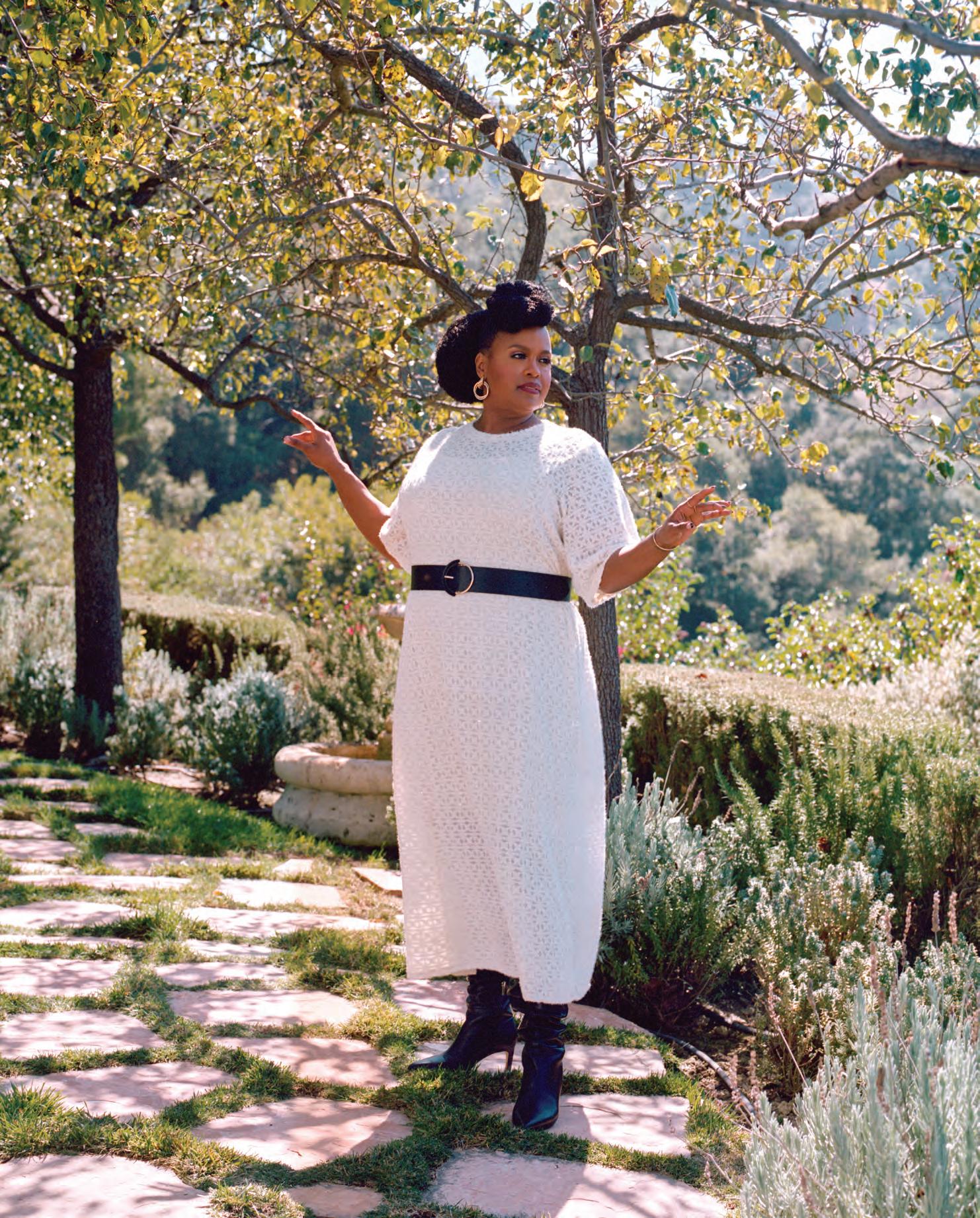
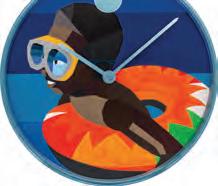
FOR THE NEWEST EDITION OF ITS ARTIST SERIES, MOVADO ENLISTS DERRICK ADAMS.

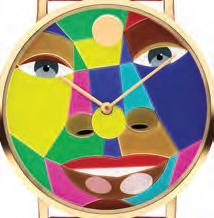


By Sophie Lee
The watch was uniform in color—black with a silver case, hands, and single dot topping the face, as if the sun had just reached high noon. When the Movado Museum Classic became the first dial to enter the collection of the Museum of Modern Art in 1960, Nathan George Horwitt’s design entered the canon of midcentury minimalism. Sixty-five years later, artist Derrick Adams is reimagining the timepiece for our era.
His is the latest in the Swiss watchmaker’s Artist Series. In the late ’80s, Movado inaugurated the project with the patron saint of Pop art, Andy Warhol, who splashed a black-and-white photo of New York across five interlinking watch faces. Collaborations with the likes of Proenza Schouler, Kenny Scharf, and James Rosenquist followed, each epitomizing the artistic tides of the time.
For this year’s edition, Adams has invited a suite
of his signature Cubist-inspired portraits onto five sleek 40-millimeter watches, washing or dotting the straps in harmonizing swaths of high-octane hues, as well as two wall clocks and a collector’s set. “ With his employment of distinct geometric shapes, bold prismatic colors, and fantasticaly intricate patterns, Derrick creates a visual language which is dynamic and iconographic,” says Studio Museum in Harlem Director Thelma Golden, a regular collaborator of Adams’s who first encountered his work when she included him in the institution’s 2003 show “Veni Vidi Video.” “It only makes sense that his artwork be displayed on a watch that can live up to these same qualities.”
Indeed, Adams’s depictions of Black joy and leisure have disrupted art-historical iconography for over two decades. Since his early inclusion in the Studio Museum group show, the Baltimore native’s work has traveled around the world, injecting the artist’s signature whimsy into spaces as disparate as a Long Island Rail Road station
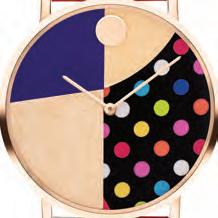
in Brooklyn and the Fondation Louis Vuitton in Paris.
For Movado, a piece from one of Adams’s most well-known series, “Floaters,” capturing a day spent in the water, gets miniaturized, transporting wearers into the balmy insouciance of summer with one flip of the hand. Another featured work, Fashion Fair, dives further into abstraction, its blocks of color extending into the watch’s strap like a chromatic timeline. Each model is finished with a bespoke stainless steel caseback, leather strap, and presentation box evoking Adams’s ebullient universe. Across the watches, clocks, and collector’s set, only 125 numbered editions of each have been produced.
For Golden, the weaving of Adams’s visual language into the accessory space is an investment in more ways than one. “To have his work depicted on these watch faces,” she concludes, “is to be able to carry a piece of art history with you every day.”


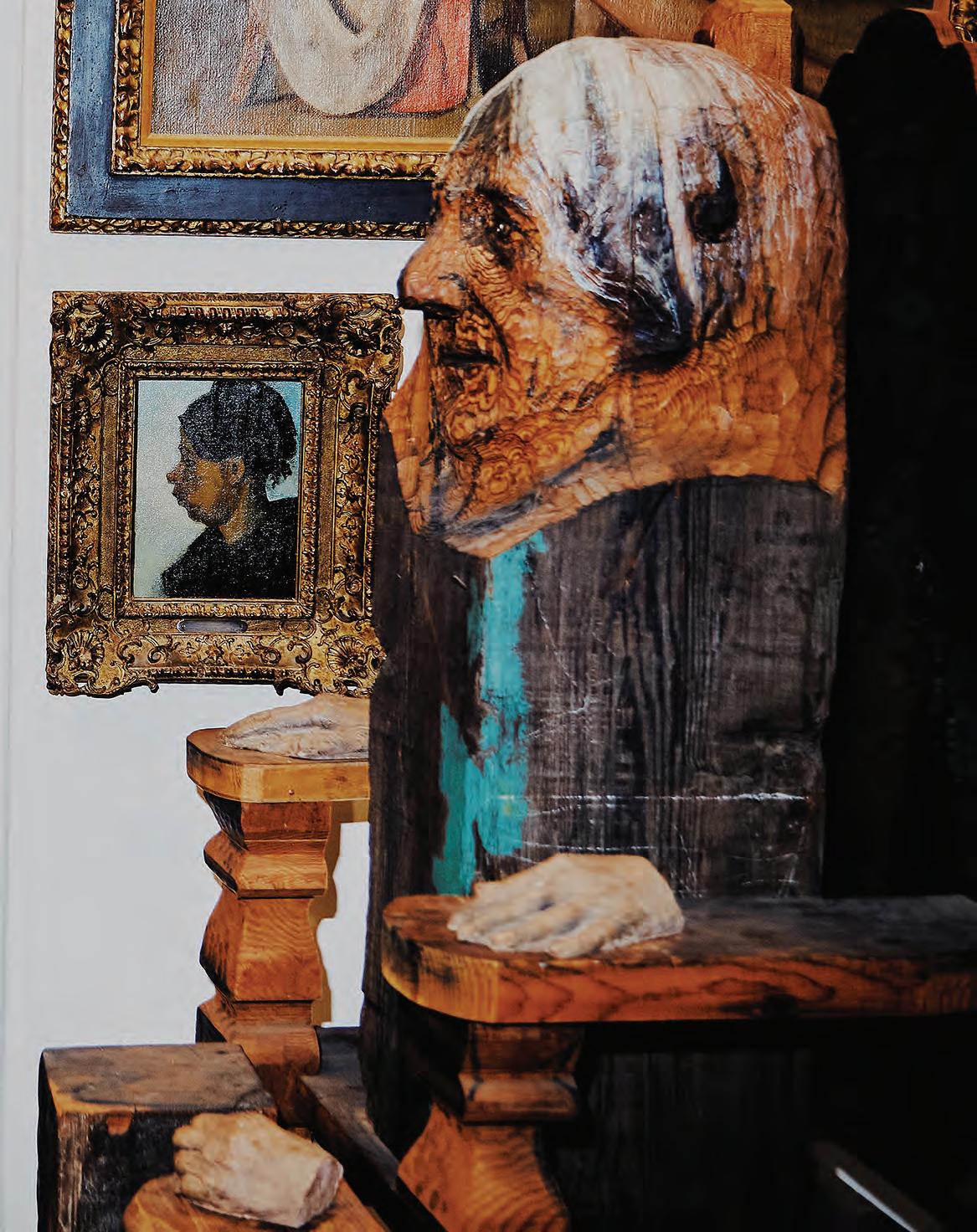
CULTURED’S CO-CHIEF ART CRITIC TALKS TO THE COLLECTOR AND GALLERIST ABOUT BUYING A VAN GOGH AND STARTING A MUSEUM ON MARS.
By John Vincler
I thought Hong Gyu Shin was one of the most interesting figures in the New York art scene even before I was sitting at his dining table, looking at his newly acquired Van Gogh. The small canvas, Head of a Peasant, painted in 1885, depicts a woman in profile with her hair gathered up into a dark hat. In Shin’s crowded hang, it shares wall space with a wildly varied range of artists, including the 1980s street artist Richard Hambleton, a peer of Basquiat and Haring whose two “Shadowman” figures loom like apparitions overhead.
Anyone with deep enough pockets can buy a Van Gogh. But few Van Goghs go on to join such eclectic company. Shin, the South Korean–born proprietor of Shin Gallery on New York’s Lower East Side, snapped this one up last May at Sotheby’s for about half its low estimate of $1.5 million.
His floor-to-ceiling arrangement has the Van Gogh nuzzled below a larger Balthus of a topless redhead from 1947. They hang beside a Sam Francis painting from 1950 that looks as if a late Rothko ate a Joan Mitchell, with a gesturally painted yellow arch peeking out near the bottom of its darkly overpainted expanse. I snap a photo of a graphite drawing by Eugène Delacroix in a gilt frame near the ceiling to send to a friend who admires his journals. A sculpture of hand-carved oak and colored resin by Marisol, Portrait of Willem de Kooning, 1980, sits sentry before it all, incorporating cast copies of her subject’s hands. Shin’s apartment is like an eccentric—and packed—party of artists spanning across centuries.
“I RECENTLY REALIZED THAT HAVING A LOT OF MONEY IN MY BANK ACCOUNT WOULDN’T MAKE ME FEEL MORE SECURE.”
With continued buzz about a downturn in the market and galleries noticeably retreating into conservatism, I wanted to check in with Shin, who, after starting his gallery in 2013 between his sophomore and junior years of college, has never followed the crowd or faded into the background. (That same year, he bid $100 million on a then-record-setting Francis Bacon triptych at Christie’s. Although he didn’t win it, Shin immediately drew the attention of art-market machers.) In the gallery’s second year, he staged a show of photographs by the Viennese Actionist Rudolf Schwarzkogler and the Japanese photographer Nobuyoshi Araki, known for his erotic themes. The gallery was made to resemble a massage parlor, garnering coverage in the New York Post with the headline, “Horny guys seeking ‘happy ending’ fooled by fake massage parlor.”
Ten years later, Shin’s project has matured as it remains at the same (now expanded) location, with the main gallery on the first floor and a

project space, Shin Haus, which specializes in emerging artists, in the basement. I ask him if it has gotten any easier running a gallery. In fact, the stakes have only gotten higher. “At the start, if I made $5,000 in a month it seemed like a lot of money,” he says. Now, if that were all he made over several months, he would have to close.
When I inquire about his plans for the future, his answer catches me off guard. “My ultimate goal is opening a museum on Mars,” he says. I awkwardly shuffle my notes and write “Mars?” before asking, tentatively, if he is thinking about Mars pre- or post-human occupancy? He delivers his answer, “pre-,” in a manner that is at once charming, hilarious, and dead serious, with an implied obviously
I first met Shin when fact-checking my New York Times review of his 10-year anniversary show, “Amalgamation,” in 2022. Even then, despite his soft-spoken manner and clean-cut collegiate mien, he struck me as having the attitude of an artist rather than a gallerist or collector. He notes that he generally lives a humble existence, taking the train or riding Citi Bikes to traverse the city. He’s wearing a favorite cardigan he’s had since he was in high school. He spends much of his time in the gallery or surrounded by his collection at
home, researching an acquisition or planning a future show. He’s already achieved two of his personal dreams: to own a Picasso and, now, a Van Gogh. He acquired the Picasso, Femme endormie, an oil on canvas from 1933 barely larger than a postcard, during the pandemic.
He kept it by his bedside “so I could look at it at the start of the day and at night before I went to bed,” he tells me, adding with a laugh, “We basically slept together.” Then there was an opportunity to sell at a great price.
I assume that’s how he bought the Van Gogh, but he corrects me. “My bank account is like, total Buddhism,” he says. If a lot of money comes in, it quickly goes out. “I recently realized that having a lot of money in my bank account wouldn’t make me feel more secure.” Instead, he prioritizes having money only insofar as it helps him realize his projects.
Does Shin think of himself as an artist? “I express my artistic desires and ideas through curation, so each exhibition is, I think, my artwork,” he says. He sees himself as a storyteller who puts artists first: “They’re the ones who change the world.”
“I EXPRESS MY ARTISTIC DESIRES AND IDEAS THROUGH CURATION, SO EACH EXHIBITION IS, I THINK, MY ARTWORK.”
ONE WRITER DISSECTS THE OUTER GARMENT’S UNDYING GLAMOUR.
By Liana Satenstein
Whenever I wear my Burberry trench, I am showered with compliments. People love the poshness of it. The trench is the sleek antidote to any hangover or sartorial mess. An instant upper. A mainlining of heritage. After all, you can throw the roomy piece over anything. I don it over whatever slapdash slop I wear, and promptly transform into some clay-bird-shooting dame happily marooned in the Cotswolds. I wear my dark green trench in two different ways: undone and open in a deliciously louche, just-railed 9½ Weeks style, or knotted at the waist to give the body a tony feminine curve, a tie-it-together elevation.
Thomas Burberry, who founded the house in 1856, knew his way around weatherproof pieces. He made outerwear out of gabardine, a waterproof fabric woven so tightly that nary a droplet can permeate. Sure, waterproof pieces existed before, but the beauty of Burberry’s gabardine was that it allowed ventilation. He patented it in 1888.
Explorers and adventurers wore Burberry’s outerwear while floating across countries in hot air balloons or traversing Antarctica. Later, Burberry transformed his pieces into something not only waterproof but also warproof: He created coats for soldiers in WWI, complete with epaulets and D-rings and extra-large pockets for maps. This, as the name implies, is considered the origin of the classic Burberry trench coat, born in the literal trenches.
A 1923 advertisement makes the Burberry trench—the company was then named Burberrys—seem like the Holy Grail of outerwear. “When rain, drizzle or mist make an ordinary Overcoat feel like a wet blanket,” the tagline read.
But the trench coat is as fashionable as it is useful. Browsing through Vogues of yesteryear, I spotted a post-date-night Christy Turlington in an Arthur Elgort–shot editorial from 1998. In the image, Turlington saunters up the steps at Via Rodeo in Beverly Hills wearing a skimpy cream shift dress with a Burberry trench thrown over her shoulders like an engulfing shawl, her arms peeking out from under while she totes a dainty lady bag. Another image from 1986, in a tiny margin insert, shows a model in slacks and a trench with an umbrella under her arm and the caption “best weather/travel insurance.”
In an era of fast fashion and ever-churning trends, this coat is not an obnoxious It bag that will fade from the sartorial conversation next season, nor is it a pair of pants we risk growing out of. The Burberry trench is a perpetual classic because it is indispensable.
Today, it’s propagated into many silhouettes. Some are snappy and short, skimming the top of the hips. Of course, there is the standard, fail-safe ankle length. The color scheme is a muted rainbow of neutrals: verdant, rich countryside green; blue so deep it’s almost black; and beloved warm honey. I prefer the nontraditional dark green version, officially titled the “Long Cotton Blend Trench Coat” in “Military.” I leave the epaulets undone and the collar flipped up for a peekaboo of that prim house-check lining.
Pro tip: No matter how you wear it, never buckle the belt through the loops, but tie it so the straps delightfully fall at the sides of the body. Whether you’re model Kate Moss or explorer Sir Ernest Shackleton, that’s the Burberry-approved look.
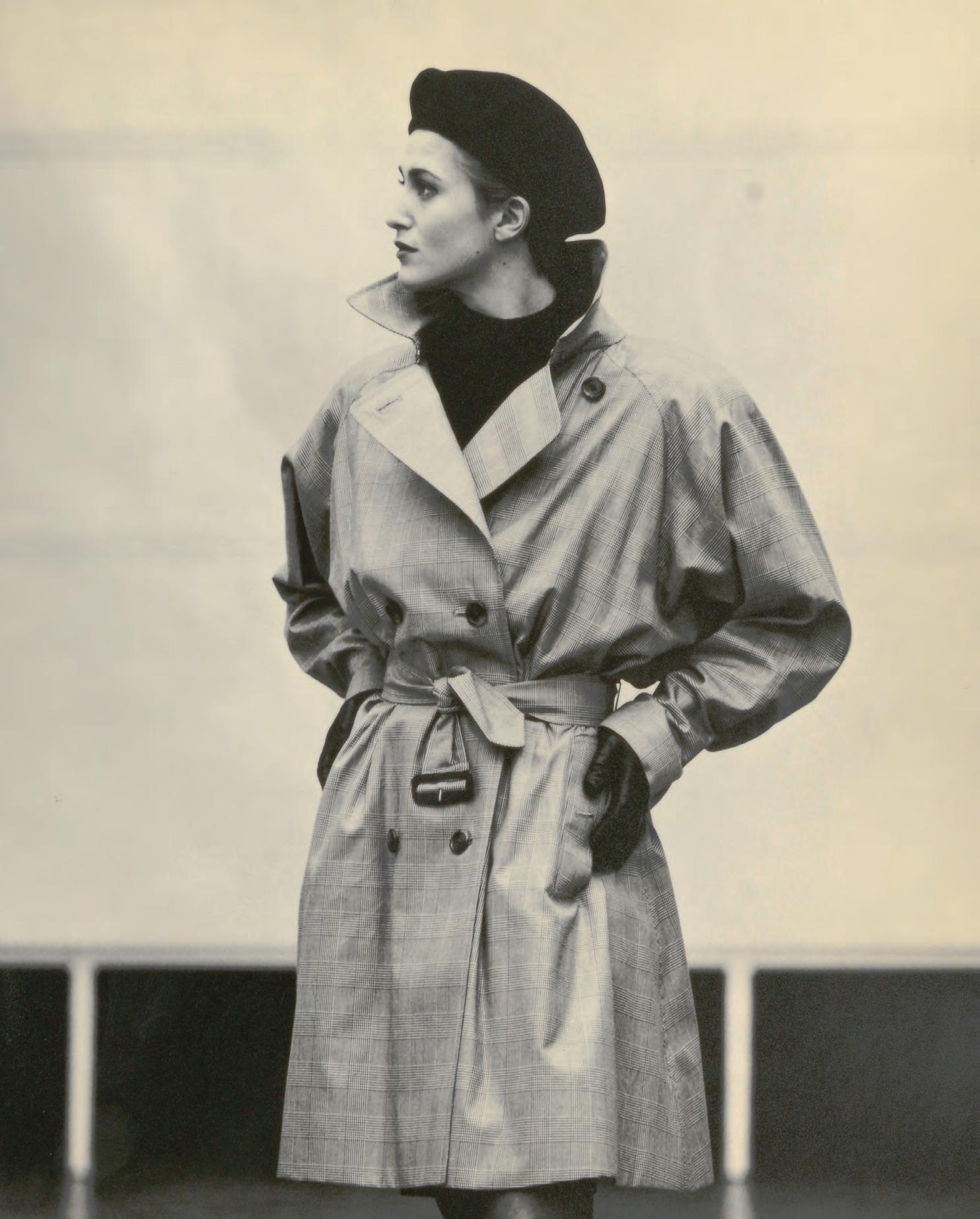
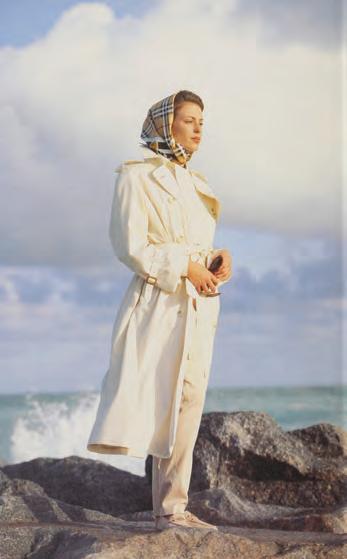
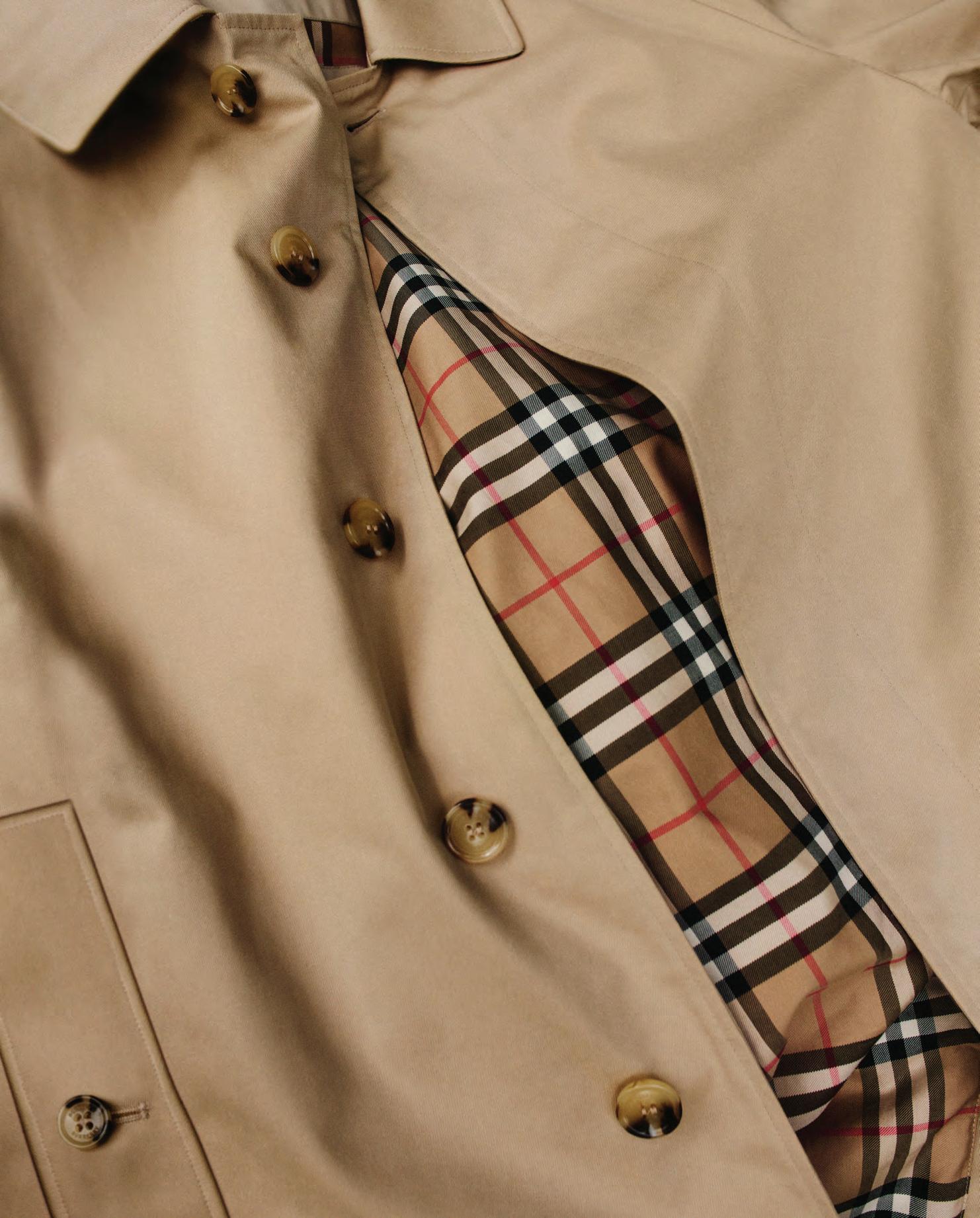
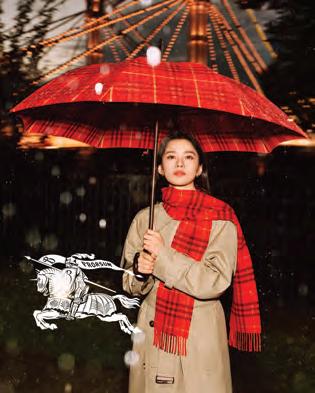
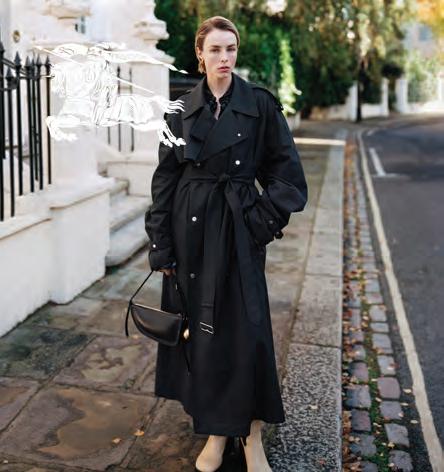




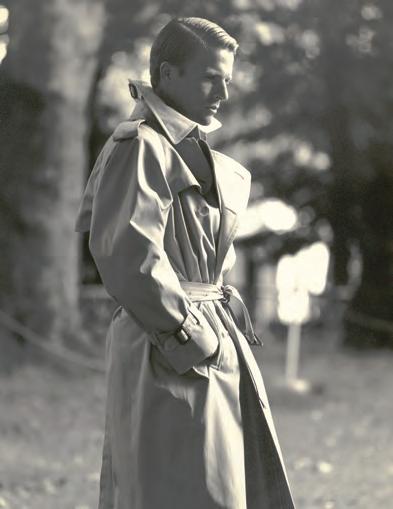

BY ELISSA SUH
THE DANISH-IRANIAN DIRECTOR IS NO STRANGER TO CHALLENGING SUBJECTS. BUT THE APPRENTICE TESTED HIS RESOLVE.
“There’s no upside to making a film like this,” Ali Abbasi says of his latest feature, The Apprentice, a biopic chronicling Donald Trump’s rise to prominence under the mentorship of Roy Cohn in the 1970s and ’80s. “If I were an American director, I might have passed [on it], too.”
Initially, the script, written by the journalist Gabriel Sherman, made the rounds among highprofile filmmakers like Clint Eastwood and Paul Thomas Anderson. Both declined, deeming it a business risk. Without any direct ties to the U.S., the Danish-Iranian Abbasi was a fitting choice. He first became aware of Trump in June 2015, on the day the infamous real-estate mogul descended the escalator of his Fifth Avenue skyscraper to announce his bid for president.
“I didn’t grow up in the U.S.,” says Abbasi, “but living in Iran, you can’t help but have a relationship to [American] politics.” The filmmaker was initially drawn to Trump’s candidness before his rhetoric took a divisive turn—the president’s “Muslim ban” had a personal impact on Abbasi, who at the time held an Iranian passport and had difficulty traveling to the Telluride Film Festival for a screening of his 2018 film Border. It was at the festival that he first encountered Sherman’s script.
“I DIDN’T GROW UP IN THE U.S., BUT LIVING IN IRAN, YOU CAN’T HELP BUT HAVE A RELATIONSHIP TO AMERICAN POLITICS.”
The Apprentice represented a departure from the outlandish thrillers and supernatural horror films for which Abbasi had become known. This story, the filmmaker notes, was defined by its “real agenda in understanding this person without bashing or praising him.” It reminded him of Stanley Kubrick’s Barry Lyndon. In the 1975 film, the titular Irish striver ascends the ranks of society only to confront the consequences of his ambition
and deceit. “Barry is a social climber who doesn’t know where he’s climbing. Donald is similar. He’s not sympathetic, but you begin to understand him,” he says.
Another aspect of Barry Lyndon that resonated with Abbasi was Kubrick’s ability to immerse viewers in the past through aesthetics atypical for the film genre. (The minimal electric lighting and wide angles created a painterly effect that was entirely Kubrick’s own.) The distinctiveness of that approach served as a foundational inspiration for Abbasi and Director of Photography Kasper Tuxen, who shot 2021’s The Worst Person in the World. “Recreating a past era with pristine detail always felt a bit too fetishistic and inauthentic to me,” Abbasi explains. Instead, the film begins with a lived-in texture reminiscent of 16mm footage before transitioning into the cruddier appearance of broadcast video. This visual shift not only mirrors the temporal transition but a narrative one, coinciding with the themes at play: the early construction of Donald Trump’s mythological image followed by its deconstruction.
“EVERY TIME I MAKE A MOVIE, I ASK MYSELF THE SAME QUESTIONS: DO I LIKE THE SCRIPT? THE DYNAMICS? THE MOVEMENT? ”
Unexpectedly, The Apprentice eschews sarcasm and cynicism, opting instead to present Trump’s narrative as a human drama. “Every time I make a movie, I ask myself the same questions,” he says. “Do I like the script? The dynamics? The movement? ” Some critics have argued that the film, which initially struggled to find a distributor, fails to deliver a sufficiently hard-hitting portrayal of its subject. Meanwhile, Trump has dismissed it as a “disgusting hatchet job.”
Abbasi is less interested in the film’s political impact than its artistic merit—whether audiences think it’s good or bad. The Canadian filmmaker Mary Harron (best known for I Shot
Andy Warhol, American Psycho, and The Notorious Bettie Page) sent him a note of support. “She felt it was absolutely the right decision not to make these people monsters —because that would have let what she called ‘vulture capitalists’ off the hook,” Abbasi explains. “The underlying point is not the humanity of these characters but the system at work. With looser checks and balances, that system can turn anyone into a monster.”
Since its premiere at Cannes last May, where it received an eight-minute standing ovation, the film has elicited enthusiastic reviews of its stars, Sebastian Stan (as Trump) and Jeremy Strong (as Cohn)—both of whom were nominated for Academy Awards. Abbasi—nominated for an Independent Spirit Award for Best Director himself—adopts a notably hands-off approach when collaborating with actors. “I’ve gotten a reputation for being good with [them],” he remarks, “which isn’t really true. At this level, you’re dealing with very dedicated professionals. It’s not like I can give them any technical tips. In fact, I could make them worse by telling them shit they don’t need to hear.” He feels that his role on set is to cultivate a sense of spontaneity—coordinating a seamless flow between takes and allowing the creative process to unfold naturally.
“IF I WERE AN AMERICAN DIRECTOR, I MIGHT HAVE PASSED ON THE APPRENTICE, TOO.”
For the first time in a decade, Abbasi doesn’t have his next project lined up. After a relentless stream of films, which overlapped in their making, he finally has a moment to pause and reflect. “It’s been like dominoes. I want to stop and look at the world around me,” he says, noting that in the past 10 years, the political landscape and what we define as truth has shifted dramatically. “Now, anything with enough likes on X can become reality. Conspiracy theories can rival rational narratives. There is no hierarchy of realities,” he concludes. “Our world has fundamentally changed—and we need to address it.”




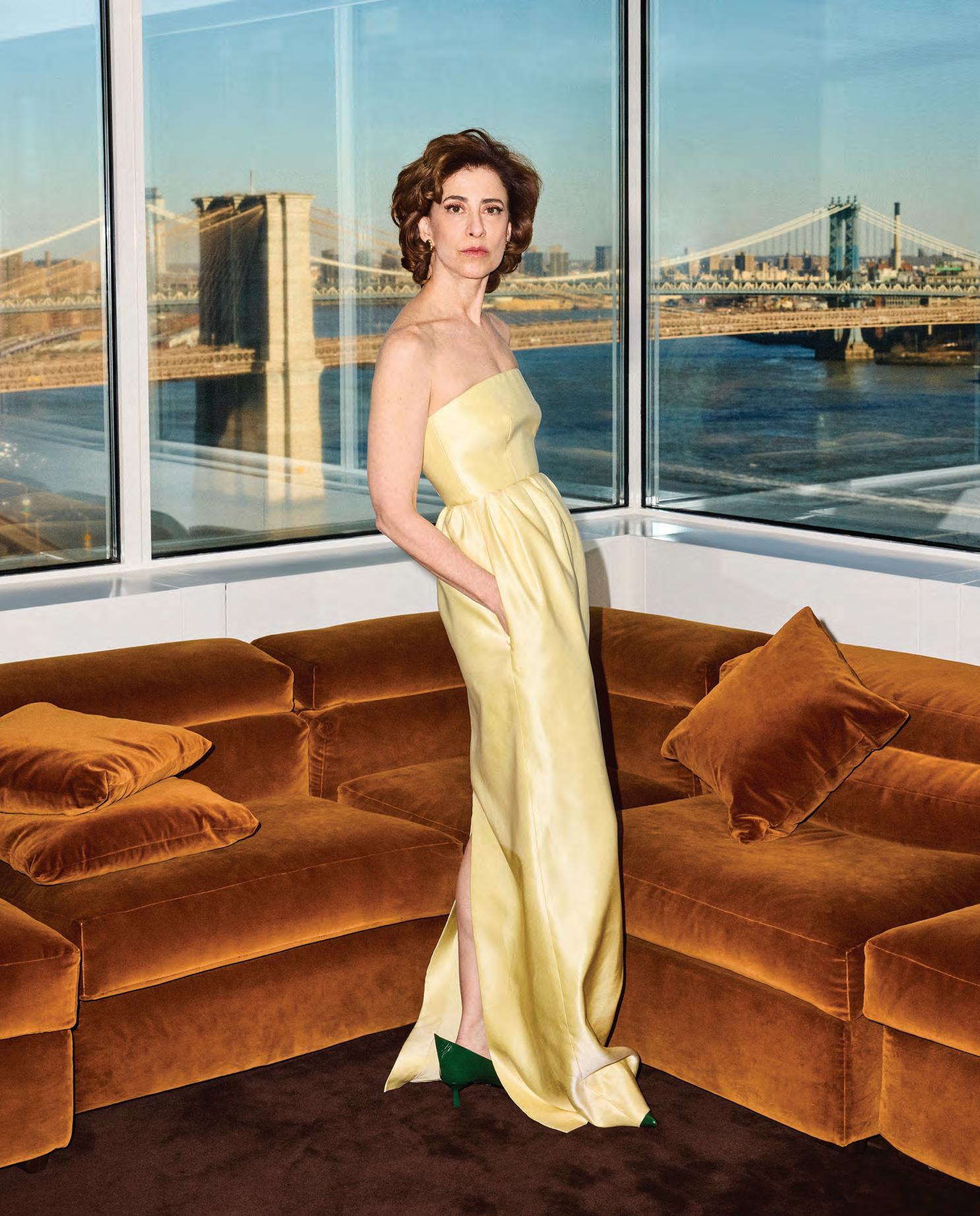
By Raven Smith
THE ACTOR IS ALREADY A LEGEND IN HER NATIVE BRAZIL. NOW, HOLLYWOOD IS CATCHING UP.
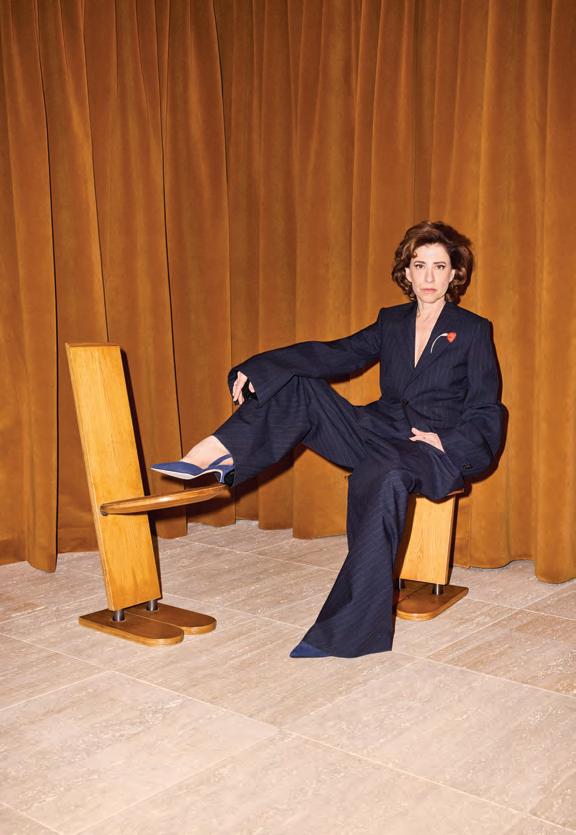
Even in the worst aesthetic circumstances—perched precariously on the edge of her bed, self-lit, wired headphones in her ears, and coming off the back of “working like a mad dog”—Fernanda Torres lights up her Zoom window.
Her eyes are deeply swimmable as she calls in from Lisbon (“My Shangri-la”), and her rather intoxicating mix of composure and enthusiasm is palpable through the pixels. The 59-year-old actor is a household name in her Brazilian motherland—she lives in Rio de Janeiro, where she was born. Rather late to the party, Hollywood is finally waking up to Torres’s nuanced, softly powerful screen presence, thanks to her Golden Globe–winning turn as Eunice Paiva in Walter Salles’s biographical drama I’m Still Here.
The film, which has also earned her an Oscar nomination for Best Actress in a Leading Role, charts the 1971 obliteration of the Paiva family’s bustling, beachadjacent domestic bliss in Rio. (It’s based on Marcelo Rubens Paiva’s 2015 memoir of the same name.) Torres’s character, a mother to five children, unravels under the totalitarian tactics of Brazil’s dictatorship as her former-congressman husband is disappeared by the military government. Over the course of the film, she transforms from a serene housewife to a fearless human rights activist and lawyer. “[Eunice] was the great woman behind the great man, the Betty to his Don Draper,” Torres says. But after her husband dies tragically and violently
and she endures 12 days of interrogation for questioning his fate, her life takes a new shape. (The real Eunice graduated from law school at 48.) “She never fell to pieces,” Torres reflects. “Her smile was her weapon.”
To play Eunice, Torres mined her own memories of ’70s Rio and crafted a private playlist of Ella Fitzgerald’s love songs to anchor herself in her character’s past. It’s this meticulous foundation—half ritual, half art—that compassionately grounds I’m Still Here’s staggering tragedy and propels us through Eunice’s story.
Torres’s subtle embodiment of her character has landed her squarely in the international spotlight. She seems both ready for this moment and somewhat bemused by the attention. “It’s always good when the dark horse wins,” she says, grinning like she’s just pulled off a heist whilst knowing she is altogether deserving. Did she expect to take home the Golden Globe statuette in a category stacked with such English-language stars as Kate Winslet, Angelina Jolie, and Nicole Kidman? “I don’t like to have expectations. Every time I prepare for the worst, good things happen,” she says. Was she intimidated by the others in her category? “We do the same job—they are actors like me.”
After all, Torres is only a dark horse in this hemisphere. She was born into Brazilian acting royalty: Her mother, Fernanda Montenegro, was the first Brazilian nominated for a Best Actress Oscar. Torres was raised in Monty Python–esque youth theater under the quiet pressure of her mother’s legacy. “I always knew I’d never be as big as her,” she admits. “She’s a workaholic in a way no one can match.” But Torres has found her own route to accomplishment, navigating the industry with a refusal to leapfrog, to be rushed.
That patience has paid off. I’m Still Here became Brazil’s highest-grossing post-pandemic film. Now that she’s on the Oscar-campaign juggernaut, stopping for a beat might feel perilous. But Torres doesn’t worry about losing momentum. “The best things happened when I was just being idle,” she says.
In a world of Hollywoodian platitudes, Torres feels refreshingly like the real deal—a performer who prepares methodically, works stealthily, and leaves audiences reeling. She’s no stranger to accolades (she won Best Actress at Cannes as a 20-something), but her Golden Globe acceptance speech, delivered with unshowy humility, cut to the heart of her appeal. “My god,” she told the audience, emanating impeccable elegance and emotion in a black floor-length gown. “I didn’t prepare anything because I was glad already.”

“I DON’T LIKE TO HAVE EXPECTATIONS. EVERY TIME I PREPARE FOR THE WORST, GOOD THINGS HAPPEN.”

“I ALWAYS KNEW I’D NEVER BE AS BIG AS MY MOTHER. SHE’S A WORKAHOLIC IN A WAY NO ONE CAN MATCH.”

HAIR BY SHIN ARIMA
MAKEUP BY MARK CARASQUILLO
PRODUCTION BY DIONNE COCHRANE
STYLING ASSISTANCE BY BRIAH ARTEMIS TAUBMAN
PRODUCTION ASSISTANCE BY BRITTANY THOMPSON AND SASHA FYFFE
SPECIAL THANKS TO WSA


By Haley Mlotek
Photography by Anett Pósalaki
THE 28-YEAR-OLD ACTOR WON OVER AUDIENCES AS A FRANTIC, RAVENOUS FINANCIER OVER THREE SEASONS OF HBO’S INDUSTRY. NEXT, SHE HOLDS HER OWN AGAINST CATE BLANCHETT AND MICHAEL FASSBENDER IN STEVEN SODERBERGH’S NEW SPY FLICK.
“Fucking made for each other,” Marisa Abela hisses to her co-stars Cate Blanchett and Michael Fassbender during a turning point in Steven Soderbergh’s new film, Black Bag. The spy thriller, which hits theaters in March, chronicles the exploits of a couple (Blanchett and Fassbender) in the espionage business, a field where a loving marriage is infinitely more dangerous than a volatile one. “It’s got that classic, funny, sexy, fast feeling,” Abela says of the film from her home in London. “A film buff would be able to watch the movie and know it’s Soderbergh.”
The 28-year-old actor came to the project after an electrifying third season of Industry, the HBO show about the professional, emotional, and sexual machinations of ruthless and wounded entry-level investment bankers. Abela plays Yasmin, the season’s undisputed star, who is at the center of a thorny mystery swirling with trauma, perversion, and power. She began filming the latest season only one week after wrapping Back to Black, the biopic focused on the early chapter of Amy Winehouse’s career. Released last April, it drew high praise for Abela’s performance as the beloved and troubled singer (even if the film itself had mixed reviews at best).
Both of these pivotal roles share certain qualities. As Yasmin, Abela is a wounded sadist radiating a dangerously alluring beauty; as Winehouse, she’s a generational talent with doom posthumously projected onto everything she made in her short life. In many ways, Abela plays her characters like a dreamy brunette vixen of a different era: soft and sharp, striking and delicate. Her approach splices the qualities of a femme fatale with a 21st-century approach to emotional intelligence.
Abela found her way to acting almost despite herself. Her mother, Caroline Gruber, is an actor, and although Abela originally planned to study history and become a lawyer, the lure of the stage was too great. She soon transferred to the Royal Academy of Dramatic Art, and the rest is history.
“Sometimes you don’t feel like your choices were particularly conscious ones, until you sit opposite a friend or a therapist or a journalist. Suddenly you start to see things,” Abela says, explaining why she gravitates toward characters who, in her words, really let it “rip.” “All of the women I’ve played so far are desperately seeking control, a desire coming from a feeling of being on uneven ground.”
Abela describes the experience of working with Soderbergh as defined by speed—fitting for a filmmaker long known for his pace and snap. She had a day to review the script before their first meeting. He immediately assured her it wasn’t an audition: The part of Clarissa was hers if she wanted it.
As Clarissa, the newest member of a small circle within a British intelligence agency, we see Abela wear precise but slightly silly nail
art while undertaking great risks. She is either a decoy or a target of an investigation to uncover a traitor in the organization—young but playing that to her advantage, fearful but brutal when pushed far enough. It’s immediately obvious why Soderbergh cast her. Clarissa uses a polygraph test as an attempt at seduction; she knows to be embarrassed when her description of Blanchett’s character as a “bad bitch” doesn’t land at a dinner party; she does not want to get in trouble but doesn’t flinch at the possibility of finding it. She is most alive when under threat.
The obvious reading of the film’s title is that every marriage has a “black bag”—spy parlance for an unspoken truth or memory. It is Abela who gets to the film’s heart in a scene where she pleads to know how real intimacy is possible under such trying professional circumstances. But like so many of Soderbergh’s films about wanting a person you can never truly have, the real questions lie a layer deeper: how marriage functions as a form of surveillance, and how observation is pressure itself. It is the look on Abela’s face that the audience will rely on to understand how to react to the events onscreen.
“WHEN PEOPLE LOSE THEIR BALANCE, THAT’S THE MOST INTERESTING THING.”
“Dealing with vulnerabilities is something I’m drawn to, and Clarissa is a version of that,” Abela says. “When people lose their balance, that’s the most interesting thing. They are exactly who they are, but the moment we meet them, they’ve been knocked off center.”
It remains to be seen how this interest in walking the line between power and sensitivity will continue to play out in Abela’s already admirable career. In February, she’ll find out if she is one of five nominees to win the BAFTA EE Rising Star Award, an accolade previously bestowed upon the likes of Kristen Stewart, James McAvoy, and Daniel Kaluuya. She is already at work on a new film that she can’t speak about just yet, and in her precious spare time, she’s planning her upcoming wedding— to fellow actor and writer Jamie Boygo—“like a mad person.” (When I asked if she has a Pinterest board, she told me that she in fact has three.)
Personal and professional life, angst and ecstasy, poise and candor—it’s a balance that Abela seems well suited to strike, and one that comes through on and off the screen. “My goal is always to deliver an honest, exciting, unselfconscious performance,” she concludes. “When laid side by side, I want my work to be varying and unafraid.”


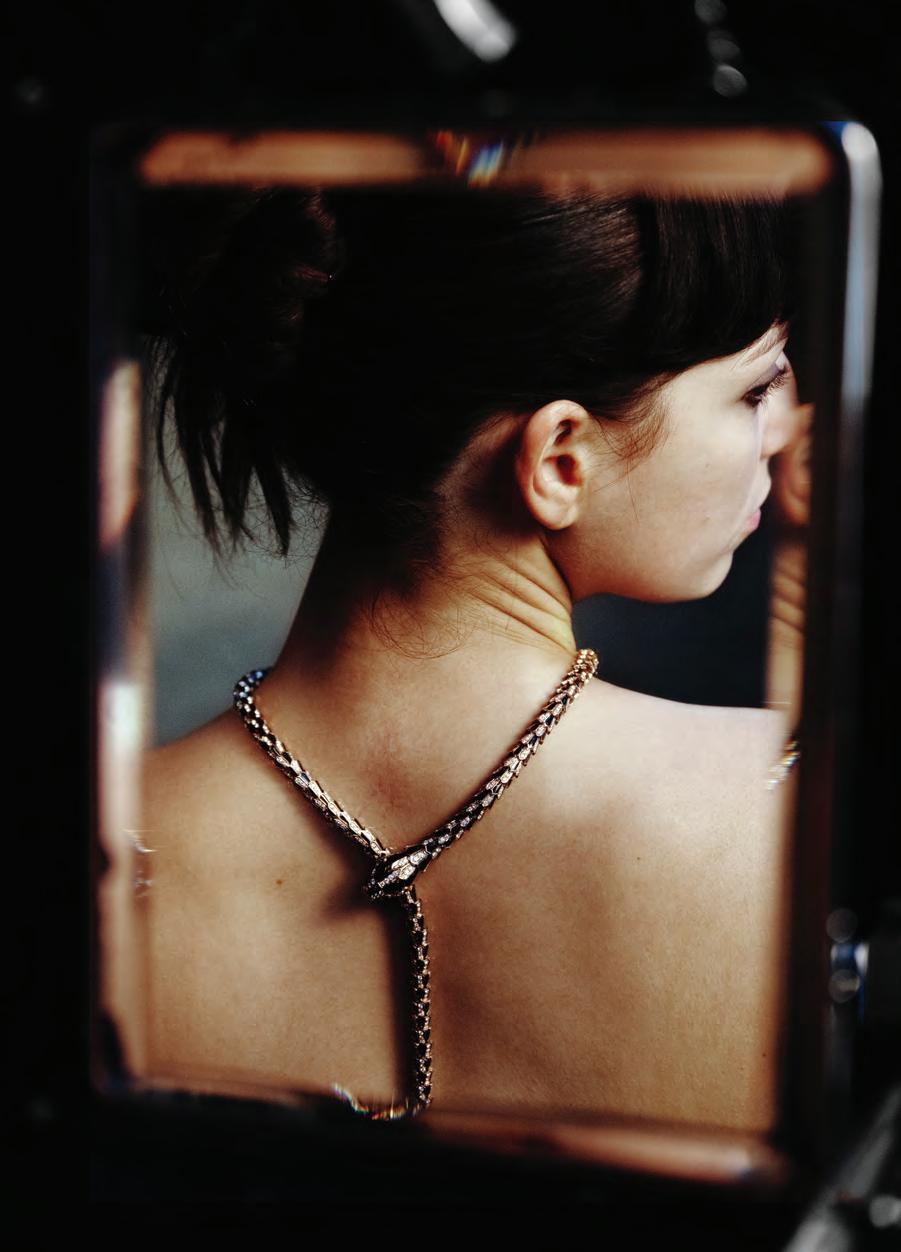


“ALL OF THE WOMEN I’VE PLAYED SO FAR ARE DESPERATELY SEEKING CONTROL.”
by
In a culture quick to dole out attention, true fame—that prized mixture of mystique and staying power—feels more elusive than ever. The film industry, rocked by strikes and streaming platforms, has grown ever more gun-shy, retreating from original material in favor of more bankable fare. For Hollywood hopefuls, star-making moments are harder than ever to come by.
Yet for those tireless (perhaps delusional) enough to persevere, there’s still magic to be found in the pursuit. On a winter day in New York, CULTURED shot seven of the industry’s most promising names on the eve of career-making projects, from indie features to blockbusters. Some of them cut their teeth on their hometown’s local theater stages, others learned their craft at the knee of Hollywood greats. All of them maintain a fierce dedication to what cinema can be—a dream that, in the blink of an eye, can become reality.


CLARA MCGREGOR
After landing a number of film roles—both solo and alongside her father, Ewan—Clara McGregor has also set her sights on the other side of the camera. Deux Entertainment, the production company she co-founded, is currently developing a number of projects focused on the stories of women.
“I try to gravitate towards something new each time. I want to work in every genre and challenge myself with the roles I play. I’m excited to dive into horror this spring with director Xavier Palud on his next film, Noon, and to lean into comedic roles in the future.”

ANDREW BURNAP
“Sir Ian McKellen came to a play I was in at the Young Vic in London. I grew up watching everything he ever did, admiring him, learning from him. I walked out after the show and there he was. He took my hand and whispered, ‘You cannot let anyone else play this part.’ I was overcome. We spoke for a while and saw each other a few more times after that. I wrote it down in my journal that night and return to it in moments of need.”
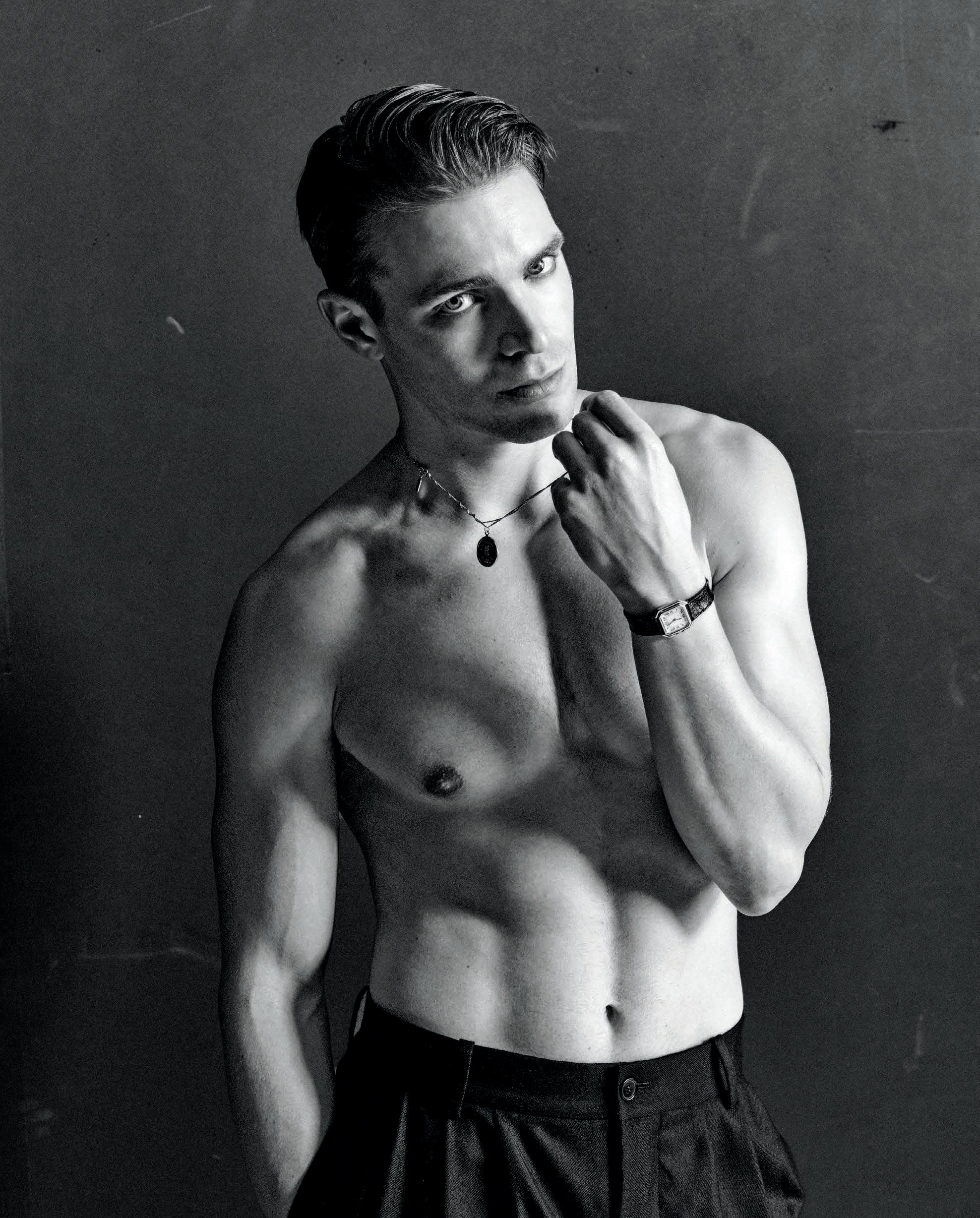




breaking through with an icy performance in
“My second-ever job was Olive Kitteridge opposite Frances McDormand. My character struggled with schizophrenia and suicidal ideation—serious emotional territory. But when I showed up to rehearsal, I was so overwhelmed at meeting one of my favorite actors that I couldn’t stop smiling. Beaming! Nerding out! It was so inappropriate. I was experiencing the insane realization that—not to be too corny—my dreams were coming true in real-time.”

In her breakout role as the magnetic lead in Netflix’s Ginny & Georgia, Antonia Gentry achieved an elusive brew of teen angst and biting wit. With her first feature-length comedy, Prom Dates, under her belt, the Atlanta-born actor is preparing for the next season of the series that made her name.
“I’m drawn to deeply flawed characters who behave in ways not always aligned with the morals of the audience. All of those dark human
qualities—selfishness, jealousy, anger, manipulation—compel me to root for a character.”

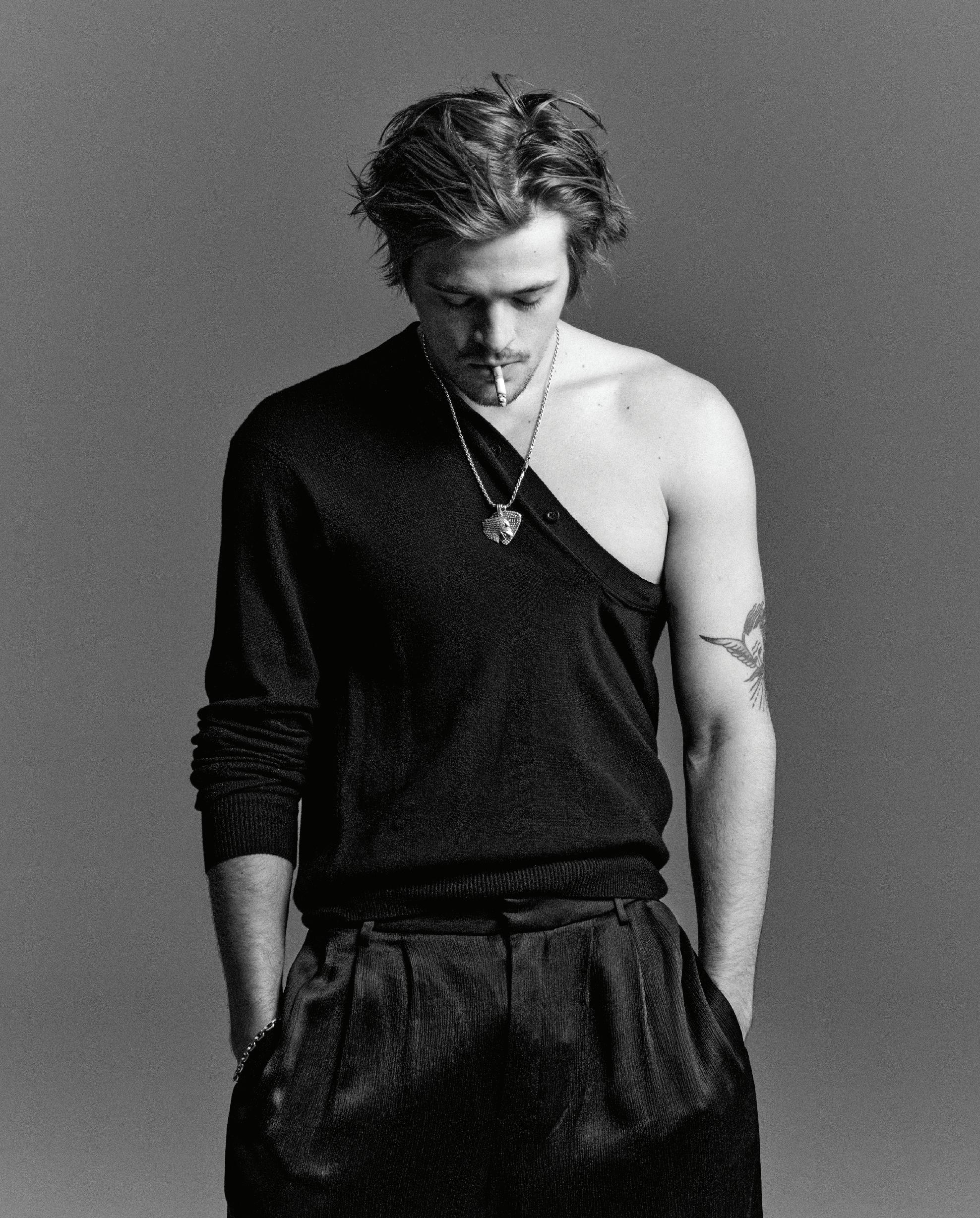

HENRY EIKENBERRY
“I’m not sure I have enough experience yet to notice a pattern in [the characters I play]. However, no matter their circumstances, I like to think they all have some secret that is burning through them from the inside, never letting them feel totally at ease.”

The Tony-nominated, Grammy-winning actor made her name onstage before stepping into weighty roles in films as varied as The Wolf of Wall Street and Palm Springs. A recent appearance opposite Colin Farrell in HBO’s The Penguin earned the New Jersey native a host of awards nominations. This year, she’ll reprise a past role in the upcoming season of Black Mirror.
“I saw Kill Bill Vol. 1 when I was 18 and it blew my mind. I couldn’t take my eyes off of Uma Thurman. She galvanized me, she broke my heart. I desperately wanted to be her. I was feverish with the need to be inside of a film like that. Shortly after, I saw her infamous yellow sneakers in a sale bin somewhere. They were a size too small but I wore them for months, even though they hurt. I felt like I was part of her team, like I could look down at them and tap into her courage.”
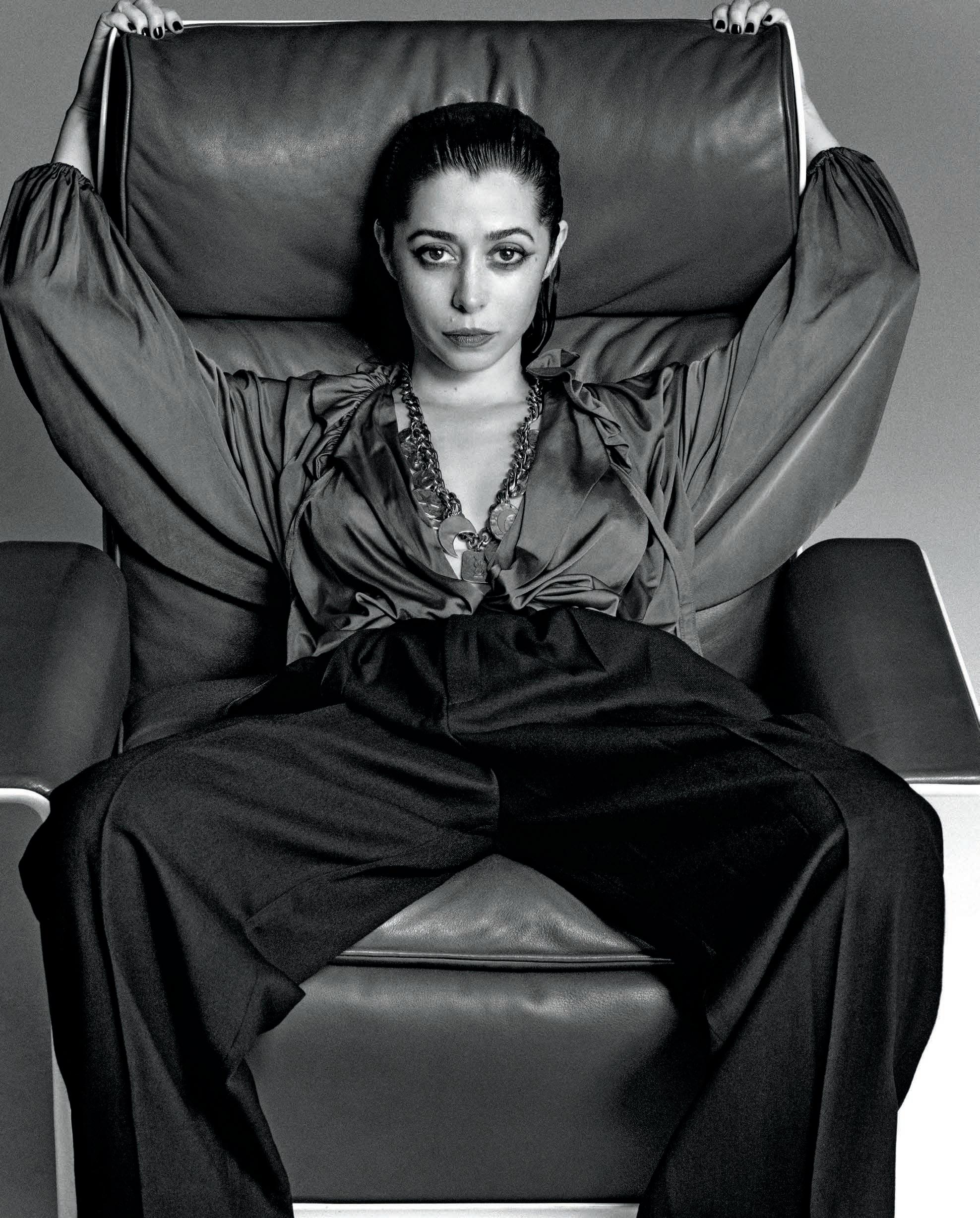


“Rejection is a tough one for me. I’m a very confident person; I maneuver through my life as if I can do anything in the world. But every now and then I get completely rocked by a ‘no’ and it takes a while to recover. When that happens, I’ll go to the movies. No matter what I see, I always leave full of inspiration to keep pushing forward.”

BY SOPHIE LEE PHOTOGRAPHY BY ANTON GOTTLOB
Luca Guadagnino’s accomplishments are well documented. In recent years, his unmistakeable lens has conjured lush cinematic worlds and jaw-droppingly immersive design projects alike; he never misses a chance to collaborate with the artists, designers, and curators who captivate his interest. Perhaps this is why, instead of sitting down for this interview himself, Guadagnino used his CULTURED cover feature as a chance to pick the brain of an artist he’s long admired—German photographer Thomas Ruff.
Whether you’ve seen a Luca Guadagnino film or not, you’ve most likely experienced their aesthetic collateral. The prolific Italian director has permeated the zeitgeist with a slew of features mining feverish, tangled, and often queer desire. Last year alone, he released Challengers, which chronicles a love triangle between tennis stars, and Queer, an adaptation of William S. Burroughs’s 1985 novella, which follows an American expat as he falls for a much younger man in 1950s Mexico City. Now, he’s at work on six—yes, six—new projects, including a highly anticipated adaptation of Bret Easton Ellis’s 1991 serial-killer novel American Psycho
Those who have read the book or seen Mary Harron’s early-aughts interpretation starring Christian Bale will recognize the obvious allure for Guadagnino. His films pair lush visuals with emotionally turbulent characters struggling to keep up a once-reliable facade. Style is what the director is chasing, followed by sex. Both exemplify the tension between how we want to be seen and what we want to feel. In Queer, his most unorthodox film yet, the lens tracks Daniel Craig’s hand as he traces it down the body of his lover, played by Drew Starkey. Later, through clever editing, Craig is able to get even closer, moving his hands literally under his partner’s skin as the two men writhe and caress each other’s ribcages for several uninterrupted minutes.
With projects like these, Bones and All, and Call Me by Your Name, Guadagnino has managed to maintain his position as a daring festival darling even after becoming a boxoffice stalwart. These days, his look and feel onscreen is as easy to conjure as Nolan’s or Gerwig’s—a point of view that lingers long after the credits stop rolling.
Guadagnino’s interest in sumptuous texture and color is equally as evident at his home in Alessandria, Italy, as it is on set. Somewhat covertly, the filmmaker has been leading an eponymous design studio since 2017, imbuing Italian apartments and hotels, like the 16thcentury Palazzo Talia in Rome, with his characteristic charm (and earning an AD100 nod from Architectural Digest in 2022). He also served as artistic director of the 2024 edition of Italian design biennial Homo Faber. One could easily imagine his characters lounging around the high-ceilinged rooms of his own abode,nestled in a scenic province in the Piemont region.
Though his previous residence was lined with 18th-century Japanese painted panels and John Gould prints, Guadagnino’s eye has turned to his contemporaries; among his art holdings is a work by experimental German photographer Thomas Ruff—a staple in the collections of the Art Institute of Chicago, the Metropolitan Museum of Art, and the Solomon R. Guggenheim Museum, amongst others. Ruff made his name in the 1980s for blown-up, full-frontal, and sometimes digitally manipulated portraits, going on to explore everything from military technology to online porn to experiences with mescaline in his work. Despite their formidable scale, his images are
often unnerving and intimate, much like Guadagnino’s own art.
“I’m constantly hypnotized by [your] portraits,” the filmmaker told Ruff when the two met for Guadagnino’s Art & Film issue cover conversation. Thus far a private collector, here Guadagnino opens up about his love for art in conversation with a favorite creator, taking us one step further into his immaculately curated universe.
LUCA GUADAGNINO: I have utterly admired your work since since I saw [it] many years ago. I want to understand how you see your work as being political?
THOMAS RUFF: The answer is pretty easy, because every artist is a human being and every human being has to be busy with politics. So, I would say all the art is political. It’s a strange world we live in, so I’m reacting to this strange situation and I pick issues that keep me busy.
GUADAGNINO: Yes, particularly in some of the more recent series you created, like the one that plays with the concept of propaganda [“Tableaux chinois,” 2019–present, and “Tableaux russes,” 2021–present]. I also somehow want to put in the same category the beautiful work about pornography that you made [“nudes,” 1999–present]. Are you trying to educate the viewer or to trick them?
RUFF: I always try to educate people. I guess propaganda is so fascinating because it’s a big lie, and lies right now are pretty obvious in politics, and they’ve been obvious in politics since… Let’s go back 100 years. Maybe I grew up in a time, let’s say the ’60s, ’70s, where people could believe in the media, but there’s always been a discrepancy between the official image and the real image. And I also want to deconstruct, in a way, these kinds of official images, these official lies.
GUADAGNINO: Some of the imagery—for instance the use of color in these pictures— gathers an element of the sublime. That is a very beautiful double step in your work between something that you need to think about very closely and with a very strong sense of duty as a viewer, and at the same time, the sublime that your images encompass. The concept of the sublime, to me, participates a lot in the canon of great German artists that I’ve been growing up with and learning about.
RUFF: What I want to do is really correct, intellectually interesting work. At the same time, it has to be very attractive; otherwise, the viewer would not look at it. The sublimity is very decent, so that the viewer doesn’t get it, but is attracted by it.
GUADAGNINO: Is it dangerous for the viewer?
RUFF: No, if he looks precisely and if he uses his brain, he will get a kind of enlightenment moment.
GUADAGNINO: Going back to the series of
portraits [“Porträts (Portraits),” 1981–91/ 1998–2001], I remember I read a beautiful answer you gave about the moment when this concept started for you and how you wanted to create somehow a portraiture that was a political reply to the idea of being constantly controlled, particularly in your generation. Looking at these works now, [there] is a sort of dimension between me, the viewer, and the person that I’m looking at, which is so big compared to the right proportion. It somehow is asking me to question who I am as a person. Because I’m looking at another person on a scale that is not natural.
RUFF: I’d been studying at the art academy in Düsseldorf [Kunstakademie Düsseldorf ]. I was just fed up with all the portrait photography that I knew so far. I really wanted to bring back the portrait to point zero, to eliminate all the conventions that are connected with a portrait and to just show the human face—nothing more. The title was just Porträt, and in the year 1988 or something like that, I even was hiding the name. The name [of subjects included in titles] was given by the curators because people can’t stand it if they have no information about a person they are looking at. Some visitors standing in front of my portraits would become very aggressive. They would ask, “How old is he or she? What is he doing?”
GUADAGNINO: You just said before that you understood the limits of photography. What are they for you?
RUFF: Photography should not be unsharp, except if it’s the unsharpness of a movement. Photographs should be as precise as possible. At that time, I didn’t want to see any grain; I didn’t want to see the structure of the film or the paper. I want to have the pure photograph. Now, we are talking about the limits. Probably, the portraits were so successful because they were totally different to paintings, but they had the size of painting, and people were really shocked when they saw them for the first time. They had a kind of precision that you cannot paint.
GUADAGNINO: Because I’m a filmmaker, my last question for you is, what is your relationship with cinema?
RUFF: Pretty often, when I go into the cinema, I’m disappointed. Then I say, Oh, this was a waste of time. This was such a bad film. I would say 90 percent of film is just bullshit. It’s just entertainment. It has nothing to do with the real world or the issues that I’m busy with. But, of course, I’m always really happy when I go to the cinema and see a good film.
GUADAGNINO: I think it’s a rarefied experience, one of being met by a serious work of art in any medium, to be honest. I agree with you that cinema, unfortunately, has deprived itself of its own strength for a long time now. But we always have hope, I would say.

“I THINK IT’S A RAREFIED EXPERIENCE, ONE OF BEING MET BY A SERIOUS WORK OF ART IN ANY MEDIUM, TO BE HONEST … BUT WE ALWAYS HAVE HOPE.”
By Elena Saavedra Buckley
Photography by Quil Lemons at Le Rock at Rockefeller Center
Styled by Rebecca Ramsey
HIS
Around 2000, just after Sean Baker got clean from opioids, he had to rebuild his life from scratch. He had been tossed from Greg the Bunny, the TV show he helped create that had been picked up by Fox. He lost most of his contacts and had stuck around New York while others from his early film escapades went west. But he thought he could survive one last attempt at becoming a filmmaker. “I did everything I could not to get a nine-to-five,” Baker tells me. “I wanted to stay connected to the industry, even if I was on the farthest fringes.” He edited corporate videos; he duplicated VHS tapes for actors’ reels. And—whether you’re a palm reader or a lawyer or a filmmaker—there is always work in weddings. “I worked for the high-end wedding video company,” he recalls. “Martha Stewart–type stuff.”
Most of the weddings he filmed were in ethnic enclaves of New York. One took place in Brighton Beach, where the Moscow satellite elitism and shitty weather stuck with him. It was an early seed for Anora, his latest movie, which was nominated for a whopping six Academy Awards including Best Picture, Best Director, and Best Actress (along with an Independent Spirit Awards Best Director nomination for Baker himself). It also took home this year’s Palme d’Or at Cannes—the first time an American filmmaker has won the award since Terrence Malick in 2011. The film is about an exotic dancer and escort—the titular Anora, better known as Ani—who grew up in Brighton. After meeting Vanya, the son of a Russian oligarch, she becomes his girlfriend for the week in exchange for $15,000. She then marries him in Las Vegas and is clumsily taken hostage by his parents’ goons while they try to find Vanya, who has fled, so they can annul the union before their bosses arrive on American soil.
You could call Baker’s work “neo-neo realism,” the term coined by A.O. Scott in 2009 to describe Great Recession–era films that focused on outsider characters, first-time actors, and bare-bones depictions of socioeconomic struggles. But he’s been at it for longer than that. (Longer, in fact, than one might expect—he looks good for 53, like he could do a kickflip if
HIS STATUS AS THE
you asked.) Nevertheless, his attempts at that realism, no matter how vérité his shots or how shoestring his budgets, are forever complicated by the simple fact that he is the ultimate insider-outsider: at once fluent in the hustling, addiction-adjacent lives he depicts, and something of a Hollywood voyeur. When we spoke, Baker was in his New York apartment, jet-lagged from events in London and rubbing his eyes as his dog crawled into his lap. He was bracing for the film’s New York premiere, which he accented with scare quotes—“the ‘premiere’”— as if the pomp was a little embarrassing. Anora’s box office numbers prove that Baker has reached a kind of escape velocity. It doesn’t hurt that Zoomer appetites for chaotic and brash New York fare have been whetted by the Safdie brothers.
Anora is the rare film that features cell phones and vape pens—the key accoutrements of its 20-something characters’ lives—successfully (which is to say, constantly and without much interest). But Baker’s eye developed back in the 1970s, when he would drive into the city from New Jersey with his dad, a time when porn was still shown in theaters. “We would come out of the Lincoln Tunnel and head down 42nd Street. It was a ‘Welcome to the Jungle’ moment every single time,” he told me, with ads for Marilyn Chambers and Deep Throat lighting the way. He has visited various corners of the sex work industry in most of his films since. Tangerine focuses on Black trans sex workers in LA; Red Rocket is about a washed-up male porn star on the Gulf Coast. Baker consistentently, if dutifully, speaks out for decriminalization, but he’s allergic to preachiness and politics. “A lot of our media speaks to the left. I happen to be left-wing, but I think it’s important for everyone to be talking,” he says. “I’m trying to make a universal story that has fleshed-out, three-dimensional, human characters who allow audiences to have empathy. They can apply their own thoughts and ideologies.”
Baker calls Anora “high-concept,” since its plot can be summarized in a sentence, but it’s also his most planned movie. Its budget was reportedly $6 million—three times the estimate of The Florida Project—and while his other films
achieve their heady tenor through the roughand-ready chaos of first-time actors, Anora’s central performers are all pros (he was even willing to wade through Russian visa complications to bring a couple of them over). “With me taking more money this time, the risk is higher. I didn’t want to fool around, basically,” Baker muses. “In the future, I’m sure I’ll always have a portion of the cast that’s brand-new, offthe-street faces, but being able to work with professionals changed my game.” Fourth-wall breaking in Anora is mostly self-referential: This is the second movie in which the actor Karren Karagulian, a frequent Baker collaborator, drives a car while someone pukes in the back seat. (Other tears in the fabric, like using t.A.T.u.’s “All the Things She Said”—also the Red Scare podcast theme song—in one climactic sequence, made people audibly groan in the theater where I watched it.)
When you build a career on the hustle mindset, the eternal question is, What happens when you become successful? Baker hasn’t “made it” in any consequential sense, since doing so in American independent cinema is essentially impossible—although he’ll probably never have to edit another wedding video. But whether higher budgets and buzz will bring him more scrutiny, or make his art suffer, is another matter. Most important to Baker is whether he’ll be able to dip back into the jungle for inspiration again. When I asked him about avoiding creative atrophy amid growing resources and comfort, he answered with the frankness of someone who has found himself, at times, in dire straits. “You have to get embedded a bit. Sometimes it gets to a risky place, whether that’s drugs or something else,” he said. “If I pick up anything hard in the opioid world again, it’s suicide. So it is dangerous. But I can’t be writing my worlds sitting in West Hollywood.”
After seeing Anora in downtown Brooklyn. I cued up “Greatest Day,” the smarmy pop anthem by Take That, which soundtracks the fragile joy that blossoms in the movie right before everything goes to shit. I got on the Q train and headed in the direction of Brighton Beach. But I got off before I could get there.

“I DIDN’T WANT TO FOOL AROUND, BASICALLY.”
—SEAN BAKER


“IF I PICK UP ANYTHING HARD IN THE OPIOID WORLD AGAIN, IT’S SUICIDE. SO IT IS DANGEROUS. BUT I CAN’T BE WRITING MY WORLDS SITTING IN WEST HOLLYWOOD.”
—SEAN BAKER

WHEN YOU BUILD A CAREER ON THE HUSTLE MINDSET, THE ETERNAL QUESTION IS, WHAT HAPPENS WHEN YOU BECOME SUCCESSFUL?



IN HER ZEITGEISTY FOLLOW-UP TO 2022’S BODIES BODIES BODIES, DIRECTOR HALINA REIJN SKEWERS THE SEXUAL TOPOGRAPHY OF MIDDLE AGE.
BY DURGA CHEW-BOSE

For years, Halina Reijn was the muse. “Now, I’m sitting in the chair where I saw all these men sit all of my life,” says the acclaimed Dutch actor turned director, whose second English-language film, last winter’s Babygirl, received a feverish response to its unflinching investigation of power and desire. Romy, a perfection-seeking CEO embodied by Nicole Kidman, finds herself adrift at middle age—struggling to navigate the gulf between the fairy-tale family life she shares with her husband (Antonio Banderas) and a growing sense of shame at her own dissatisfaction. She falls into a smoldering affair with Samuel, an intern with an easy grin and a deep reserve of confidence, played masterfully by Harris Dickinson. The fallout is an explosive yet redemptive unraveling of Romy’s carefully manicured identity.
Right now, Reijn is living her own fairy tale— promoting the rare film that is both a critical darling and a hit with general audiences (she just received a Best Director nom from the Independent Spirit Awards), and attending a whirlwind of dinners, parties, and Q&As with Kidman, Hollywood’s most ubiquitous star, on her arm. The demands that come with striking cinematic gold can be intense, but Reijn—who was “raised by hippies completely off the grid”—is fairly unflappable. “It’s all great, of course, but it’s tiring,” she says of the awards hubbub. “I’m always afraid to do something wrong or forget a dress in a certain country. You’re constantly borrowing these beautiful clothes that are not yours, and you have to give them back.”
Reijn’s candor gives me a sense of what she might have been like on set, and why her collaborators often note the director’s uncanny ability to build the trust required to explore thorny topics. “It’s very important to show [my actors] that I’m not above them. I’m not some dictator telling them to undress, crawl around, cry,” she explains. “I’ve experienced that myself. Even a scene that looks very simple from the outside can be incredibly vulnerable and scary when everybody is standing around you wearing a North Face jacket and eating pizza.”
The filmmaker approaches our conversation with a similar level of sincerity. The relentlessly inquisitive and fast-talking 49-year-old listens attentively and speaks passionately, but she does not orate. She wants a dialogue, I’d venture, because she is not interested in making art that serves as a final word—on the representation of beauty and aging in media, on the contradictory expectations of men and women as directors, on the invisible trip-wires of motherhood, partnership, and pleasure, any of it. “My primary urgency [creatively] is my confusion,” Reijn says, looking directly at me. “I’m so confused about being a woman, I really am. I feel so many contradictions inside of me.”
That sense of disorientation was only amplified by a successful decades-long career as a stage and screen actor in the Netherlands. Reijn worked with directors like Paul Verhoeven and performed countless plays by Shakespeare, O’Neill, and Ibsen, which she also credits as her writing education. “These roles became part
of my DNA, and they were all written by men,” she says. “The female characters are searching for liberation, but they end up either killing themselves or going crazy. For better or for worse, everything I do is informed by those women. They hold me like ghosts.” The role she created for Kidman was, in part, an exorcism of these characters, but also a challenge: “What would I want to play? What would my dream role be, where I could show my full range?”
“I’M SO CONFUSED ABOUT BEING A WOMAN, I REALLY AM. I FEEL SO MANY CONTRADICTIONS INSIDE OF ME.”
Contradiction in its many forms—between expectation and reality, desire and expression, and among the suppressed parts of ourselves —is at the heart of Babygirl. In one scene, a large dog appears, charging at Romy in the New York streets before being tamed (by Samuel). In another, Romy meets Samuel for a hotel room rendezvous that leaves both characters’ vulnerabilities exposed. Briefly, reality gives way to a fable about suppressed desire, dominance, and the beasts buried deep. Embodying the hound, Romy releases her power, overtaken by a full-body rush—forgetting the children, the boardrooms, the Botox—and becoming the incarnation of her long-dormant arousal, finally awakened amid the trappings of a seedy hotel room. You can almost smell the carpet and feel the walls closing in as Romy disentangles shame from pleasure.
This primal encounter is one of many glittering exchanges—across a bar over a glass of milk, or in a soundproofed meeting room—that fuel the film’s sensual undulations. Each is set against an eerie sonic landscape of breathing, grunting, and panting, an aide-mémoire of the body’s needs and natural rhythms. I ask Reijn about her relationship to rhythm: “It’s everything. When I’m writing, I’m pacing it all like I hear it—that’s my theater background. I love big scenes with just a table and two people talking, like it’s a chess game. It’s all music.” In fact, it was music (the song “Father Figure”—a satisfying George Michael needle drop, to be specific) that was the genesis of Babygirl. “I had that [song] as an idea before anything. I knew I wanted to make a movie about a powerful woman and a younger man dominating her. With ‘Father Figure,’ I could spin that on its head.”
I ask Reijn how she knows when an idea has become a movie. “Everyone is asking me, ‘What’s next?’” she concludes. “I don’t know. I have all these embryos. Some I don’t even like—they feel like demons. Some I love, and they’re angels.”

Benjamin Trigano’s Los Angeles home, a 1933 construction teetering over Lake Hollywood, is defined by its eclecticism. The gallerist’s latest project—a new hybrid residential and gathering space in Milan—is no different.
By JANELLE ZARA


In the hills above Los Angeles, Benjamin Trigano has a house to get lost in. Built in 1933 along a steep Lake Hollywood slope, it features a total of seven split-levels that descend through a maze of staircases and surprise side rooms, one of which maintains its original orange-hued wood panels —a true rarity in LA these days. The views of the city are exquisite, and the ample backyard is perfect for parties. (Trigano, who is the founder of the West Hollywood gallery M+B, has been known to stage an occasional art-world rager there.) He moved in 10 years ago, and he’s barely changed a thing. “When you make everything perfect, it loses its edge and its life—it feels like a store,” he says as he ushers me down one of its many staircases. “I think a house needs to be lived in.”
The main event, it becomes clear as we wind through the house, is the collection—an eclectic mix of art and design, high and low, covering the walls and shelves. The den features paintings by Brandon D. Landers and Harold Ancart, multiple artist-designed chess sets, wooden busts, and an enormous brown leather sofa the exact color of the walls’ wooden panels. The low gold light comes from a pair of electric candles flanking a bronze ram’s head mounted to the wall. Surprisingly, this was not an original feature of the house. “I actually found them at the flea market,” he says. “This is French chinoiserie.”
It’s all very chaotic, elegantly done, and especial-
ly warm. Hospitality, after all, is in Trigano’s blood. His late grandfather was an early developer of Club Med, and Trigano founded the Philippe Starck–designed Mama Shelter hotels with his father and brother. (Right now, they have more Starck-designed properties in the works in France.) Raised between New York and Paris, he came to Los Angeles roughly 20 years ago to open a hotel in Palm Springs that ultimately didn’t go as planned. “We got into a disagreement,” Trigano says of his former business partners, but he decided to stay in LA anyway.
The gallerist initially founded M+B as a photography space in 2005, when LA was still a “photo town.” In the years since, he’s shifted his focus to contemporary art, and more recently opened two more spaces that merge the art business with a sense of hospitality. In Milan, Casa MB exhibits art inside a flat with colorful limewashed rooms full of elegant millwork. In São Paulo, Trigano has Domo Damo—a gallery and artist residency situated in the concrete oasis of a Paulo Mendes da Rocha–designed home. His goal for both has been to create “spaces that people want to spend time in”—he finds galleries, in terms of their architecture and programming alike, increasingly difficult to tell apart these days. “I don’t believe in these white cube spaces anymore. They feel a bit dated. If you want to bring a new generation of people, you’re not going to manage it by doing this.”
Trigano takes after his mother, an avid collector of Asian and African art. “Her house is like mine on steroids,” he says, although neither of them would identify as a collector for the sense of intentionality the term implies. “I’m not very disciplined,” he adds. “When I like something, I try to collect as much of it as I can afford or find.” This includes a series of works by incarcerated individuals, drawn on envelopes or painted on pillowcases, which he finds on eBay and hangs salon-style in immaculate frames. Chinoiserie is another major theme, with ornately sculpted dragons curling around mirrors in various rooms.
The recurring theme throughout this varied collection is his earnest personal affinity. “I like things you feel in your gut,” he says. “In the art business, it’s the things that challenge you or make you uncomfortable that are exciting.” He compares less impactful art to pop music: “You listen to it 20 times, then you’re bored. That’s why I love Prince,” he adds, nodding to what he describes as his most prized possession: pages of handwritten lyrics framed and mounted on the foyer wall opposite a Raymond Pettibon drawing. Portraits of the musician reappear throughout the house—black-and-white photographs, a painting by artist Nathaniel Mary Quinn, and another painting by Trigano’s son. “His songs are so intricate, more complex the more you listen to them. Great pieces of music are hard to get into, but the more you listen, the more you like.”

“I’m not very disciplined. When I like something, I try to collect as much of it as I can afford or find.”
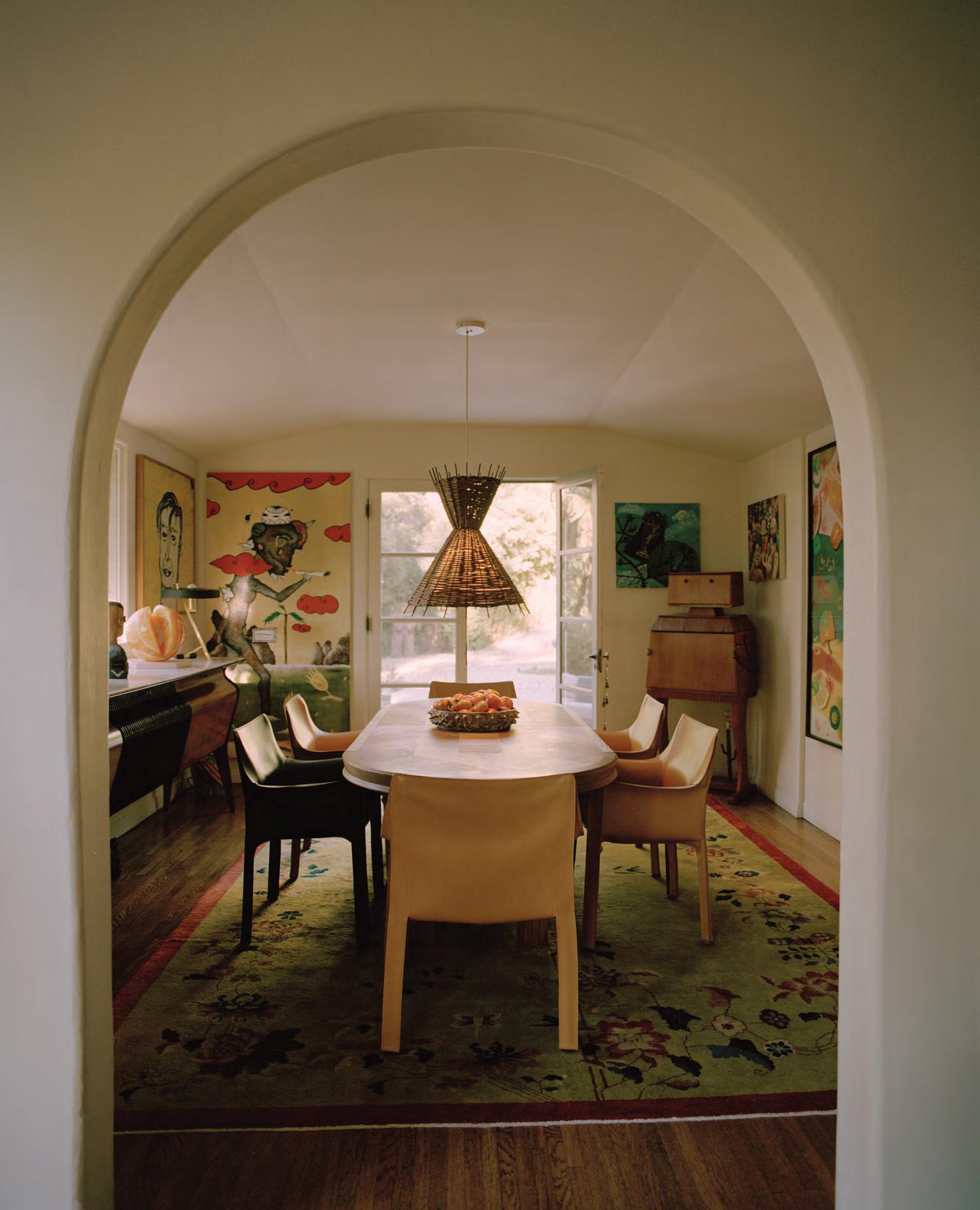

“I like things you feel in your gut. In the art business, it’s the things that challenge you or make you uncomfortable that are exciting.”

“When you make everything perfect, it loses its edge and its life—it feels like a store. I think a house needs to be lived in.”

“I don’t believe in these white cube spaces anymore. They feel a bit dated. If you want to bring a new generation of people, you’re not going to manage it by doing this.”
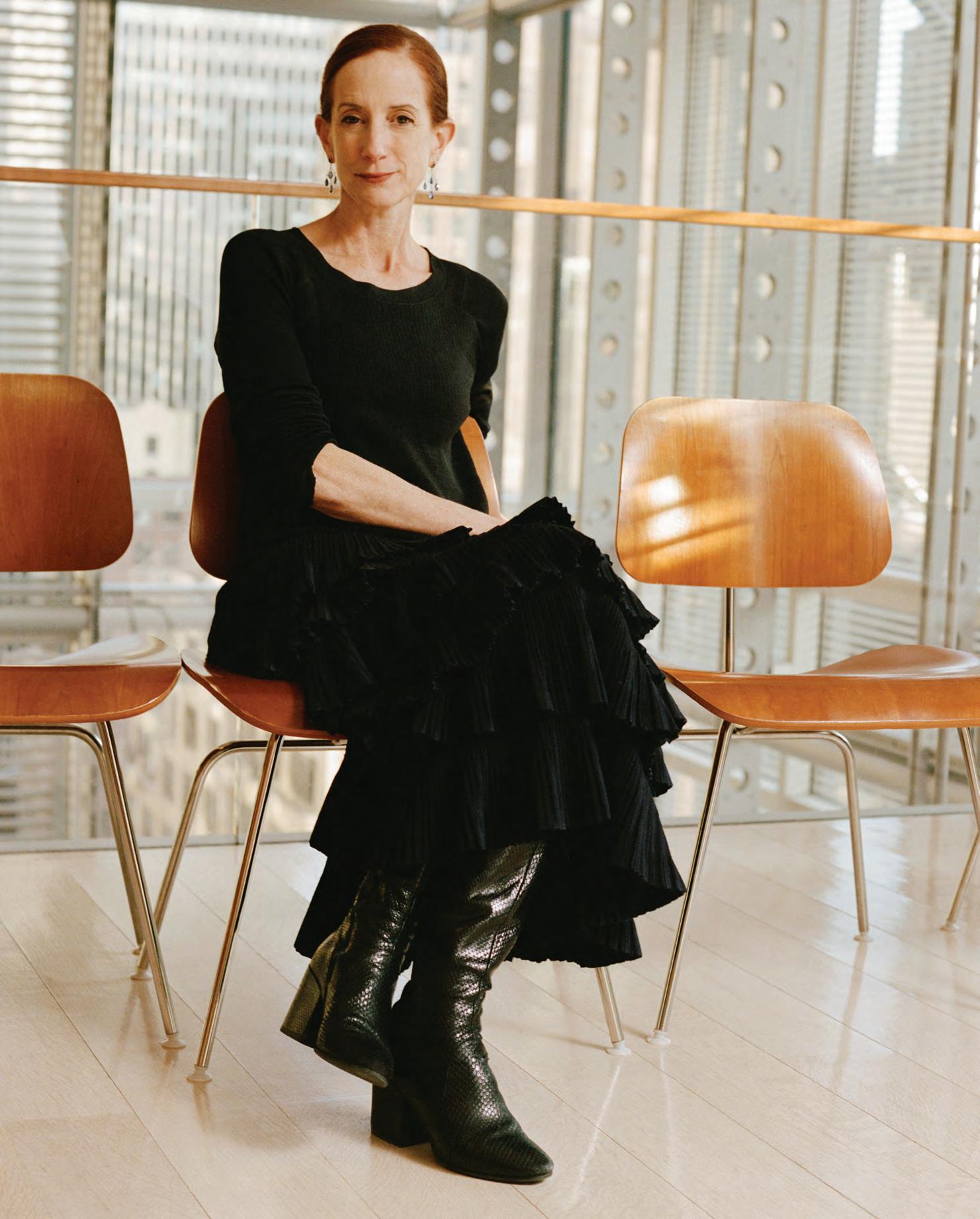
By Julia Halperin and Mara Veitch
Industry-wide changes in media and fashion have had an amplified influence on the role of the fashion critic. How, amid a cacophony of online voices and an increasingly consolidated fashion landscape, does one cut through the noise? CULTURED hosts three of the field’s leading voices—Tim Blanks, Vanessa Friedman, and
Tashjian—to compare notes.
The businesses of fashion and media are uneasy bedfellows. Yet the two industries have never been more closely intertwined than they are today— and the fate of fashion criticism hangs uneasily in the balance. Sea changes in media make for a daunting vista: Fast fashion’s behemoth environmental impact, a dearth of representation (gender or otherwise) among high-profile creative directors, and the proliferation of self-styled tastemakers have monopolized online discourse. Add to the mix a staggering concentration of power: Many of the oldest and best-respected legacy labels are nestled under the wing of titanic conglomerates, and many a publication is reliant on the partnership of those same companies to remain afloat. In 2025, neither industry can be said to boast a clean bill of health.
Where, in this thorny new landscape, does the role of the fashion critic lie?
To answer this question, CULTURED convened three of today’s leading voices for a candid roundtable discussion. Tim Blanks, a front-row fixture who has been covering the fashion world since the late 1980s as a TV host
and writer, is editor-at-large of the industry bible Business of Fashion Vanessa Friedman became the first-ever fashion editor of The Financial Times in 2003 and, for more than a decade, has served as the formidable chief fashion critic of The New York Times. Rachel Tashjian made her name as GQ ’s first fashion critic and founder of the cult shopping newsletter Opulent Tips before landing the coveted position of fashion critic for The Washington Post in 2023.
This trio reminds us that good fashion still exists, and that good a designer holds a mirror to surreal times—tectonic political shifts, evolving social mores, and quotidian delights in equal measure. Blanks, Friedman, and Tashjian have each earned reputations as canny ciphers of this undertaking, interrogating and forging connections between a disgraced billionaire’s courtroom wardrobe, a legacy brand’s earnings, and the most subtle semiotics of power. In the following pages, they suggest that the role of the critic might be surprisingly timeless after all—at least within established media organizations. Look, contextualize, translate. Repeat.
What drew you to fashion in general, and fashion criticism in particular?
Tim Blanks: I grew up in New Zealand. There was no fashion. Music was my passion. David Bowie would wear extraordinary clothes by Kansai Yamamoto, so I had a sense of what fashion could mean and do. I ended up in Canada editing a fashion magazine and covering shows—not critically, but descriptively. Then I went to Style.com and started reviewing shows.
Vanessa Friedman: I came to fashion mostly through journalism. During a freelance period in my life, I started getting assigned fashion stories and ultimately realized that fashion was an incredible prism for talking about almost anything a journalist or critic could want to discuss. Fashion is the ultimate Trojan horse. It allows you to explore questions of identity, politics, culture, and news.
Rachel Tashjian: It’s funny, I think we all have similar stories on different timelines. I was always interested in music and obsessed with Rolling Stone. I liked vintage clothes and what Janet Jackson and Britney Spears wore. I read a lot of fashion journalism, much of which was written by Vanessa and Tim, [but] I didn’t feel Vogue was for me. After college, everyone was starting fashion blogs, which was a way to get into writing. Early fashion blogs were often about fashion through the lens of film or art, which opened the world of clothes to me.
What’s the biggest difference between covering fashion now and when you started?
Friedman: The New York Times didn’t have an official fashion critic until 1994. The Financial Times didn’t have a dedicated fashion page until 2003. More people are interested in fashion now, and it’s part of pop culture in a way it wasn’t before. But I don’t think the actual work of fashion criticism has changed much.
Blanks: I agree. In Toronto during the ’80s, the dailies had fashion supplements, [but] fashion criticism didn’t have the cultural weight of art or music criticism. Rolling Stone or Melody Maker could inspire people to buy records or see movies. Critics like Clement Greenberg changed art by writing about it in newspapers. But in fashion, there weren’t critics who could shift public perception in the same way.
Friedman: The role of a fashion critic is different. It’s not about saying, “You must have this handbag.” It’s about helping people think about their relationship to clothing differently.
Tashjian: Fashion critics have a different relationship with their subjects. I focus on the reader, not the designer. But designers often respond directly to criticism, sometimes negatively. I’ve seen designers post about things Tim, Vanessa, or I have written. I don’t see that same dynamic in art or music criticism.
Blanks: Really?
Tashjian: Yeah. Dance or opera critics often
write about works whose creators are long gone.
Friedman: If you’re talking about [former Ballet Master] Peter Martins at New York City Ballet, I don’t think that’s that different from talking about Maria Grazia [Chiuri, creative director of womenswear] at Dior, right? They’re there to steer, reshape, and interpret an existing institution.
When you write a negative review, what impact do you want it to have?
Tashjian: I don’t really think of my reviews as negative or positive.
Blanks: Have you ever had anybody say to you, “Oh, I really thought about what you said, and I’ve addressed it in this new collection. I hope you can see that”?
Friedman: I had Marco Bizzarri, when he was CEO of Gucci, give an interview to Corriere della Sera. They asked him what he thought of critics, and he went on this rant about how irritating I was—how annoying my reviews are, how I couldn’t say something was good without pointing out the issues at the same time. And then he said, “But when I think about it, she’s usually right.”
He sent it to me. I said I was going to put it on my gravestone. But that’s pretty rare.
Tashjian: I called [Schiaparelli Creative Director] Daniel Roseberry “the meme weaver,” and for one or two seasons after that, he gave interviews saying, “I’m not going to be the meme weaver anymore.”
Friedman: Daniel quotes you back to you all the time. It’s kind of smart.
Blanks: They all do.
Tashjian: How could you not? I mean, I read all my comments and letters.
Friedman: I still don’t read all my hate mail.
Do you consider yourself someone who has power in the fashion industry?
Blanks: I think there was a golden age at Style.com [where Blanks was editor-at-large for 10 years] when fashion criticism possibly existed as an actual force for good—or as a force, anyway. But I don’t think that applies much anymore. Everybody’s a critic now.
When A.O. Scott left The New York Times, he was asked about the role of the critic. He said he never thought of himself as an expert or authority. He thought of himself as a companion. I’d like to think I’m conveying the experience I’m having to people who aren’t there. That’s always been my goal.
Friedman: The New York Times has power. The platform has power. That’s different from me having power.
Tashjian: There’s a funny thing happening now —a fashion fake-news problem. Friends of mine who work in related industries will say, “Oh, I saw this social media post that Jonathan Anderson is going to Dior. Isn’t that great news?”
As someone who works at a newspaper, I find it curious that there’s this conferred authority on accounts with just a couple hundred followers. There’s so much excitement to contribute to the creation of news, whether it’s true or not.
Blanks: Don’t you think fashion has a unique ability to make people want to be part of the dialogue? They hear, “Hedi Slimane is going to Gucci,” and suddenly they think they’re in the know. Fashion trades on this fundamental insecurity. It’s always been a very gossipy industry, and now more people know about it, so there are more people gossiping.
How do you balance covering fashion as an art form, as a business, and as something every human being puts on their body before leaving the house?
Friedman: You have to go into these jobs with an awareness that different stories are for different parts of the audience. There’s a core fashion audience who cares deeply about designer changes and runway happenings. Then there are people who don’t, but they care about what Melania Trump is wearing or what’s happening at the Golden Globes. And there are others who care about the latest knit bonnet on Instagram. You have to try to please as many people as possible and then deal with the whiplash, especially during times when you’re jumping from the inauguration to couture.
Blanks: Do you think there’s a thread between all these audiences? Something about fashion that creates a slightly more homogenous constituency?
Friedman: I think so. The essential approach is the same: How is the clothing being used as a tool to communicate?
Blanks: I’ve always come at it as a human interest thing. When I was doing the TV show [CBC’s Fashion File] years ago, I thought, What an underexploited trove of incredible people and stories. My reviews over the years have morphed into profiles. When we started Style.com, [Founding Editor] Jamie Pallot said nothing should be more than 200 words. Then Nicole [Phelps, the executive editor] and I started writing pieces up to 1,500 words, sometimes three or four in a night—not bad going.
Tashjian: Covering fashion makes you see the world differently and ask, “What’s the fashion story in this piece of news?”
Friedman: One difference now is the appetite for that kind of coverage. Twenty years ago, if I’d said to the Times, “The confirmation hearings are a fashion story,” they would’ve told me I was nuts.
Tashjian: The proliferation of fast fashion has

“Twenty years ago, if I’d said to the Times, ‘The confirmation hearings are a fashion story,’ they would’ve told me I was nuts.” —Vanessa Friedman
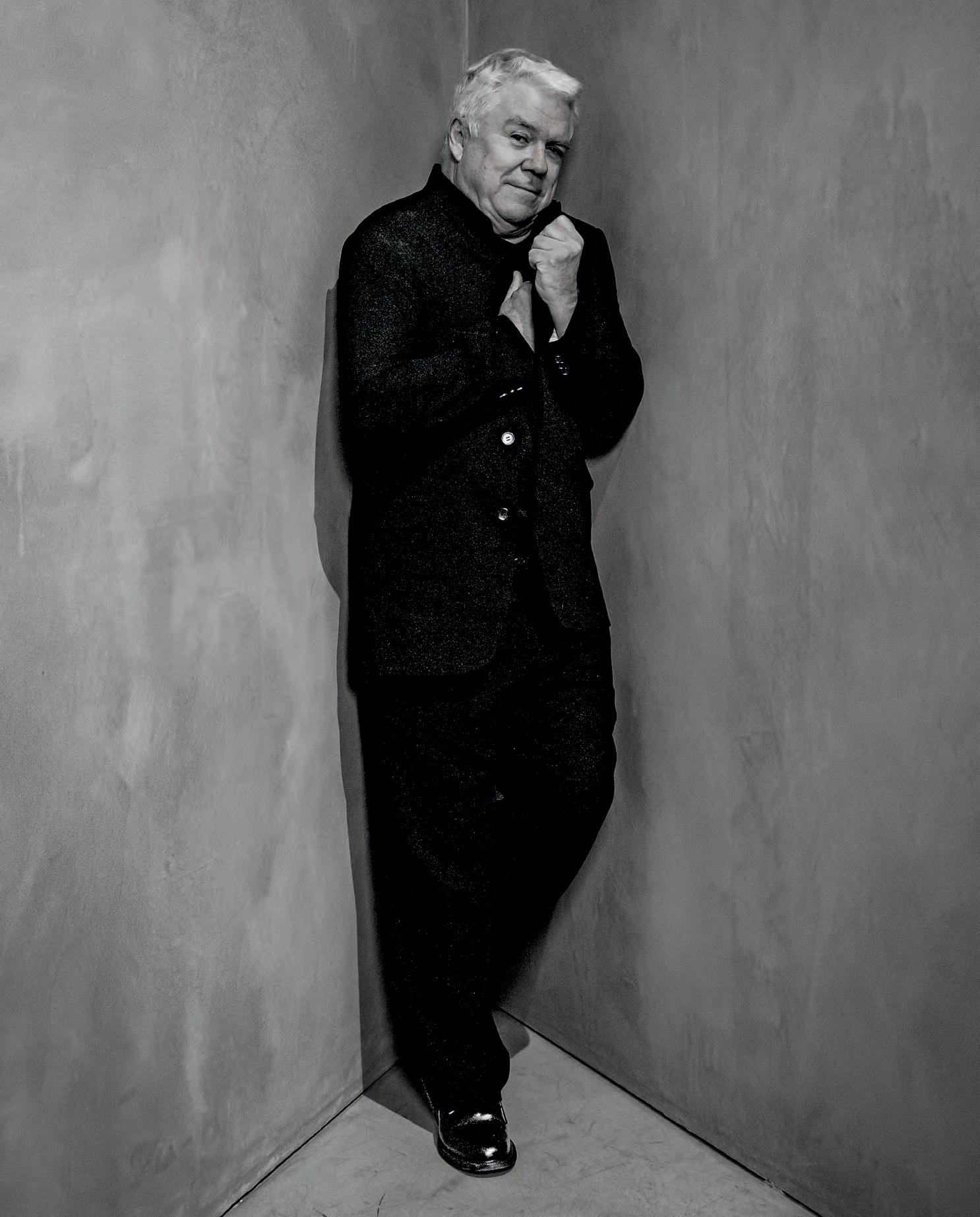
“Fashion trades on insecurity. It’s always been a very gossipy industry, and now more people know about it, so there are more people gossiping.”
—Tim Blanks
also made more people feel like they can participate. I was reading Vanessa’s piece about Pete Hegseth [Donald Trump’s newly confirmed U.S. secretary of defense] wearing an American flag pocket square during the confirmation hearings. Twenty years ago, if you wanted an American flag-lined jacket, you’d have to go to a specialized tailor. Now, brands like Fashion Nova or Shein allow people to dress like Charli XCX. That accesibility makes consumers, critics, and participants overlap—you can be all three at once.
Friedman: Big fashion brands have extended their influence to all levels of culture and economic status. Even if you’re not buying the Dior bag, you’re seeing it, talking about it, and forming an opinion. That didn’t happen as much a couple of decades ago.
Blanks: Fashion became part of the entertainment industry in the early ’90s—it’s show business now. That’s made it a great and often delusional communicator.
You can’t talk about how people interact with fashion without mentioning TikTok and Instagram. How do you view that digital content compared to what you do? Do you see it as criticism?
Blanks: I’m fascinated by how young people want to explore history and ask questions about old shows. The younger the audience, the more interested they seem to be. But [digital content] is a language I don’t speak fluently. I tried to create a TikTok dance once—it didn’t go well.
Tashjian: I talk very often with people who do Instagram criticism. The common theme often seems to be, “I started this because I really wanted more honest, brash commentary. And then I found the more that I did this, the more complicated it became. I couldn’t just say, ‘This is the worst collection ever.’” Good criticism is never simply saying something is good or bad. There’s a difference between commentary and criticism. Some social media commentators are doing a form of criticism. But most often, to me, it seems like commentary, which is still very valuable.
How would you describe the difference?
Blanks: And what would you rather read?
Tashjan: Well, I’m biased. I’d rather read criticism. To me, the difference is context, authority, and expertise. I find that the more I interview designers, the better my criticism becomes. Of all people, [fashion designer] Wayne Diamond, the kind of sleazy guy [who played a version of himself] in Uncut Gems, told me, “Being a writer is so great because it’s the only artistic medium where your work gets better as you get older.” I think it’s absolutely true.
You all have full-time jobs doing this, but that’s increasingly rare. How are the precarity of the media world and the rise of independent newsletters changing fashion criticism?
Friedman: I feel like it’s similar to when everyone said, “Blogs are coming; this will change everything forever,” and it didn’t actually change as much. Criticism as a form has existed for centuries, whether it’s fashion or not. I hope that will continue to be true. I just think it goes by many names, maybe.
Blanks: Do you ever hear your voice saying things you’ve said many times before and feel that your response has become slightly hidebound?
“Good criticism is never simply saying something is good or bad. There’s a difference between commentary and criticism.”
—Rachel Tashjian
Friedman: It’s when you start realizing you’re using the same phrases a lot. But I think that’s a problem with most journalists’ writing.
When was the last time you saw something that made you genuinely excited or gave you a jolt?
Blanks: I was just so excited by Alessandro [Michele]’s [debut] Valentino show. I loved the layers of it, the mystery of it.
Tashjian: I get it every time I go to fashion shows, honestly. Not to sound naive, but I’m 36 years old, and I can’t believe that in the media industry we live in, I was hired as a fashion critic at a newspaper. But the last time I felt that jolt was the Alaïa [Winter/Spring 2025] show at the Guggenheim. It was this incredible unwinding of bizarre silhouettes in a really catty room of people sitting on these sleazy chairs. It was fantastic.
Friedman: There’s always something that will make you think. But we see hundreds of shows, and some you forget as soon as you walk out. I thought the last Loewe women’s show was really, really good. I thought Willy Chavarria’s show was really good. That’s what keeps you going.
Blanks: Things do feel different now. I think gigantism really spoiled fashion in a number of ways.
Tashjian: But I also go back and reread Robin Givhan’s columns, my predecessor at the Post. I read a piece from over 20 years ago, a review of Milan Fashion Week, and the lede was, “What a disaster.” So, while there may have been more amazing shows before, I think there was also more boredom and waste than we might remember.
Friedman: That was when designers had time. They had time to have crazy ideas and experiment. They weren’t responsible for the same numbers or the sheer amount of employees. Everything has become so globalized
and corporatized now that it’s completely changed the demands on them.
Blanks: And it’s exposed some of the mythmaking—the magic is a bit Wizard of Oz–like. People know about CEOs, COOs, CFOs, and CMOs.
Tashjian: I was rereading a piece in The New Yorker about Marc Jacobs starting at Louis Vuitton. What struck me was the level of access —a journalist sitting in the room as Marc openly said, “I don’t really know what I’m doing.” Now, you’re not handed that kind of access anymore. Maybe I’m being a naive millennial optimist, but I find that exciting. Things are harder, but doesn’t that make it more fun?
What do you think fashion historians and critics of the future will say about the 2020s?
Friedman: There’s incredible opportunity. There’s so much change in fashion now—creative power is shifting, and who’s at the helm of big brands is changing. That creates space for someone to think differently about how we dress, express identity, and what it means. I really hope it happens.
Do you think it can actually happen, given the corporatization and extreme apparatus you’ve described?
Friedman: I think it can happen. It just takes bravery.
Blanks: Bravery and a love for what you do—not because it will make you a billionaire. I’d love to see independent retailers flourish again, selling independent designers. That’s how people shopped in the ’80s and ’90s in New York and London.
Friedman: I often ask designers and CEOs how big they think they need to be. Almost no one answers. Once, the CEO of Harry Winston told me, “Fifty stores globally, and I’m good.” That impressed me. It’s usually like the Supreme Court’s definition of pornography: “I know it when I see it.” But young designers need to ask themselves that question.
Tashjian: This proliferation of shopping newsletters often points people to smaller brands. It’s an interesting sign that people are intrigued by what exists beyond the big three or four names we always hear about.
Blanks: Restoring the thrill of discovery. But it’s the same with everything—books, magazines, music. It’s all about expressing who you are through the choices you make. I hope optimism is coming back into style.
This spring, Torkwase Dyson will bring her transhistorical, sensory-forward touch to two New York monuments: the Metropolitan Museum of Art and Brooklyn Bridge Park.
BY JACOBA URIST
PHOTOGRAPHY BY COLE WILSON
Torkwase Dyson is not an abstract artist. Despite her cult status among contemporary art devotees for her large, geometric sculptures, the Chicago-born, Hudson Valley–based artist insists that she is uninterested in abstraction for its own sake. Instead, she sees it as a coded language of Black liberation. “I’m interested in abstraction as a tool and a philosophy,” she explains. “I think of it as a field of study, just like history, political science, or literature … I’ve said it before—[I am] surviving abstraction with abstraction.”
Take, for example, the artist’s 2024 Whitney Biennial commission, Liquid Shadows, Solid Dreams (A Monastic Playground). From its perch above the Hudson River, the arcing sculpture—one of Dyson’s “hypershapes”—cut a hulking angular swath across the museum’s rooftop, drawing attention to a Manhattan area vulnerable to dangerous flooding. Dyson likens the work to an austere playground—visitors were encouraged to climb all over it.
When asked to elaborate on the role of minimalism in her practice, Dyson responds with a question: “How do you address surviving the brutal violence of erasure?” Liquid Shadows, Solid Dreams takes water as its focus—a broader conceptual throughline in the 51-year-old artist’s practice, which has confronted the interlaced

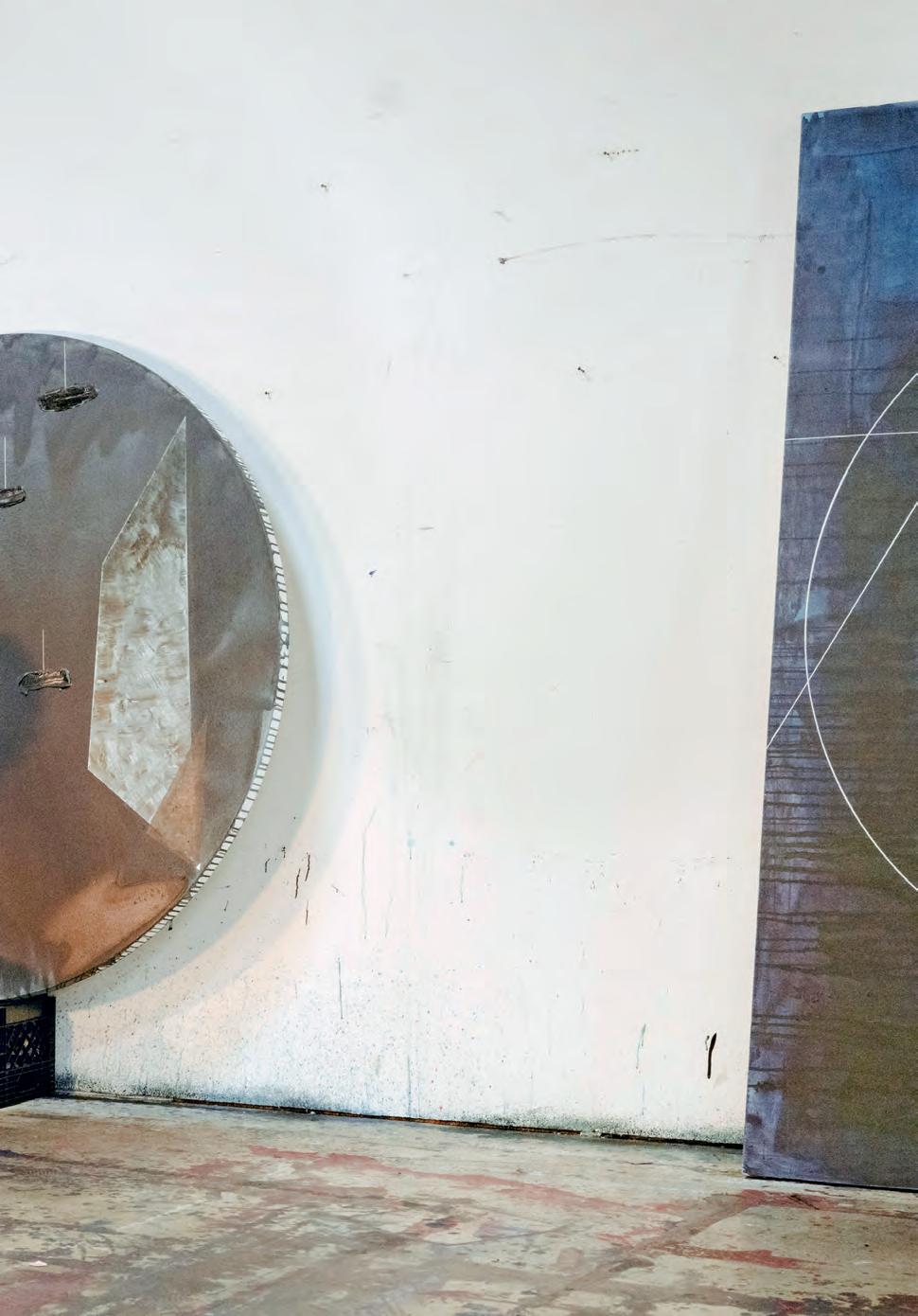

“Sound is a new medium for me, but if I think about the rhythm of the mark, I don’t get lost.”
—TORKWASE DYSON

socio-ecological perils of our time for over two decades. The issue of climate disaster and infrastructure has haunted her since Hurricane Katrina. While Dyson was teaching at Spelman College in Atlanta, she welcomed some 30 displaced friends from the ravaged region until they were able to return home or settle elsewhere. “It was the definition of environmental racism,” she says of the natural disaster’s fallout. “I needed a multiscalar response. I started studying solar energy, zero-net architecture, the Army Corps of Engineers… anything that would get me closer to [understanding] why the levees failed.”
Shortly thereafter, Dyson began her “Black geography” series—stark, pared-down drawings
“I’ve said it before—I am surviving abstraction with abstraction.”
—TORKWASE DYSON
responding to the ways that enslaved people “stowed [themselves] away in architectural space for freedom.” The forms would later become what she dubs “hypershapes,” symbolizing the paths certain historic enslaved persons braved to
freedom. In Dyson’s sculptures, for example, the square evokes the crate of Henry “Box” Brown; the triangle, Harriet Jacobs’s garret crawl space; and the curve, the hull of Anthony Burns’s ship from Virginia to Boston in 1854.
Currently, Dyson is at work on two major projects that push her well past her comfort zone. In May, she will unveil her design for the Metropolitan Museum of Art’s “Superfine: Tailoring Black Style.” The Costume Institute’s annual spring exhibition—inspired this year by Monica L. Miller’s 2009 book Slaves to Fashion: Black Dandyism and the Styling of Black Diasporic Identity—explores the sartorial significance of the Black dandy, from the 18th century through the

present. “The first challenge is the almost 10,000 square feet I need to fill,” admits Dyson. “Can this geometric space be a container for this kind of transhistorical Black life? It’s still a big question for me.”
That same week, the Public Art Fund will present an eight-channel soundscape by the artist in a sculptural pavilion in Brooklyn Bridge Park. “I wanted to give Torkwase an open invitation to respond to the space,” says Public Art Fund Senior Curator Melanie Kress, who witnessed the emotional impact of Dyson’s use of sound in the Old North St. Louis neighborhood in 2023, where a monumental curvilinear structure for the Counterpublic art festival looped the music
“How do you address surviving the brutal violence of erasure?”
—TORKWASE DYSON
of ragtime composer Scott Joplin. Powered by a solar generator, the black-painted wood sculpture, Bird and Lava (Scott Joplin), consisted of small stools for visitors to sit in its center, a bona fide open-air chapel.
“I saw the way she held space for people through art in the public realm,” recalls Kress. “That was the inspiration.”
For the Public Art Fund commission, Dyson collected field recordings of family and friends talking and laughing to create a hyperreal soundscape that shifts as audiences move through the space. “I’m interested in a multisensory experience that emotionally connects us to the poetics of the space between our words—I’m thinking about this work as something between sculpture and architecture,” she says. “I wanted to think about sound through the lens of drawing—sound is a new medium for me, but if I think about the rhythm of the mark, I don’t get lost.”

At first glance, the 42-year-old visual artist Alvaro Barrington and Maximilian Davis, the 30-year-old creative director of Ferragamo, have little in common aesthetically. Barrington, who has solo shows opening in February and March, respectively, at Thaddaeus Ropac in Seoul and Sadie Coles HQ in London, is known for creating immersive installations that are kaleidoscopic in color, texture, and sound. Meanwhile, Davis—one of the youngest creative directors of a major fashion house and a favorite of the first-name crowd (think Beyoncé, Rihanna, and Kim)—is known for clean lines, pared-down silhouettes, and the slick use of leather and lamé.
Yet, the duo have a long list of shared influences, from dance to their grandmothers to Carnival and other cornerstones of Caribbean culture. (Barrington grew up between Grenada and Brooklyn; Davis was born in the U.K. to Trinidadian-Jamaican parents.) Both men are also committed to infusing the often-uptight worlds of art and fashion with a sense of dynamism, community, and play. In the following pages, they compare notes on the creative process.
[last fall] and saw this piece of yours [featuring American rapper DMX] that made me giggle so much. When I first saw it, I was drawn to the colors and the craft that went into it. I had no idea it was DMX until the gallerist held up his phone with a picture of him. To me, it was a personal moment because I remember [listening to] Ruff Ryders growing up. My sister had a T-shirt with [them] on it. I’ve always found it interesting to bring more personal research into my practice.
Alvaro Barrington: One of the things that makes our practices exciting is that it feels like the world is catching up to the culture we grew up in as a form of value. DMX brought this energy after the vacuum Tupac left behind. So much of rap is about craft—it’s about your ability to put words together in a certain way. [In your practice], you sometimes get associated with minimalism. You’ve reduced the language to start thinking about not only the craft of tailoring, but also culture and all of those things you can build out from it.
Davis: When I started my brand [Maximilian, in 2020], I had the desire to do a lot more research into my grandmother’s heritage. I
remember going to Trinidad for Carnival every year, but I had no idea why I was going or why it existed. It’s not something I was taught in school, and it’s not something my school could ever teach me. When my grandmother passed away, I was going through all of her stuff, and that led me down this path of understanding her and the heritage of my family—like the reason why my great-grandmother moved to Trinidad, and why my grandmother moved from Trinidad to the U.K. There was so much richness in that heritage, but my aesthetic was the complete opposite. Like you said, it’s very restrained in a way. But when two things don’t speak to each other, I find that tension to be the most interesting starting point. It becomes something unexpected, something that people can talk about or question. And if you’re creating work that leaves people questioning, you invite them into your universe, which is what you do as well.
Barrington: That [reminds me of] the distinction between how Richard Serra uses minimalism versus how Felix Gonzalez-Torres uses minimalism. With Serra, it was really about a reduction that was about industrialization, whereas with Felix, it was more about a reduction to think about the body.
“I WANT TO TAKE RISKS, SAY SHIT I SHOULDN’T SAY, DO THINGS I SHOULDN’T DO, MAKE WORK I SHOULDN’T MAKE, BUT AT THE END, JUST AGE GRACEFULLY.”


“I WAS TALKING TO A FRIEND WHO SAID, ‘WHEN I SEE SOMETHING GREAT, I FEEL IT IN MY COOCHIE.’ I FEEL IT IN MY EGO.” —ALVARO BARRINGTON
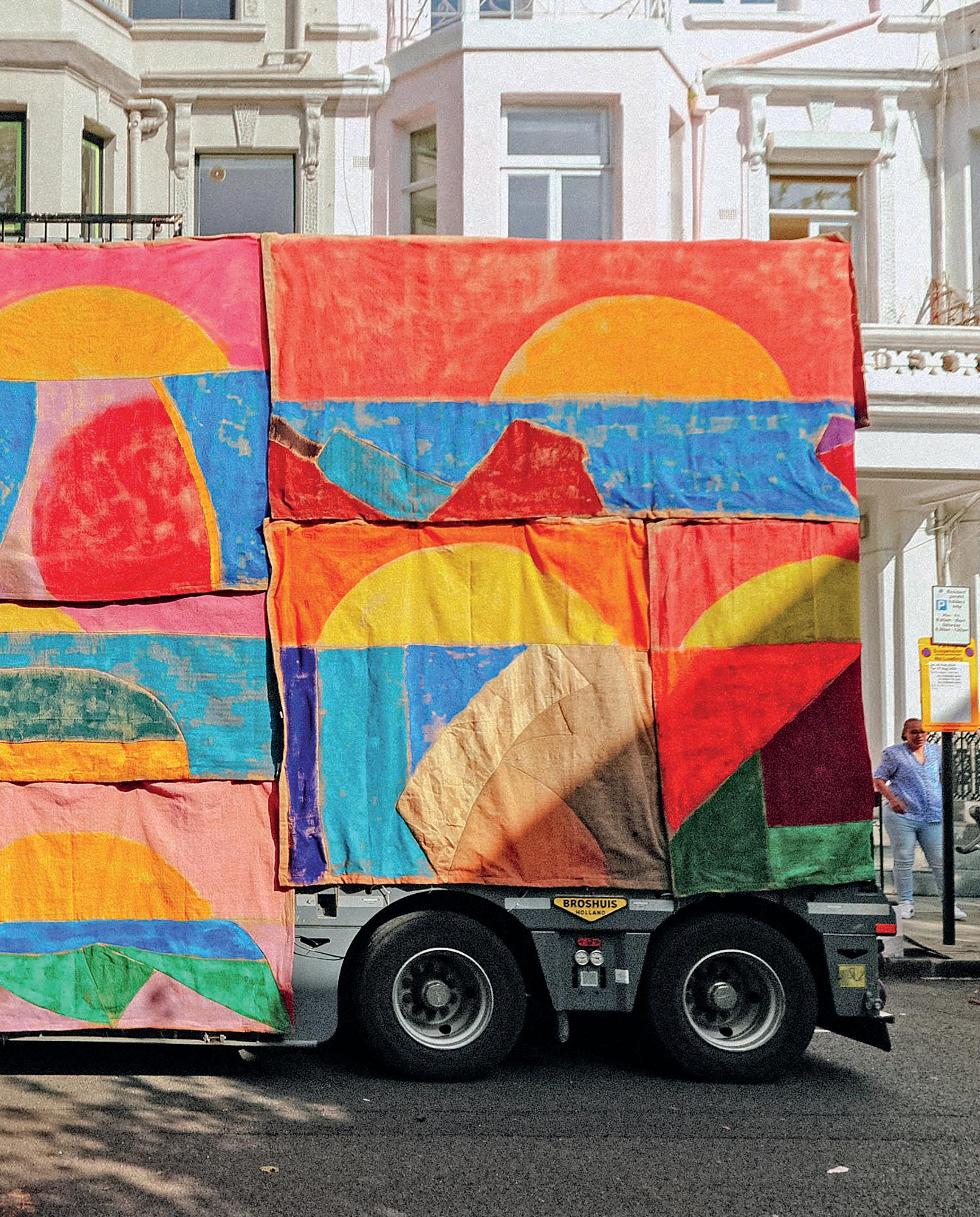

“WHEN I MAKE CLOTHES, I DON’T WANT THE CLOTHES TO WEAR THE PEOPLE. THEY NEED TO WEAR THE CLOTHES.” —MAXIMILIAN DAVIS
One of the most meaningful artworks that has ever existed is [Felix’s] “Untitled” (Perfect Lovers). It’s just these two clocks—[a metaphor] for him and his partner Ross [Laycock], who both had HIV. As one clock’s battery started to die before the other clock’s, just like their bodies started breaking down at different points, the timing became off. That was an extremely poetic, minimalist reduction. I was looking at some of your runway shows, and I felt that same kind of tension, where it’s about opening you up to other things.
Davis: When I make clothes, I don’t want the clothes to wear the people. They need to wear the clothes. There’s so many different reasons for wanting to wear clothes. The one thing I understand so much more now—especially with the way that people are dressing and buying and making things—is that the sense of comfort, whether it’s mental or physical, is super important. If you are comfortable, it shows in how you’re carrying yourself.
Barrington: It’s about authenticity, I guess. Authenticity was so much a part of the culture I grew up in. You could tell by the words that would get made up, like “keep it real” or “keep it a hundred.” They’re all saying the same thing: Be yourself, don’t be a fucking bozo. Versus, maybe the generations in the ’70s and ’80s, when I look at some of their outfits, it was more about a “bigness.”
Davis: In the ’70s and ’80s, people were just living the way they wanted. They were very carefree, and that expression of freedom was obviously translated into clothing. I was having a conversation with one of my designers, who had found a book of fabrics. I was like, “This is insane. The colors are so great. When is this from?” And he was like, “The 1920s.” If we were googling what people were wearing in the 1920s and ’30s, we’d only see everything in black and white. But because of this one book, I have a slightly better understanding of the colors and prints being worn at that time. It’s great that we’re able to see the references from the ’70s and ’80s—the freedom and all of the joy that was put into the parties, the music, the lifestyle, the clothing.
Barrington: What I love about fashion or art is that if you do research, you’re like, “Oh, this thing had so much life in it.” It’s not just this Wikipedia page of history that we’re reading. [Picasso’s] Les Demoiselles d’Avignon is like Tupac’s “I Get Around.” Picasso’s moving to Paris; he’s a foreigner and having sex with a bunch of sex workers. One of them might have given him an STD. You realize that people 150 years ago were living just as crazy lives as we are today. There are people that make incredibly wonderful, innovative decisions in every generation. We forget that we have so many answers in the past, and that you can remix them. That’s what I loved about growing up in my generation of hip hop. It was about the remixing of something, then chopping it up, screwing it up, slowing it down. Do you have a soundtrack at the moment?
Davis: Every season I make a playlist of what I feel suits the mood of the collection. The only person I share it with is Yasmina Dexter, who does music for our runway shows. We have this back and forth on music and what we feel the show is about. It ranges from 12 to 30 songs. It’s everything that goes through my mind in a collection, but in music.
Barrington: I was talking to a friend who said, “When I see something great, I feel it in my coochie.” I wonder if there’s a similar analogy for you. Do you design clothes through a feeling in your body or your mind? Like I feel it in my ego.
Davis: Definitely. When I hear a certain song, it sets a mood, which then reflects a color or a sense of movement, whether it’s how the model’s walking or the fabric that the model’s wearing … I’m a daydreamer when I’m by myself. I find that when I go home, I’m not watching TV or reading a book. I sometimes just sit there and create a world in my head. When I do a collection, I daydream about what the collection will look like before I even know what the mood and the concept is sometimes.
Barrington: That’s sort of the definition of an artist: You live in a thing that hasn’t been created and then you fight your way to get it created against a system telling you that you’re certifiably crazy.
Davis: That’s where the tension comes from. Only you want it there and only you can understand it. And now it’s your job to make it clear for other people. Obviously, I’m not saying all my collections just come from my mind. When I first started working at Ferragamo, I would go into the archive every season. With my Spring/ Summer 2025 collection, I knew that I wanted to talk about ballet. Salvatore was known for making shoes for people in different professions, including dancers. I found that Salvatore made shoes for Katherine Dunham, who was one of the first Black ballerinas. It opened up this whole new world for me.
Barrington: I have a similar creative process. I’m obsessed with the body and performance. Before I even started agreeing to gallery shows, I organized a series of concerts and performances. I really wanted to see the Alvin Ailey show at the Whitney because there’s a lot of overlap in terms of dancing and painting and innovation. This year, we’re going to do a bunch of performances, including these ballet plays with my paintings as a backdrop.
But what’s so special about the jobs that we have is the curiosity that unfolds into this engagement with history. It’s probably the greatest gift. You’re talking to history, you’re talking to the present, you’re talking to life. Maybe the best part about working at a heritage house is the research?
Davis: The research is the peaceful part.
Barrington: I really like that you talked about
your grandma earlier, and going back to Trinidad and seeing that innovation that she was doing, then bringing that forward.
Davis: You have to be authentic for it to feel rich. Another reason why I decided to research my grandmother and my heritage was that I was working for brands beforehand, and I was really just doing research for them. It just wasn’t personal for me. I felt like the only way I could cut through the noise of what was happening in the world at that time—in lockdown—was to talk about what I could actually talk about with the most confidence. There’s so much that came from educating myself, my friends, and my family about what Carnival is. It’s a celebration of freedom.
Barrington: One of the things you bring up is being comfortable in your body. Compared to American culture, the Caribbean is so much about embracing your body. In Carnival, you’ll see a 300-pound guy in a bikini, and he’s having the best time of his life. I wonder how much of that comes from being allowed to embrace your body versus having to protect your body.
Davis: I grew up in Manchester—nothing like Trinidad or Jamaica, where my parents were from. When I was growing up, my sisters would want to wear miniskirts or bikini tops, and my parents would say no, which created the desire to question why you can’t wear these things, but also [to] rebel against what they’re teaching. Again, it creates a tension where you need to explore more to make it make sense.
Barrington: One of my professors always said that there’s no great work without tension.
Davis: For me, and maybe for you as well, I feel like this is the beginning of history. I don’t want to sound arrogant, but what we’re able to do, and the platforms that we have to express our work, is amazing. I remember growing up and not finding many reference points for myself. And I just hope that we can be a reference for so many younger generations and keep going.
Barrington: What’s really cool about this is that we are young. I’m relatively young for painting, even though I feel old. But fashion and painting are two industries in which you can age. You have so many great legacies of all the fashion designers making work well into their 70s and 80s, like Vivienne Westwood or Karl Lagerfeld. It’s the same thing with painting. I feel like my job is to age gracefully and still be interesting when I’m 80, at least to the people of my generation and hopefully to those a little younger and older. I want to have my meltdown stage and be okay. I want to take risks, say shit I shouldn’t say, do things I shouldn’t do, make work I shouldn’t make, but at the end, just age gracefully.
Davis: Let’s check in again in 20 to 30 years.
The visual artist and chef, who share a penchant for pushing boundaries in their respective mediums, discuss food as art and art as food.
Adam Pendleton and Kwame Onwuachi want their work to linger in your mind and body long after any sort of direct encounter has ended. In a rave review of Tatiana, Onwuachi’s impossibleto-get-into New York restaurant, The New York Times said his truffle-blanketed twist on a bodega chopped cheese boasted “an ambiguity that we’re more used to finding in art.” Pendleton, for his part, is a master of such polysemy. In “Love, Queen,” a major solo exhibition opening April 4 at the Hirshhorn Museum and Sculpture Garden in Washington, DC, he presents paintings that aren’t quite paintings, developed through a head-spinning process of mark-making, photography, digital manipulation, and screen printing.
Both creatives draw on the history of DC in their latest work. One of Onwuachi’s latest restaurants, Dōgon, is inspired by the
contributions of Benjamin Banneker, a DC surveyor and descendant of the Dogon tribe, to the nation’s capital. Pendleton’s monumental video commission for the Hirshhorn draws on images of Resurrection City, an encampment erected on the National Mall in the spring and summer of 1968.
To mark their respective moments, the two met over Zoom to discuss how they pay tribute in their work and what bringing something new to the table really looks like.
ADAM PENDLETON: This is kind of a full-circle moment for me—and as close as I’ve ever gotten to doing a major show in my hometown. I grew up in Richmond, Virginia, so DC figured prominently in my imagination as a kind of cultural metropolis. And the Hirshhorn would’ve been one of the first museums I went
to growing up, where I had my first encounters with modern contemporary art.
KWAME ONWUACHI: That’s really dope, man. I know how cool it is to have something in your own city, like Tatiana in New York is for me. My connection to DC stems from my grandfather, who taught anthropology and African American studies at Howard University in the ’60s and ’70s. When he came back to visit from Nigeria, he would stay in DC, so I spent my summers there throughout my childhood. When I got a chance to open up my first restaurant, it was offered to me in DC. Before that, I was a line cook making, what, $10 an hour? Then I got an opportunity to run my own restaurant and get a salary in DC. Now Dōgon is the sixth restaurant I’ve opened here.
PENDLETON: Before this, I watched your Chef’s


“WHEN YOU THINK ABOUT ART, IT’S SOMETHING THAT ADDS MEANING; IT COLORS EXISTENCE. IT DOESN’T SUSTAIN
THE BODY, BUT IT CAN SUSTAIN THE SPIRIT.”
—KWAME ONWUACHI
Table episode. You guys are so lucky. Artists don’t have anything like that—something that distills our biography and tells the audience who we are. It’s always so much more complicated for us. Sometimes you have this idea that everybody who’s successful has had this very easy path, but I feel a kinship with you because I think we’ve had trials and tribulations and moments of regression and rejection and used them as opportunities to move things forward. This is always happening for me, even in the daily process of working in the studio. Sometimes the work rejects me and I need to try to find my way back into it.
ONWUACHI: I can totally relate to that. For me, it’s always about telling a story. If a dish tells a story, it has a soul. You’re not cooking for perfect seasoning; you’re cooking to share something with someone. That’s what resonates with me—figuring out how to use the dish to express something meaningful. It’s like, “What am I trying to say?” It’s also sustenance—people have to eat to survive. But if you are creating an experience like a restaurant, then you need to think on that next level of what you’re trying to convey. The message at Dōgon is: There would not be DC without West African science. The Dogon tribe, through its lineage, birthed Benjamin Banneker, who was a [freeman] that created the borders of DC by mapping the stars and constellations. The only reason he knew how to do that is because he was a descendant of the Dogon tribe—a tribe of scientists and astronomers. So that’s the story of Dōgon.
PENDLETON: I’m not so much trying to tell a story because, for me, that suggests there’s some sort of traditional arc, like a beginning, middle,
and end. But I am trying to create an experience. I’m really investigating the power and potential of abstraction, and insisting on the right to exist within its possibilities. In that way, I’m kind of rejecting narrative and trying to move past it to be in this other space where things are more fluid.
Sometimes I refer to it as a kind of “complex real,” where many things are happening at once. It’s anachronistic. It’s not the past, it’s not the present, it’s not the future—it’s about how we can experience the confluence of those temporal realities at any given moment.
ONWUACHI: When you think about art, it’s something that adds meaning; it colors existence. It doesn’t sustain the body, but it can sustain the spirit. And food might start with sustenance, but it has the potential to transcend into an art form when you start layering in intention, creativity, and storytelling. It’s like building a house—you need a strong foundation before you can decorate or design it.
PENDLETON: In my own work, there’s a necessity to create, but it’s not the same as the necessity to eat. Even if it’s not physically required, it contributes to the experience of being alive.
ONWUACHI: Art is such a gift of life, even if it’s like drumming in class with a pencil or taking a crayon, and writing “Fuck my mom” on the wall. I don’t encourage any child to [say that to] their mom, but having that free will to express yourself is also a part of life.
PENDLETON: I like this idea of a tribute. Tatiana’s named after your sister, right? I make
these drawings every now and again; they’re called “Hey Mama Hey” and they’re a tribute to my mother, obviously. But I often think that these pursuits—we’re pursuing dreams here, right?—are always a tribute to someone. For me, it’s a tribute to my family, who allowed me to live a life [where I could] follow this path. But I do feel like there’s a certain kind of responsibility to a life that is led in pursuit of a dream.
ONWUACHI: I don’t think it’s quantifiable by success, because I’ve met a lot of successful people that aren’t really happy. For me, the journey is the reward also. When I was coming up, the air smelled a little different, the mornings felt different, the late nights felt different because I was chasing a dream.
PENDLETON: To forget the tribute and the possibility is an unhappy life.
ONWUACHI: It’s easy to forget. It’s easy to get comfortable in whatever space you’re in … How do you feel about your Hirshhorn show?
PENDLETON: I’m as ready as I’m going to be. This show’s very much focused on my contribution to contemporary painting, or more specifically contemporary American painting. I’m trying to make a kind of cultural and visual and conceptual argument about the space I can occupy as a contemporary American painter. And really ask, What is painting? There’s been a kind of conservatism that’s emerged in the past 10 years or so [around] expectations for painting. I’m trying to free things up and attempt to do something that is radical and generous.
ONWUACHI: I can’t wait to experience it, man.
This
BY ELLA MARTIN-GACHOT
cult
Saveri’s decade-long ode to the lunar cycle gets the monograph treatment.
September 2014 was an eventful month for Lele Saveri. “I lost my wallet. I lost my passport. My bike got stolen,” the New York–based photographer and community organizer remembers over Zoom. “All of these things seemed [to be happening at once]. I was like, I wonder if it’s the moon?” He pulled together visual evidence from the month and compiled it into a zine—a practice that’s followed him since his childhood in Rome and led him to co-found the cult art collective 8-Ball Community in 2012—dubbing it Luna. “Once the next full moon came, I was like, Should I make another one? ” he continues. “Okay, let’s make another one.” A decade later, the project is still going; Saveri is down-
loading images for a new installment as we speak. Over the years, the compilations have mostly fallen into the hands of close friends, though a few have made their way onto zine-fair stands or bookstore shelves. This winter, Saveri’s time capsules will find a new audience, with Dashwood Books publishing Luna 10 Years, a chronological journey through the zine’s archive. Images of eclipse watch parties and fly coitus abut landscape fragments and, of course, the moon in all of her tempers. In the following pages, Saveri exclusively shares a few images from the book. An EMS worker by day, he knows something about the transitory nature of life, and Luna revels in its ephemera.













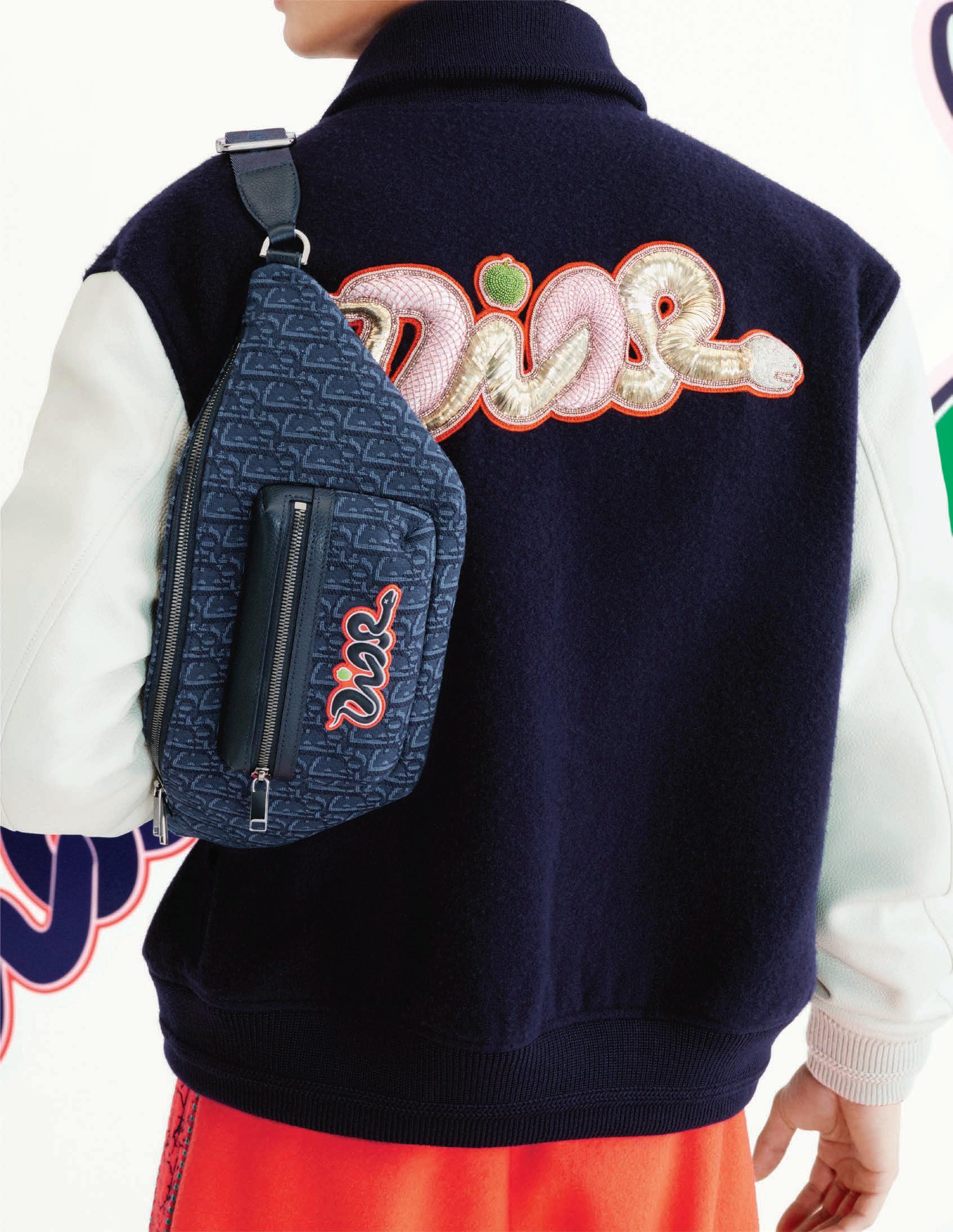
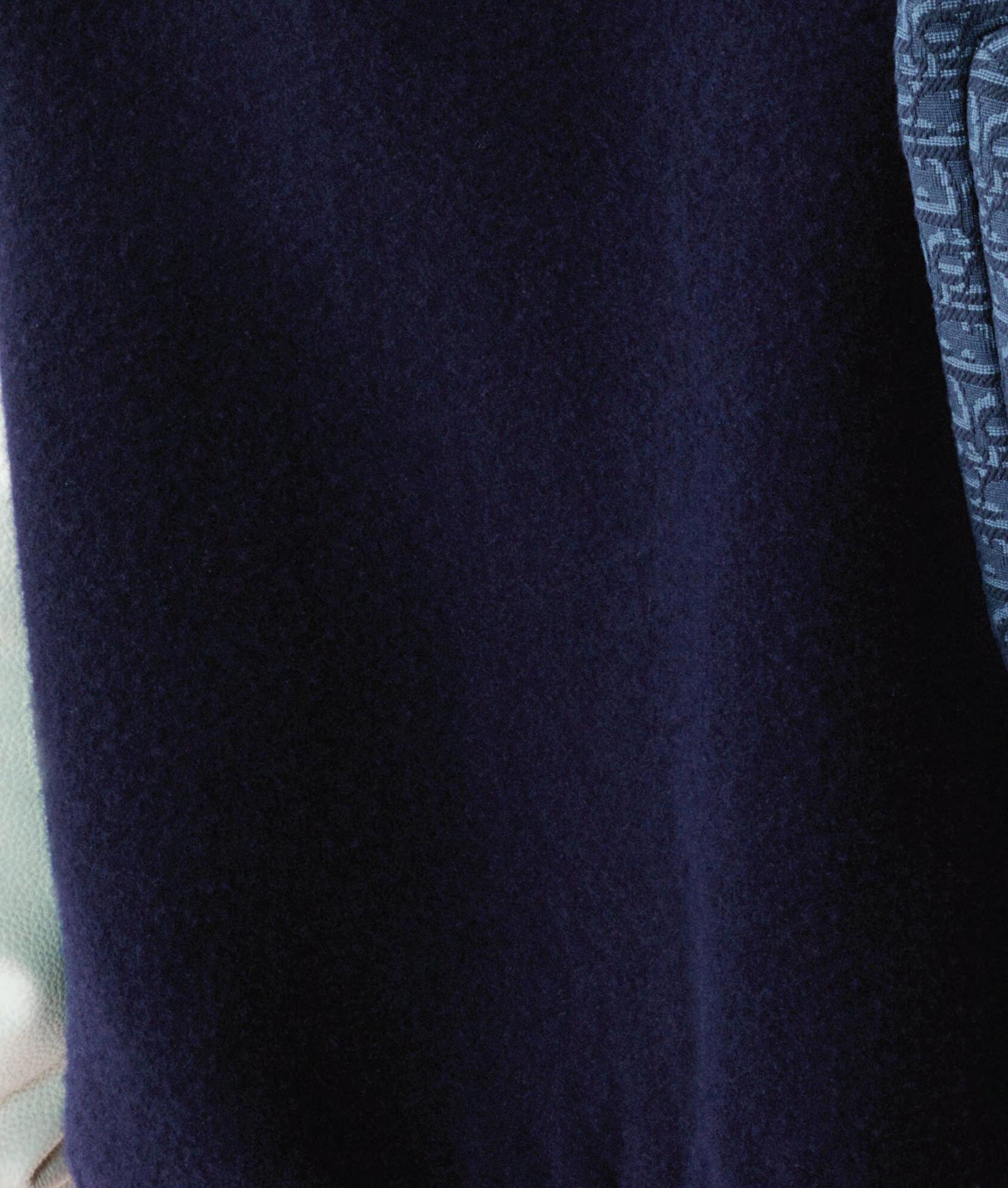
THE FRENCH HOUSE’S LATEST CAPSULE COLLECTION BLENDS THE INDOMITABLE SPIRIT OF ITS FOUNDER WITH KAWS’S HIGH-OCTANE FLAIR—ALL UNDER THE WATCHFUL EYE OF CREATIVE DIRECTOR KIM JONES.
WHAT’S IN A NAME? THAT DEPENDS.
CHRISTIAN DIOR’S NAME APPEARED AS THE LOGO OF HIS EPONYMOUS BRAND IN 1948—A YEAR AFTER THE CINCHED WAISTS AND ABUNDANT SKIRTS OF HIS LEGENDARY DEBUT COLLECTION, “THE NEW LOOK,” PUT THE INTREPID PARISIAN DESIGNER ON THE MAP. IN THE FOLLOWING DECADE, DIOR BECAME SYNONYMOUS WITH IMPECCABLE ELEGANCE AND HYPERFEMININITY, BRINGING A SENSE OF VIBRANCY BACK TO A BELEAGUERED POSTWAR PARIS.
FAST FORWARD TO 1980S NEW JERSEY, WHERE A TEENAGE BRIAN DONNELLY WAS DREAMING UP A NEW NAME FOR HIMSELF. HE DECIDED ON KAWS—FOR THE SIMPLE REASON THAT THE LETTERS LOOKED GOOD TOGETHER. SINCE TRADING THE WORLD OF GRAFFITI FOR THAT OF HIGH ART AND LUXURY COLLECTIBLES, THE ARTIST HAS BECOME A DEFT TRANSLATOR OF THE VISUAL CACOPHONY AND NOSTALGIC PULL OF OUR ERA, CHURNING OUT WORK THAT SETS THE SEMIOTICS OF STREET ART, FASHION, AND CONSUMERISM ON A COLLISION COURSE.
THIS YEAR, KIM JONES—THE ARTISTIC DIRECTOR OF DIOR MEN—TAPPED KAWS TO LEAVE HIS MARK ON THE HOUSE’S LATEST CAPSULE COLLECTION. INFUSED WITH AN EBULLIENT POP SPIRIT, THE PIECES—BOMBER JACKETS, TAILORED SWEATS, AND QUILTED SHIRTS SPLASHED WITH SHADES OF TANGERINE AND LIME—ARE CROWNED WITH ONE PARTICULARLY MEMORABLE TOUCH. DIOR’S CRISP AND HALLOWED LOGO IS TRANSFORMED INTO A PLAYFUL SERPENTINE CURSIVE, A PARIS-APPROVED HOMAGE TO KAWS’S GRAFFITI-INFUSED OEUVRE.


